[History of car home Car Series] In 1886, when Karl Benz successfully invented the world’s first three-wheeled car, he would never have thought that, more than 100 years later, Mercedes-Benz’s S-Class could become the guide of the global luxury car design direction. I believe that when it comes to luxury cars, the first thing that most people think of is the huge Mercedes-Benz S-Class with a three-pointed star logo on its front. With the official release of the new generation of Mercedes-Benz S-Class (W222) overseas, the global luxury car market will inevitably trigger a "big change" trend again. While enjoying the new generation of Mercedes-Benz S-Class, let’s review its "predecessors".
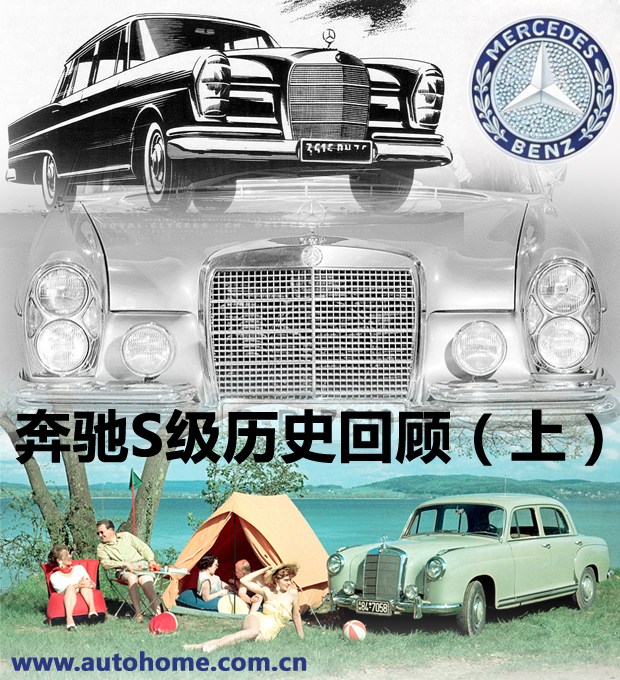
Editor’s note:Today, there are still different opinions on which model is the first generation Mercedes-Benz S-Class. Through the official reply from Mercedes-Benz, we will introduce the Mercedes-Benz W187 as the first generation Mercedes-Benz S-Class for the time being.
First generation Mercedes-Benz S-Class
Mercedes-Benz W187 Series (1951 -1955)
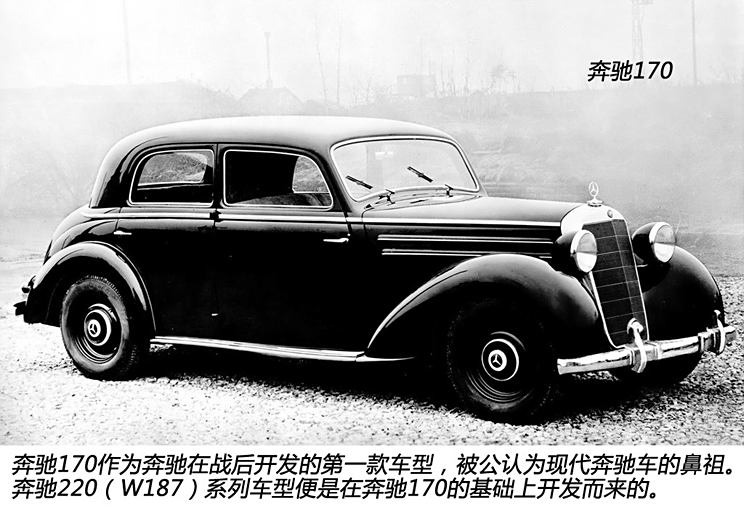
Mercedes-Benz 170 produced in 1947 is recognized as the originator of modern Mercedes-Benz. It is not only the first batch of models developed by Mercedes-Benz after the war, but also the prelude to the historical development of Mercedes-Benz medium and large cars. At the first Frankfurt International Auto Show held in April, 1951, Mercedes-Benz introduced the series of Mercedes-Benz 220 with the code name W187. The two representative Mercedes-Benz 170 and 220 established the development direction of the post-war Mercedes-Benz limousine and marked the beginning of the S-class moderns.
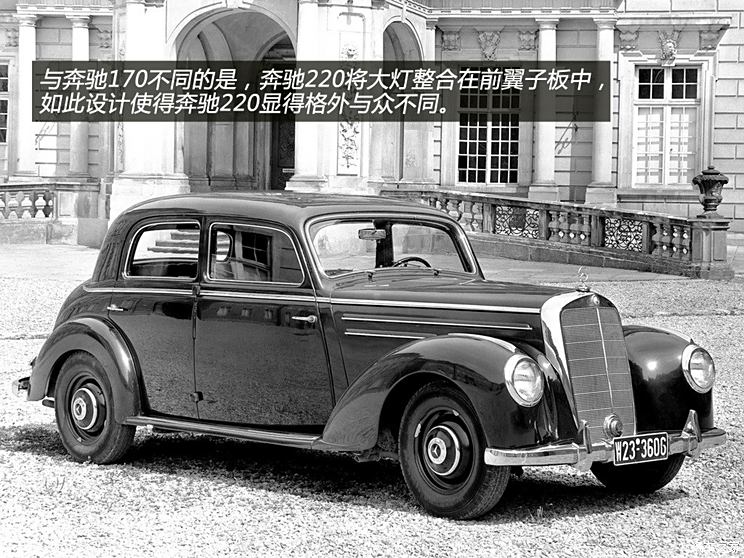
Mercedes-Benz 220 is a model developed on the basis of 170, and its appearance has been modernized and improved. Headlights were changed from external independent to integrated into the specially improved front fender to show the unique aristocratic spirit. Mercedes-Benz’s "Trident Star" stands above the large-area chrome-plated air intake grille, and the chrome-plated waistline running from the front to the rear highlights the body design level of Mercedes-Benz 220. The reverse door-to-door design also makes Mercedes-Benz 220 unique. The dimensions of Mercedes-Benz 220 are 4510mm long, 1685mm wide, 1610mm high, 2845mm wheelbase and 1350kg vehicle weight.
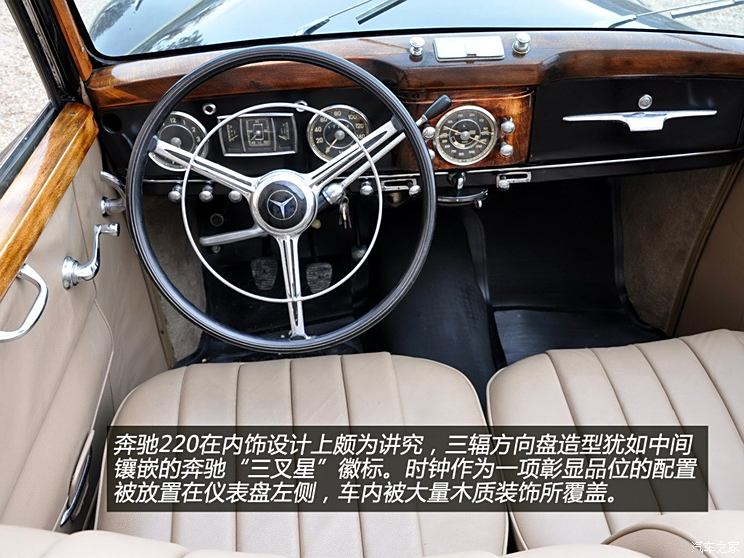
The interior design of Mercedes-Benz 220 allows you to tell the approximate date of its birth at a glance. Mercedes-Benz will not let go of the huge direction in the design details of 220, and the steering wheel with chrome-plated three-spoke design just echoes the "three-pointed star" in the middle. In order to show the luxury temperament of Mercedes-Benz 220, the interior of the car is covered with a lot of wood grain and chrome decoration. The left position of the dashboard is occupied by the clock, and this design can often be seen in future models.
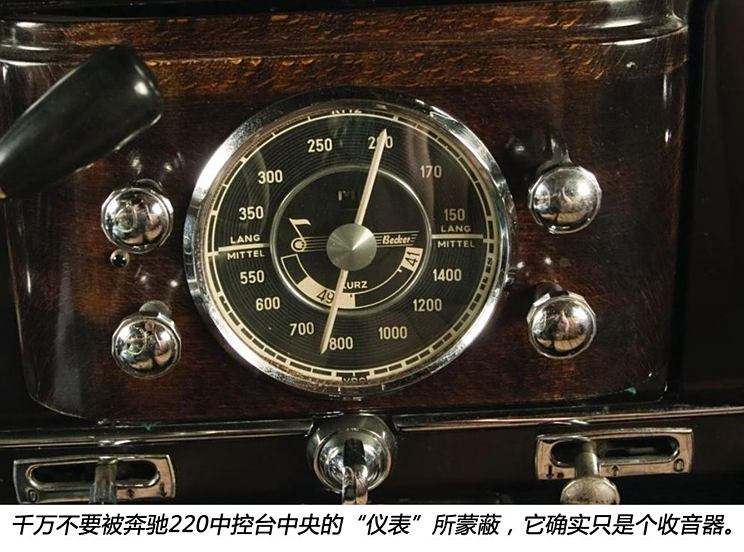
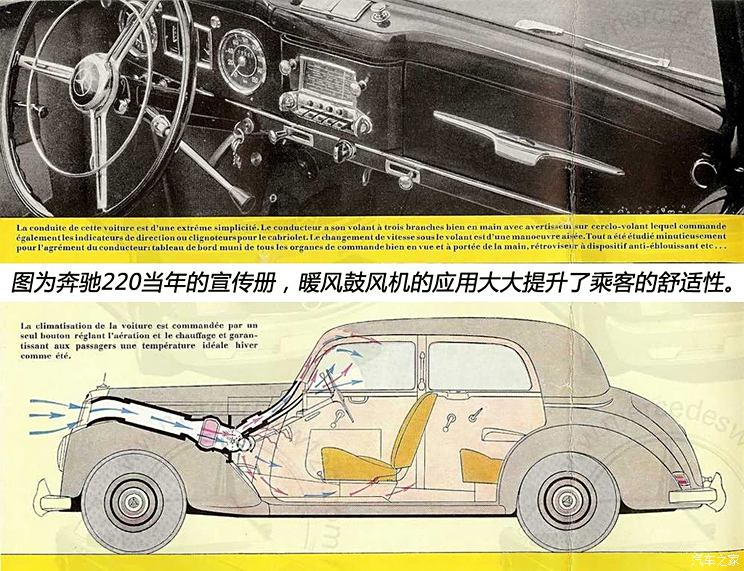
Don’t be fooled by the "instrument" in the center console. In fact, it is the only entertainment equipment in Mercedes-Benz 220-the radio. Warm air blower appeared in Mercedes-Benz 220 for the first time, and the conical pin safety lock with registered patent can prevent the door from bouncing off in an accident and ensure the safety of passengers in the car to the maximum extent.
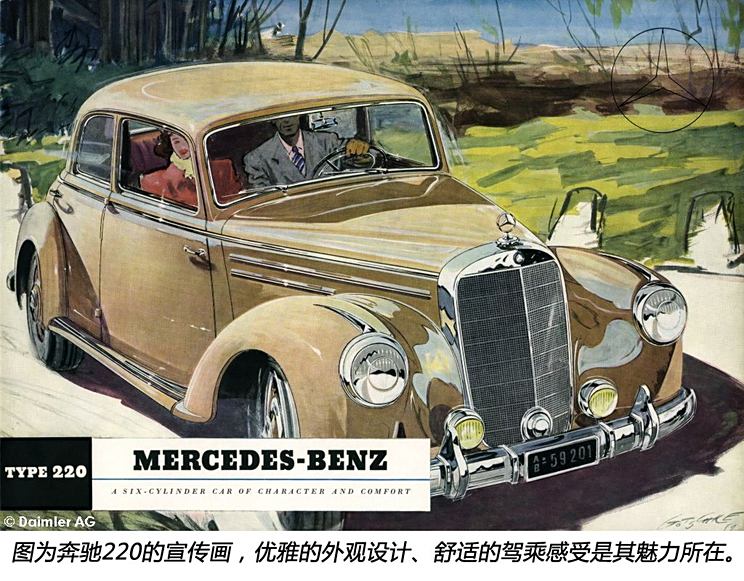
Mercedes-Benz 220 adopts double wishbone with front coil spring/rocker independent suspension structure with rear coil spring. Fritz Nallinger, the chief designer of the first generation S-class car, said in a report in 1951: "Mercedes-Benz 220 uses the latest shock absorption technology to install large rubber pads in the chassis, thus achieving excellent power and ensuring the comfort of the vehicle to the greatest extent."
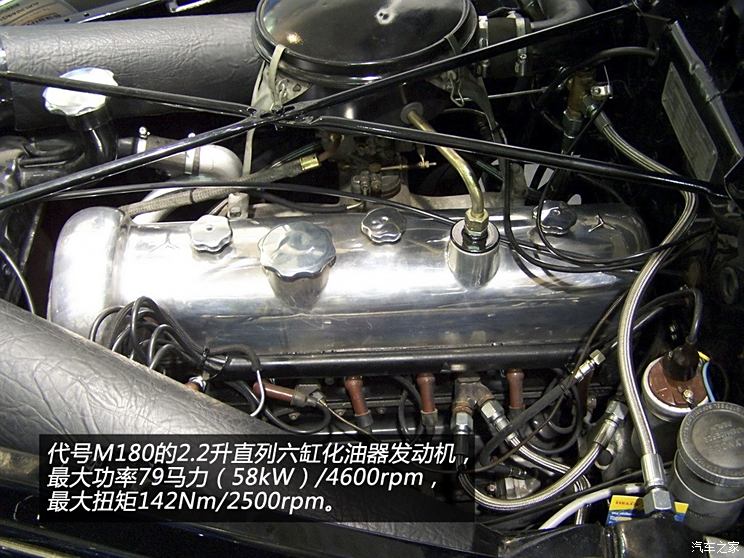
Mercedes-Benz 220 is driven by front and rear drive, equipped with a 2.2-liter inline six-cylinder carburetor engine code-named M180, with a maximum power of 79 HP (58 kW)/4,600 rpm and a maximum torque of 142 N m/2,500 rpm. Matching the engine is a 4-speed manual gearbox with a top speed of 140 km/h. In the face of powerful power, Mercedes-Benz 220 is equipped with front wheel double drum brakes to ensure better braking safety.
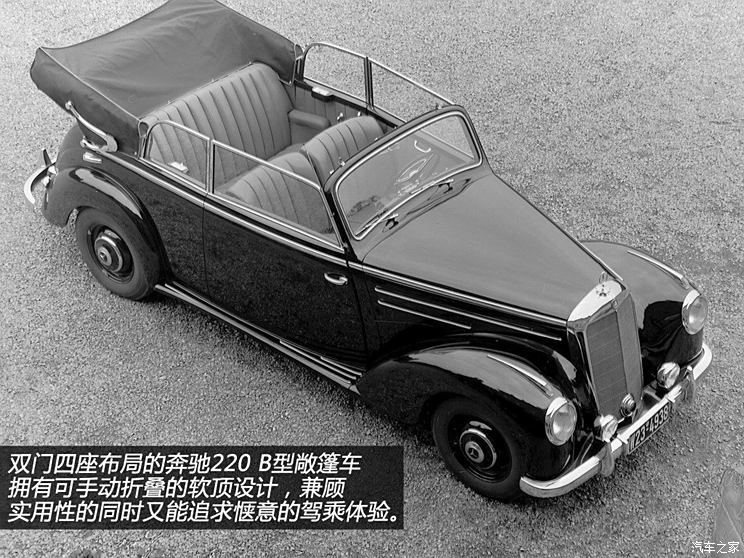
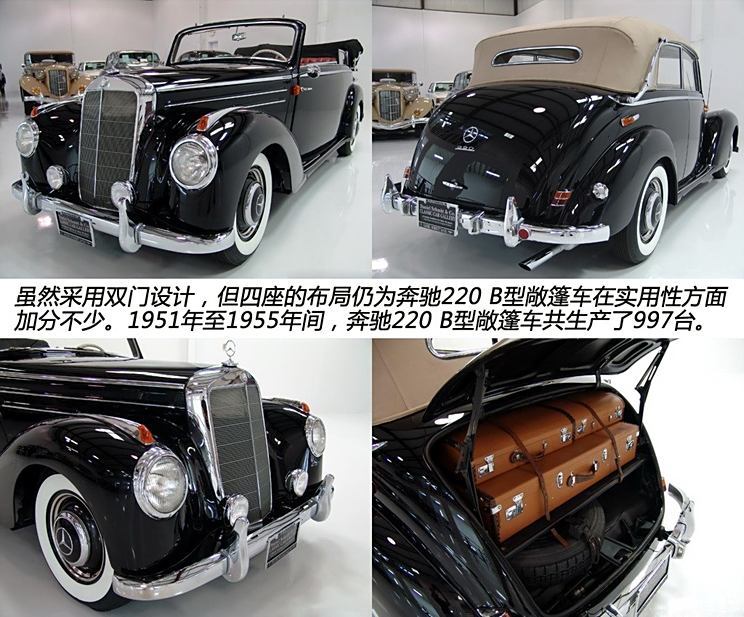
Mercedes-Benz 220 began mass production in July 1951. Shortly after its birth, it was favored by celebrities from all walks of life at that time because of its outstanding safety performance and tall and solemn appearance. In addition to the four-door sedan, Mercedes-Benz 220 also has two versions: A-type convertible (2 seats) and B-type convertible (4 seats). Both Mercedes-Benz 220 A and B-type convertibles adopt manual soft-top convertible design. Compared with four-seat B-type convertibles, the rear line of A-type two-seat convertibles is smoother, and its positioning tends to a two-seat convertible.
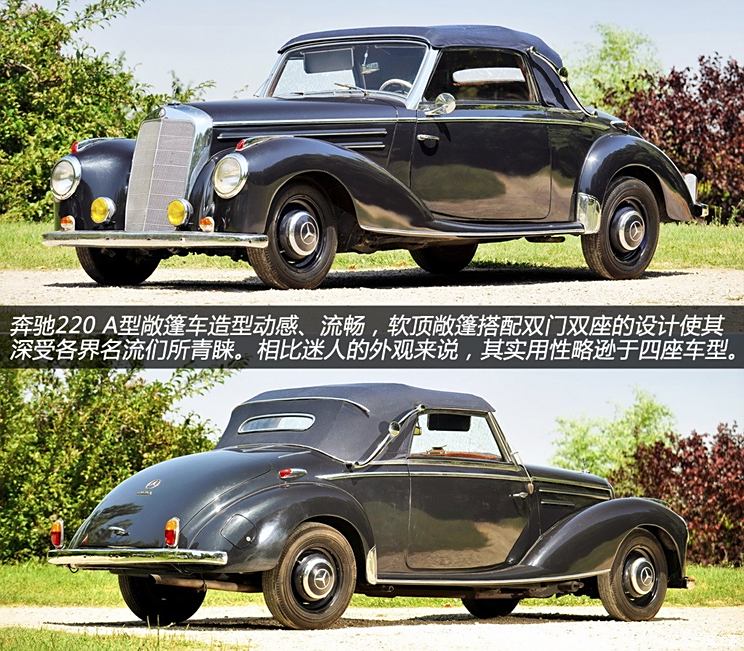
The trunk structure of Mercedes-Benz 220 sedan version and B-type four-seater convertible version is basically the same. In contrast, the practicality of A-type two-seater convertible version in pursuit of aesthetic feeling is slightly inferior. From 1951 to 1954, the Mercedes-Benz 220 sedan version produced a total of 16,154 cars, while the convertible version 220 was finally discontinued in 1955, including 1,278 A-type two-seater convertibles and 997 B-type four-seater convertibles.
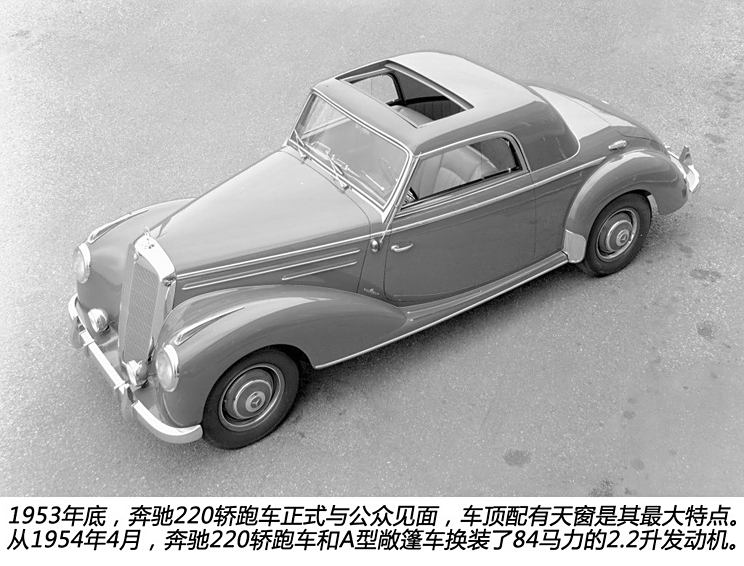
The coupe has appeared in the Mercedes-Benz 220 series since December 1953. Regardless of the price and production quantity (only 85 units have been produced), the Mercedes-Benz 220 coupe is the highest-level model in the whole car series. In terms of technology and modeling, the Mercedes-Benz 220 coupe is a brand-new model based on the A-type two-seater convertible, and the skylight is the biggest feature of the 220 coupe. Since April 1954, the A-type two-seater convertible and coupe have been replaced with a more powerful 2.2-liter inline six-cylinder engine, with a maximum power of 84 HP (62 kW)/4,800 rpm and a maximum torque of 157 N m/2,400 rpm.
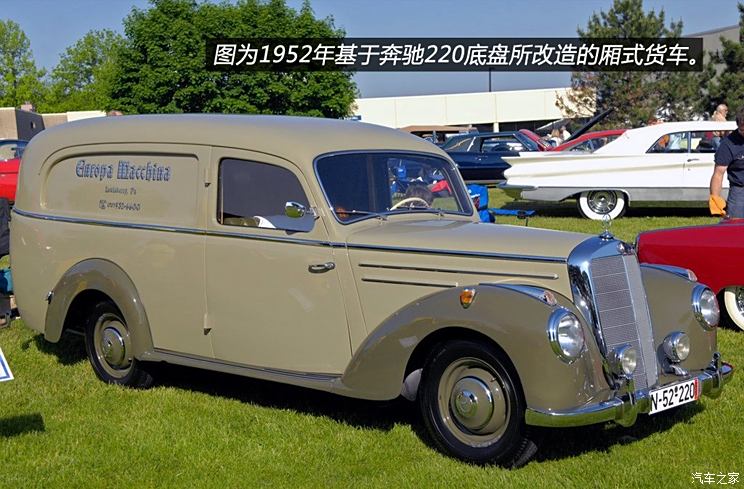
In addition to the above-mentioned models, Mercedes-Benz has also produced some special vehicles modified based on Mercedes-Benz 220. From August 1952 to May 1953, Mercedes-Benz manufactured a total of 41 Mercedes-Benz 220 station wagons for use as police vehicles. In Bochum, Germany, eight ambulances with 220 chassis rolled off the production line in 1952. Binz refitting company manufactured more than 30 Mercedes-Benz 220 police cars with radio equipment between October 1952 and July 1954.
?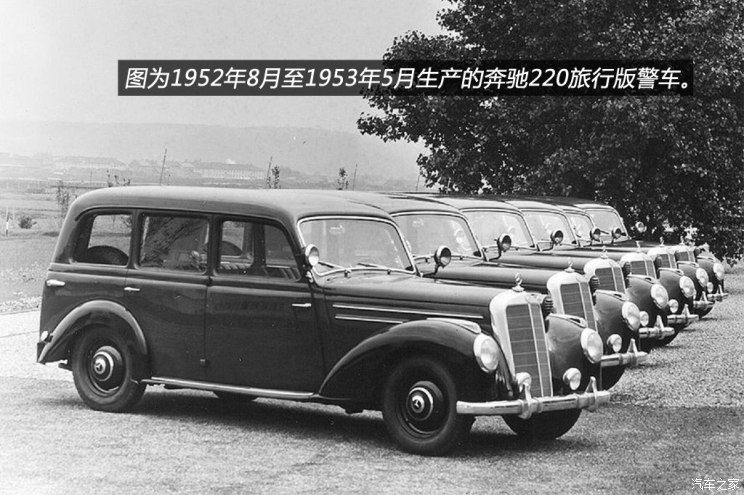
After the last Mercedes-Benz 220 B four-seater convertible rolled off the assembly line in Schindler Fingen factory in 1953, the Mercedes-Benz 220 sedan was also discontinued in May 1954. The production of the 220 coupe and the A-type two-seater convertible continued until July and August 1955, respectively. AMS, a famous German automobile magazine, spoke highly of the position of Mercedes-Benz 220 series in the history of global automobile development in the 23rd issue of 1951: "As the originator of Mercedes-Benz S-Class sedan, 220 model became the first luxury car in the world automobile industry that perfectly combined outstanding safety performance, passionate sports car temperament, superior comfort and dignity".
Second generation Mercedes-Benz S-Class
Mercedes-Benz W180/W105/W128 Series (1954 -1959)
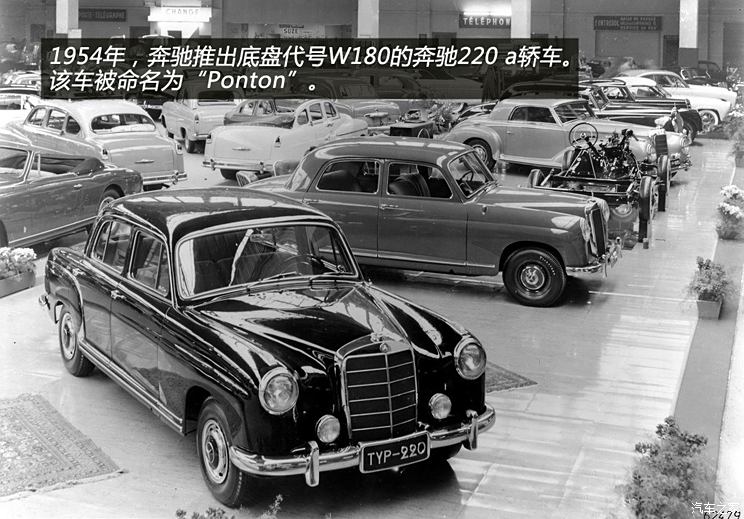
In March, 1954, Mercedes-Benz introduced the 220 a sedan (W180) with the same name "Ponton" based on the 180(W120) series, and the overall design of Mercedes-Benz 220 a was more modern. The styling design is in the same strain as the Mercedes-Benz 180 launched in 1953, and its slightly different proportion design gives the whole vehicle an unquestionable elegance.
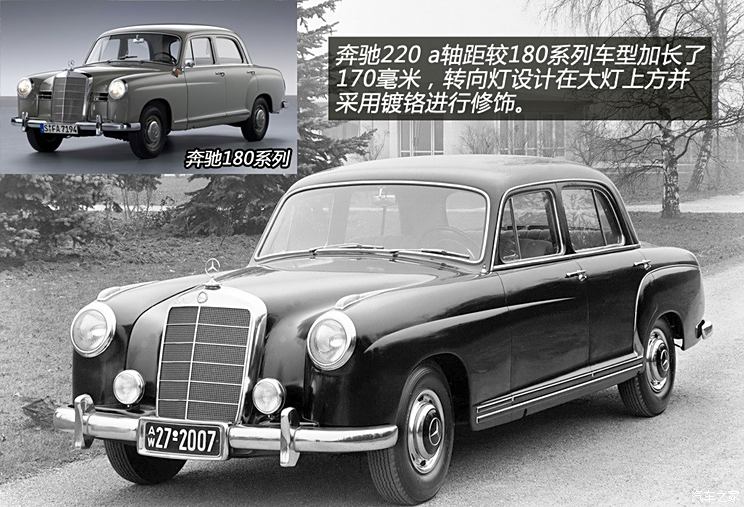
The wheelbase of Mercedes-Benz 220 a is 170mm longer than that of Mercedes-Benz 180 series, in which 70mm enlarges the leg space of the rear seat and 100mm extends the length of the front end of the car body, thus providing the necessary installation space for the six-cylinder engine. The dimensions of Mercedes-Benz 220 a are 4715mm long, 1740mm wide, 1560mm high, 2820mm wheelbase and 1300kg weight. The hood extends from both sides of the radiator grille down almost to the bumper, and the external fog lamp is the standard configuration of 220 a. Different from previous models, the front turn signal of Mercedes-Benz 220 a is installed in the chrome-plated housings of the fenders on both sides.
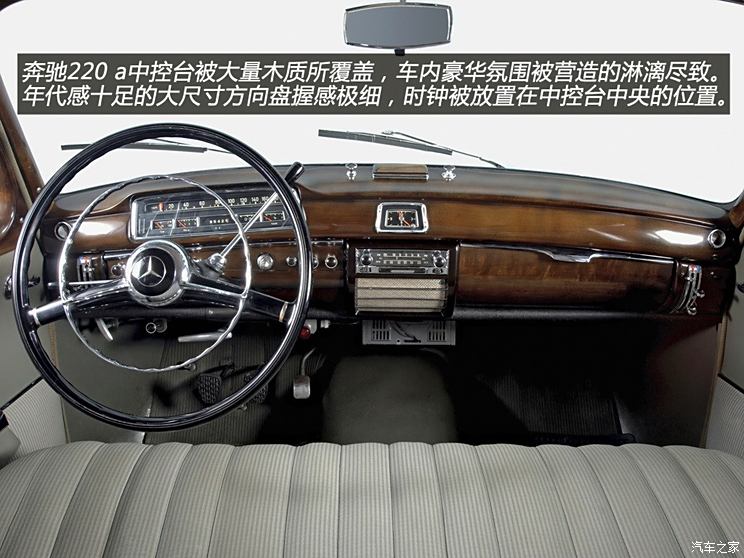
In terms of interior, the center console covered with mahogany creates a unique luxury atmosphere for the Mercedes-Benz 220 a. The steering wheel size and style are very chronological, and the front seat space is more flexible with the design of arms. The clock has become an indispensable design element in the Mercedes-Benz S-Class car. The natural wind and warm air levers are placed on both sides of the center console, and the front driver and passengers can adjust the air volume separately.
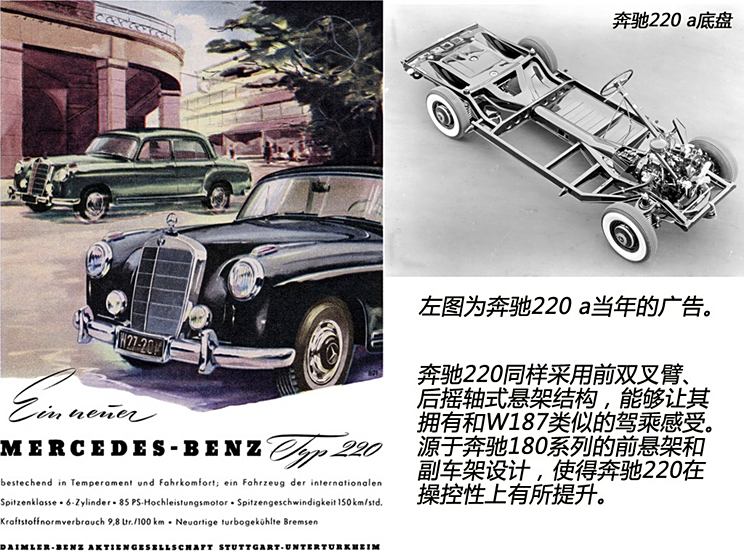
AMS, a famous German automobile magazine, once commented: "Even on the worst road surface, 220 a has precise steering, and it can even pass through the most difficult corners at high speed without any special steering correction". Mercedes-Benz 220 a adopts a load-bearing body design. The suspension structure of Mercedes-Benz 220 a is the same as that of the previous generation S-Class models, and adopts a front double wishbone/rear rocker independent suspension structure. The design of the front suspension and subframe originated from the 180 model, while the rear suspension adopts a newly designed low-center-of-gravity single-hinge-point rocker shaft type.
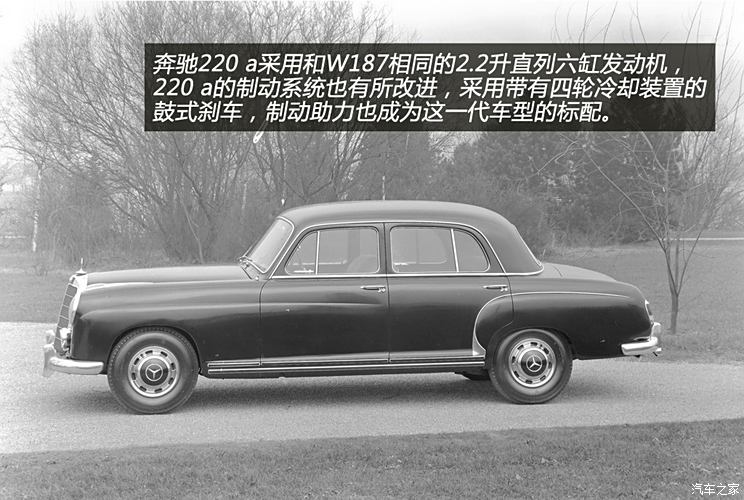
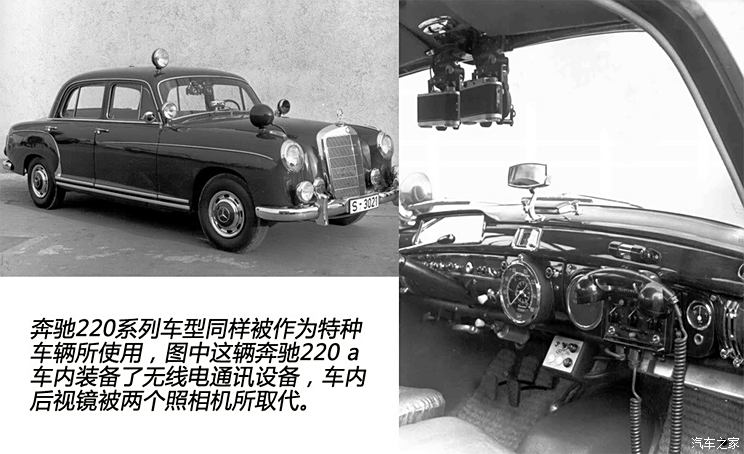
Mercedes-Benz 220 a adopted the 2.2-liter inline six-cylinder engine of the previous generation Mercedes-Benz W187 series, but made several improvements, adopting a higher compression ratio and a larger carburetor. At the same time, Mercedes-Benz has also improved the braking system of the 220 a, and the four wheels of the 220 a adopt a drum braking system equipped with a cooling device. Since September 1955, the brake booster has become the standard configuration of S-class cars.
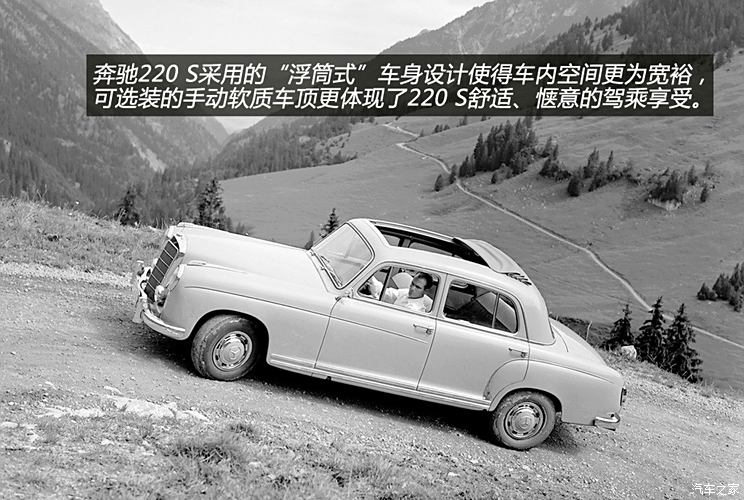
Two years after the appearance of Mercedes-Benz 220 a, Mercedes-Benz 219(W105) and 220 S(W128) with "pontoon" body design appeared in March 1956. The "pontoon" body can provide more abundant interior space, better external vision and unprecedented comfort. In addition, the overall rigidity of the vehicle is greatly improved, and the weight of the vehicle body is reduced, which significantly improves the safety and ensures higher fuel economy. China’s famous Shanghai brand limousine is designed and manufactured based on Mercedes-Benz 220 S.
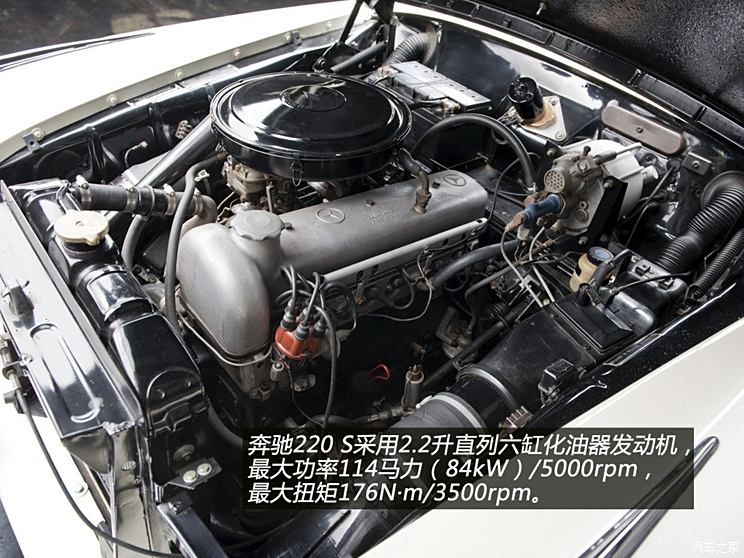
There is no obvious difference in appearance between Mercedes-Benz 220 S and 220 a, except that several chrome-plated decorations are added. As the successor of 220 a, Mercedes-Benz 220 S uses a 2.2-liter inline six-cylinder dual carburetor engine, with a maximum power of 114 HP (84kW)/5000rpm and a maximum torque of 176 N m/3500 rpm. It uses a 4-speed manual transmission and a top speed of 161 km/h.
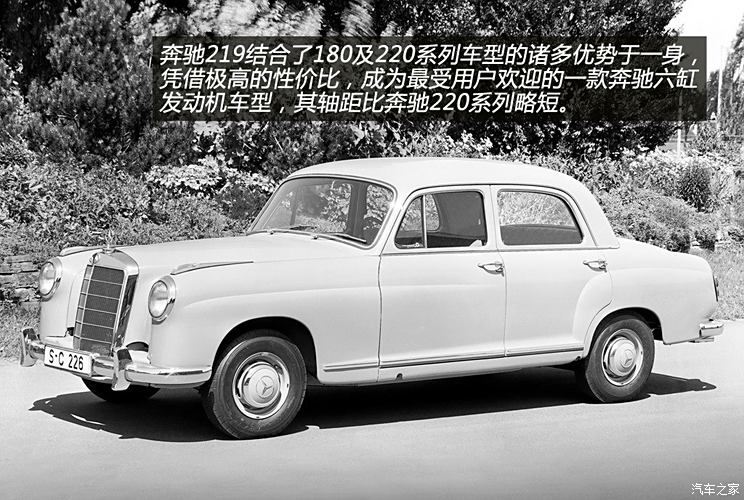
Another model launched at the same time with the 220 S is the Mercedes-Benz 219 code-named W105. This series of models combine the advantages of Mercedes-Benz 180 and 220 a to some extent, and become one of the most popular Mercedes-Benz six-cylinder engine models with its high cost performance. The engine of Mercedes-Benz 219 comes from the 220 a model, and the body and equipment from the A-pillar back come from Mercedes-Benz 180. Because the six-cylinder engine needs longer installation space at the front end, the front end design of Mercedes-Benz 219 is relatively long, while the rear end is relatively short. Therefore, the wheelbase and body length of Mercedes-Benz 219 are smaller than that of Mercedes-Benz 220 S, but slightly longer than that of Mercedes-Benz 180.
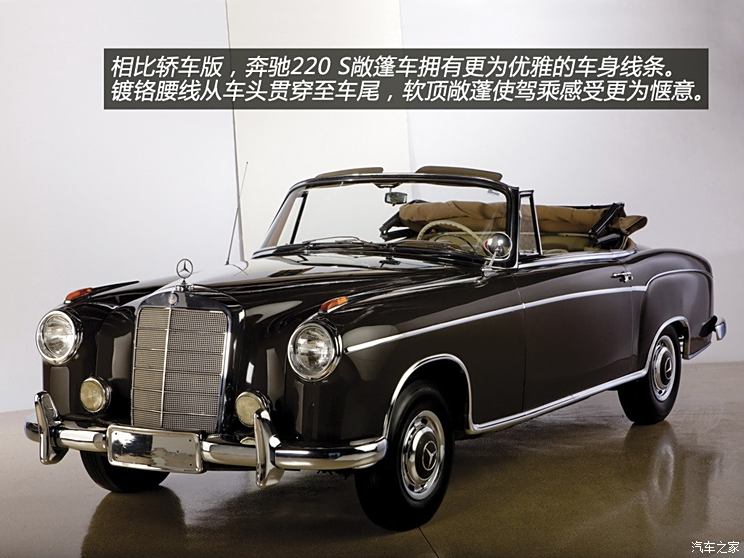
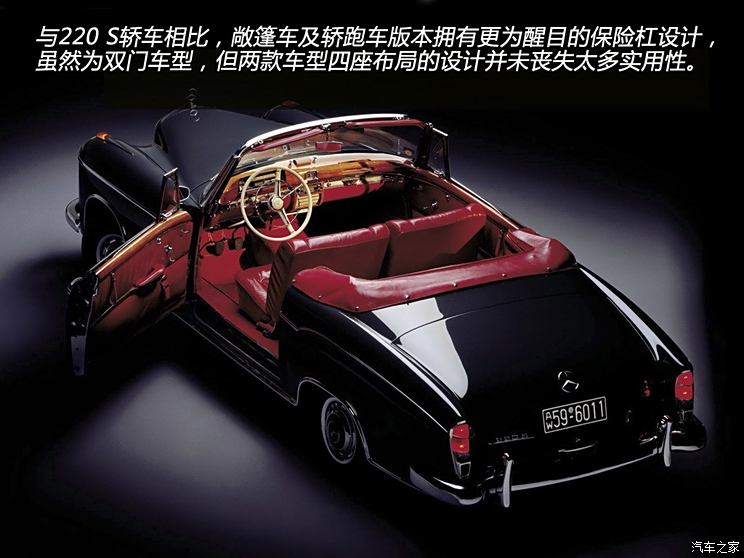
With the change of public demand, automobile engineers need to make vehicles have higher cost performance through a series of improvements to arouse more customers’ desire to buy. Under the guidance of this idea, almost all Mercedes-Benz models were improved in August 1957. As the compression ratio is increased to 8.7:1, the engine power of Mercedes-Benz 219(W105) is increased by 5 HP (3.7 kW) and that of 220 S is increased by 6 HP (4.4 kW). The Mercedes-Benz 220 S convertible was produced in July 1956, and the soft top design with manual folding was adopted. The double-door layout made the overall lines of the 220 S convertible smoother. The 220 S coupe version was produced in October 1956.
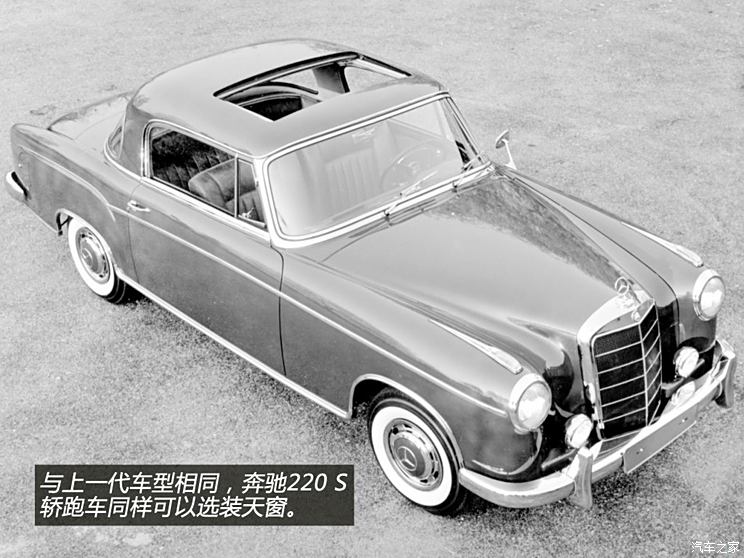
Mercedes-Benz 220S convertible and coupe have also been improved in appearance and interior, and the bumper has been enlarged. License plate lights are integrated at both ends of the rear bumper, so that the newly implemented large license plate can be installed smoothly. However, the most remarkable innovation is the introduction of "Hydrak" hydraulic automatic clutch as an optional configuration.
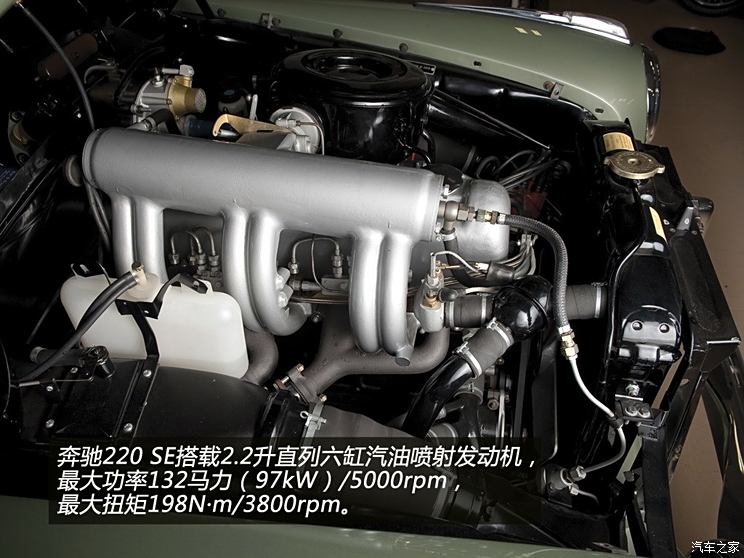
In September 1958, Mercedes-Benz introduced the 220 SE four-door sedan, and the convertible and coupe versions also made their debut in October 1958. Mercedes-Benz 220 SE is equipped with an improved 2.2-liter inline six-cylinder fuel injection engine with a maximum power of 132 HP (97kW)/5000rpm and a maximum torque of 198 N m/3800 rpm. Although only 1974 Mercedes-Benz 220 SE four-door cars were produced in a short production period of 10 months, it has become the most special model in the W128 series.
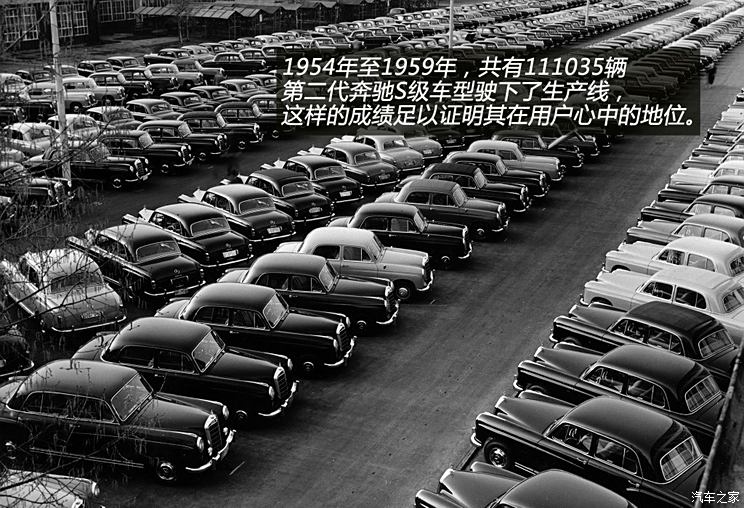
By August, 1959, the second-generation Mercedes-Benz S-Class model had delivered 111,035 vehicles in the five-and-a-half-year production period (including 25,937 vehicles produced by Mercedes-Benz 220 a, 27,845 vehicles produced by Mercedes-Benz 219 and 55,279 vehicles produced by Mercedes-Benz 220 S). In the fifties, when cars were not as popular as they are now, it fully showed that customers were obsessed with and recognized this generation of Mercedes-Benz S-class cars at that time. "Buoy" body design has since become the symbol of subsequent models and even other Mercedes-Benz luxury cars. Even today, 50 years later, these models are still treasures that collectors can’t put down.
Third generation Mercedes-Benz S-Class
Mercedes-Benz W111 and W112 Series (1959 -1971)
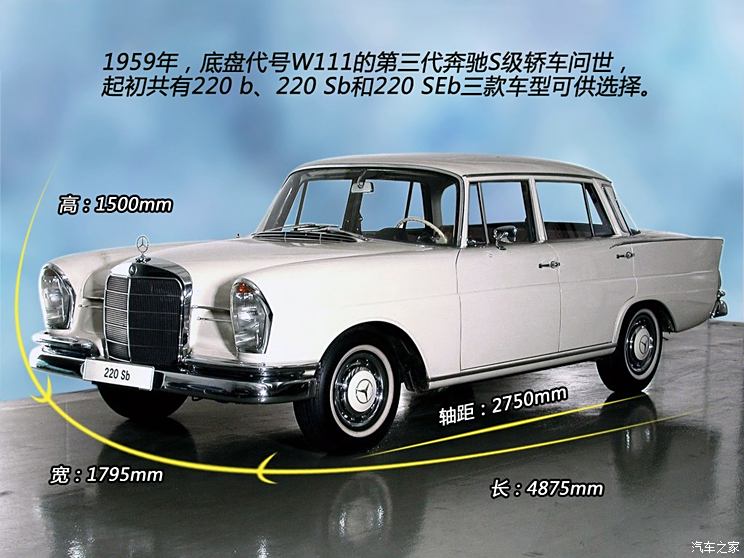
In August 1959, Mercedes-Benz announced a thorough improvement of the original passenger car. Driven by the slogan "Strive to build a brand-new six-cylinder engine in the market segment", Mercedes-Benz 220 b, 220 Sb and 220 SEb with chassis code W111 came out one after another. In addition to the differences in the specific configuration, the engines of the three new models are not the same. The body size of W111 sedan version is 4875mm long, 1795mm wide, 1500mm high and 2750mm wheelbase.
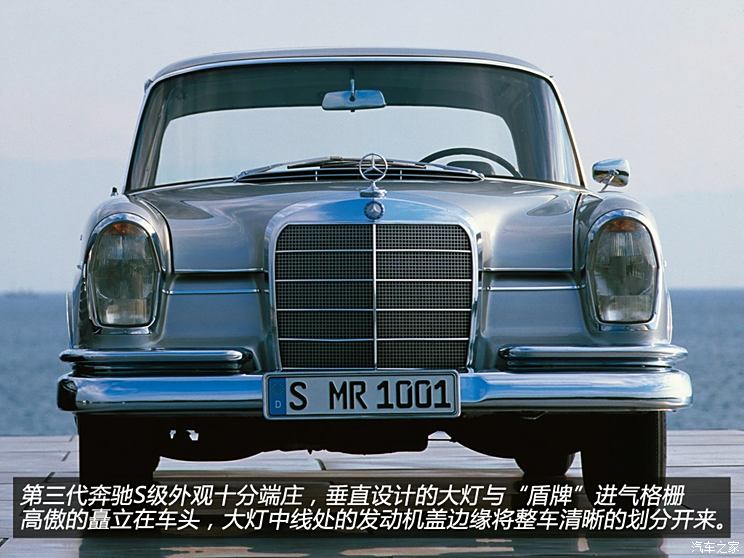
The third-generation Mercedes-Benz S-Class has a very spacious and elegant body shape, and the vertically designed headlights echo Mercedes-Benz’s iconic air intake grille. The edge of the hood of the front car is properly designed at the centerline of the headlight, which depicts the hierarchy of the whole car quite clearly. Real bumpers are decorated with large areas of chrome plating, and the application of chrome plating is still the best way to show the noble temperament of Mercedes-Benz S-Class.
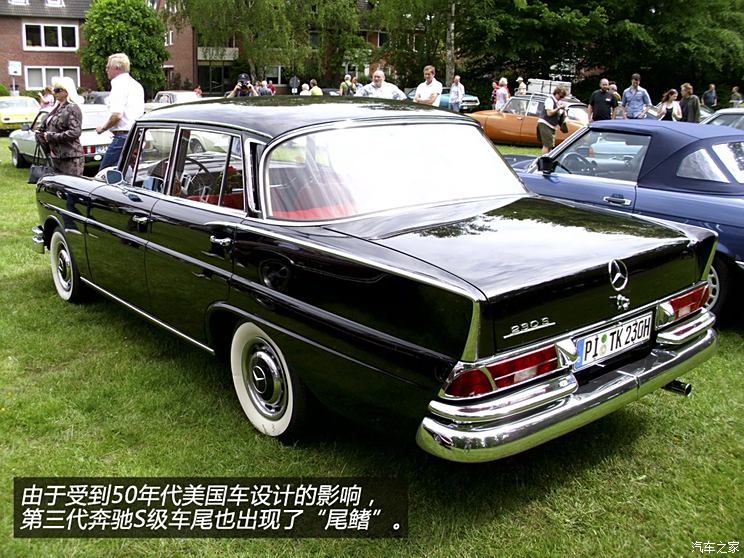
A unique design element makes Mercedes-Benz W111 still famous in the world. The 1950s was the heyday of American cars. Influenced by American car culture, this generation of cars adopted a body design with a "tail fin", which was not only fashionable, but also more distinctive, so it was also called "tail fin" Mercedes-Benz. In the eyes of the public, this generation of cars is like a clear spring in the old forest, injecting more modernity and fresh charm into the Mercedes-Benz brand.
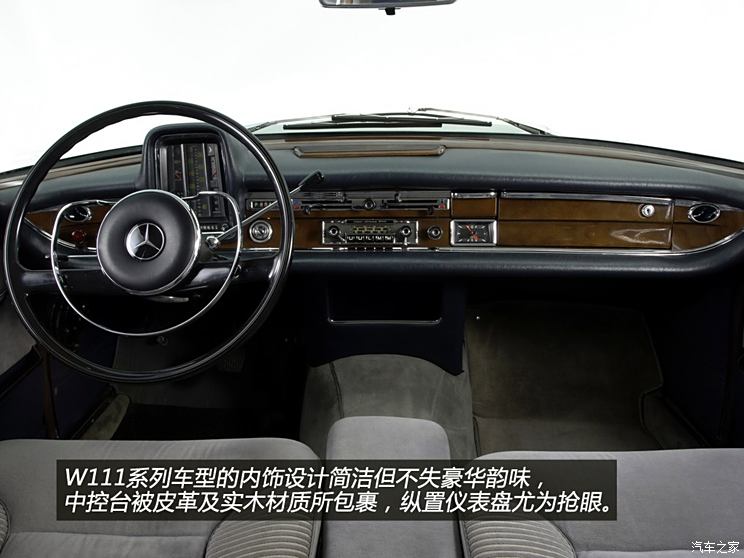
In the interior design, the unique dashboard layout is refreshing, and the speedometer adopts vertical design. Different from the all-solid wood center console of the previous generation, the third-generation Mercedes-Benz S-class center console is covered with a lot of leather, and the clock is still an indispensable part of creating a luxurious atmosphere in the car. Mercedes-Benz also gives priority to safety protection performance in S-class interior design, such as the dashboard with soft cushion, the steering wheel wrapped with collision protection cushion, and the safety door lock with tapered pin applied for the first time, all of which will play a vital role in protecting the occupants in the car in the event of an accident.
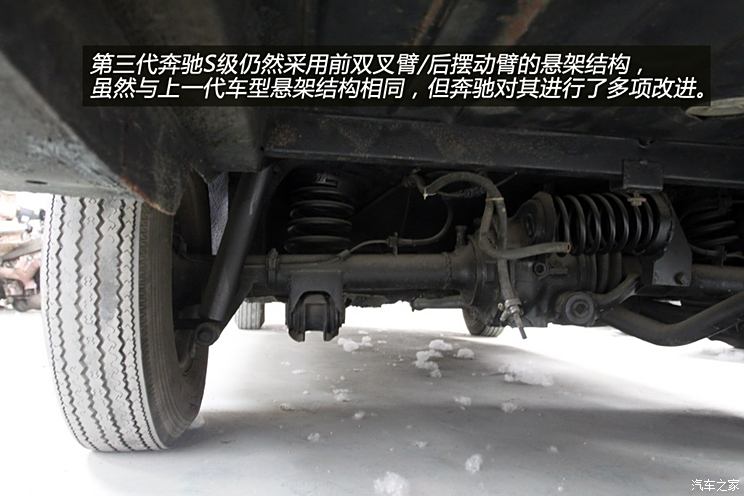
The third-generation Mercedes-Benz S-Class still adopts the front double wishbone/rear rocker independent suspension structure of the previous generation, but the suspension system of this generation has been slightly modified compared with the previous generation, and the shape of the subframe has been improved, so that it can play a better role. By adjusting the rear suspension, the load of the axle can be evenly distributed to the two driving wheels. In addition, the installation positions of the shock absorbers of the front and rear wheels have also been improved, which not only can provide more effective shock absorption effect, but also improve the convenience of maintenance.
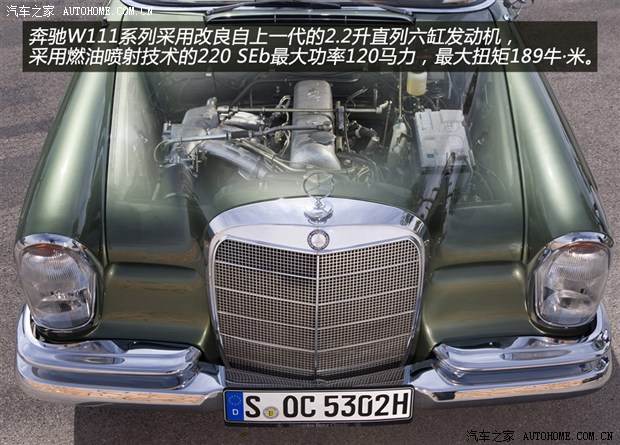
The engine used in the third-generation Mercedes-Benz S-Class is basically the same as that in the previous generation. The 2.2-liter inline six-cylinder engine uses an improved valve control connecting rod and a camshaft with a larger angle. After assembling the dual carburetor, the engine of Mercedes-Benz 220 b can output the maximum power of 95 HP (70kW), while the maximum power of the engine of 220 Sb is increased to 110 HP (81kW). Mercedes-Benz 220 SEb adopts a 2.2-liter inline six-cylinder fuel injection engine with a straight intake pipe, with a maximum power of 120 HP (88 kW)/4,800 rpm and a maximum torque of 189 N m/3,900 rpm. The engine is matched with a 4-speed manual gearbox and a 4-speed semi-automatic gearbox.
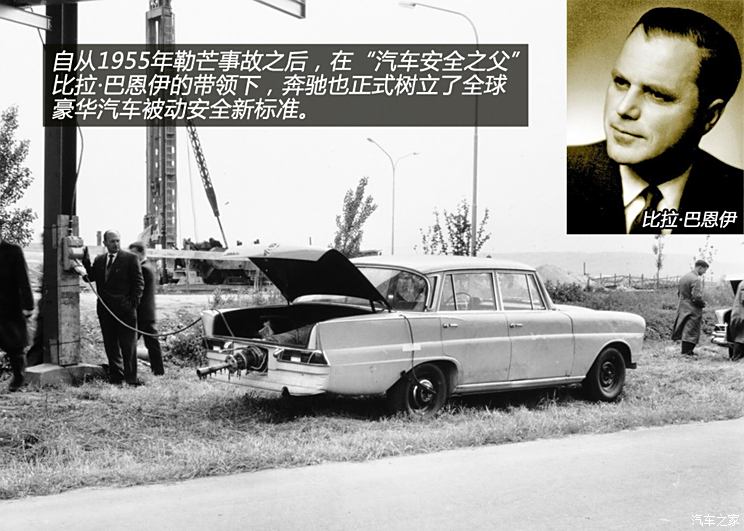
Different from other contemporary models, the third-generation Mercedes-Benz S-Class has set a new standard for the passive safety of luxury cars while pursuing fashionable shape design. After the accident in Le Mans, France in 1955, which killed 80 people, Mercedes-Benz began to study new safety technologies that can protect both passengers and pedestrians. Through the early observation of the sharp corner design of Ford’s steering wheel, the research team began to put forward the concept of passive safety under the leadership of Béla Barényi, the father of automobile safety.
?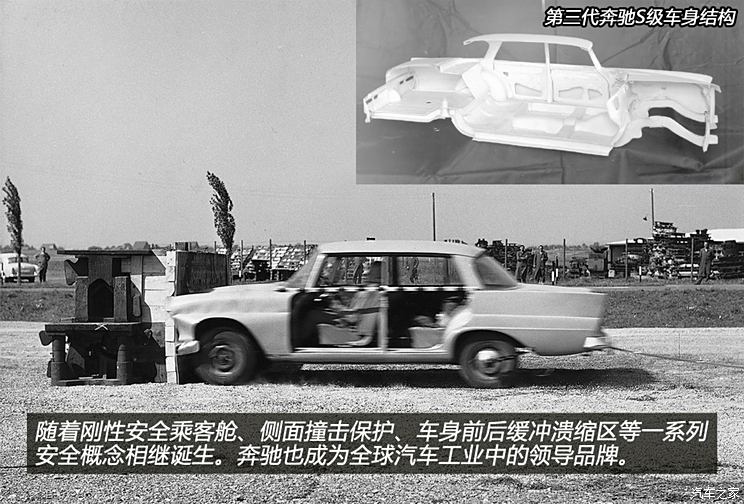
Soon, a series of safety concepts, such as rigid safety passenger compartment, side impact protection, and buffer collapse zone at the front and rear of the car body, were born one after another. These safety features we take for granted today. In 1959, only one car had these features, that is, the third-generation Mercedes-Benz S-Class 220 series. This is the first car with passive safety standards in the world, and it also further establishes the absolute leading position of Mercedes-Benz in the world automobile industry.
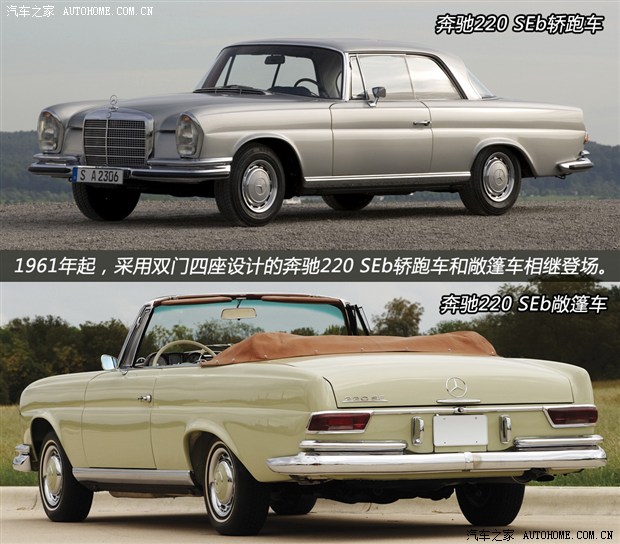
In February 1961, the elegant Mercedes-Benz 220 SEb coupe appeared, and the convertible version of the 220 SEb model was unveiled to the world in September 1961. Mercedes-Benz 220 SEb coupe and convertible are designed with two doors and four seats. Compared with Mercedes-Benz 220 series cars, the 220 SEb coupe and convertible have more attractive body lines, and the visual effect of the whole vehicle is more slender and low. Different from the sedan version, the 220 SEb coupe and convertible did not adopt vertical instrument design, but used a more traditional instrument panel style.
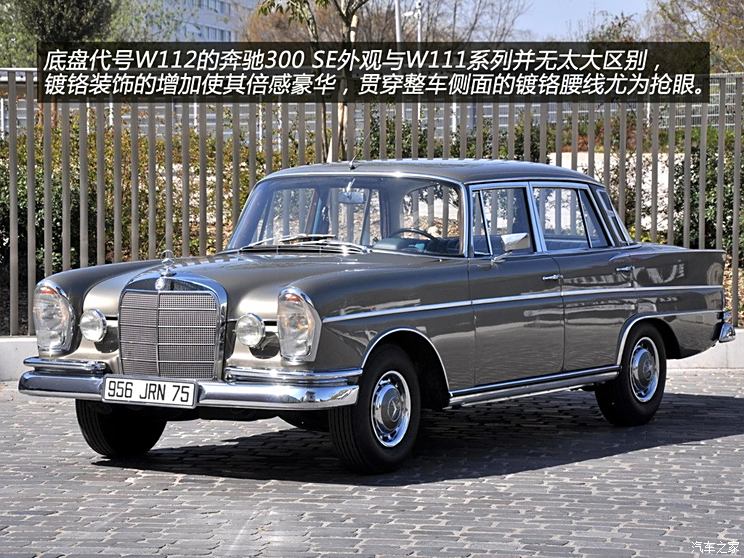
In August, 1961, the Mercedes-Benz 300 SE sedan with chassis number W112 came out, and once it appeared, it became the focus of global attention. As a masterpiece of luxury cars of that era, Mercedes-Benz 300 SE mainly draws on the advantages of 220 SEb models in terms of design and technology, and many technological inventions are also applied to 300 SE. Mercedes-Benz 300 SE coupe and convertible have also appeared. The body of Mercedes-Benz 300 SE is almost the same as that of 220 SEb, but more chrome-plated ornaments are selected. Chrome-plated decorative strips are used from the side hems of 300 SE headlights to taillights, and chrome-plated decorations are also embedded around the front and rear wheel arches and under the door. The logo of "300 SE" is integrated into the C-pillar decorative molding to show the supreme status of the car. Of course, customers also have the right to choose not to assemble these chrome-plated decorations.
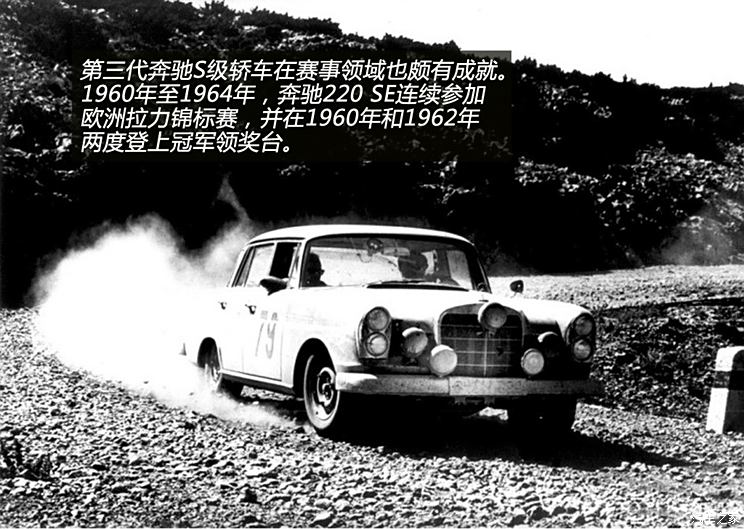
In addition to the four-speed automatic transmission and newly developed power steering device, the 300 SE is also equipped with an innovative air suspension system, thus achieving a perfect balance between excellent sportiness and first-class comfort. At the same time, Mercedes-Benz 300 SE became the first Mercedes-Benz mass production vehicle equipped with dual-loop braking system and front and rear disc brakes. Since 1962, Mercedes-Benz began to improve the braking system of 220 series vehicles. The front and rear disc brakes, brake booster and double-circuit braking system all became the symbolic safety configuration in this period, and pointed out the way for the active and safe development of automobiles. In addition to the achievements in the field of automobile safety, the third-generation Mercedes-Benz S-Class sedan has also actively participated in automobile races and achieved good results.
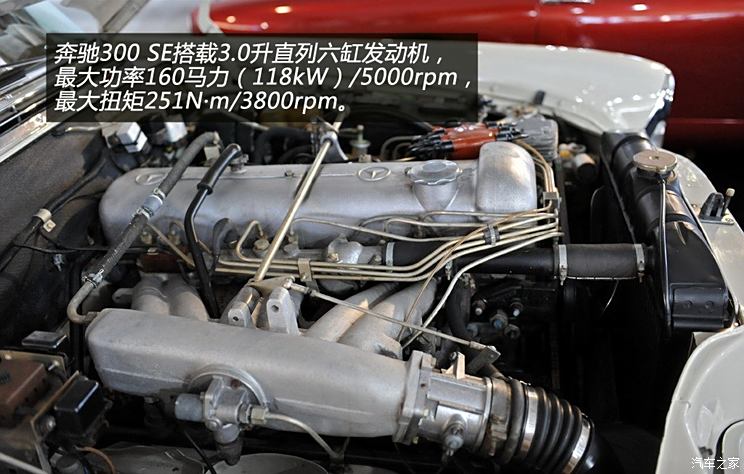
The 3.0-liter in-line six-cylinder fuel injection engine of Mercedes-Benz 300 SE adopts alloy cylinder block and press-in cylinder liner, so the weight is reduced by about 40 kg. The compression ratio of the engine has been further improved, with the maximum power of 160 HP (118kW)/5000rpm and the maximum torque of 251 N m/3800 rpm. In December 1968, Mercedes-Benz 300 SE began to assemble the air conditioning system, making it the first Mercedes-Benz car equipped with air conditioning.
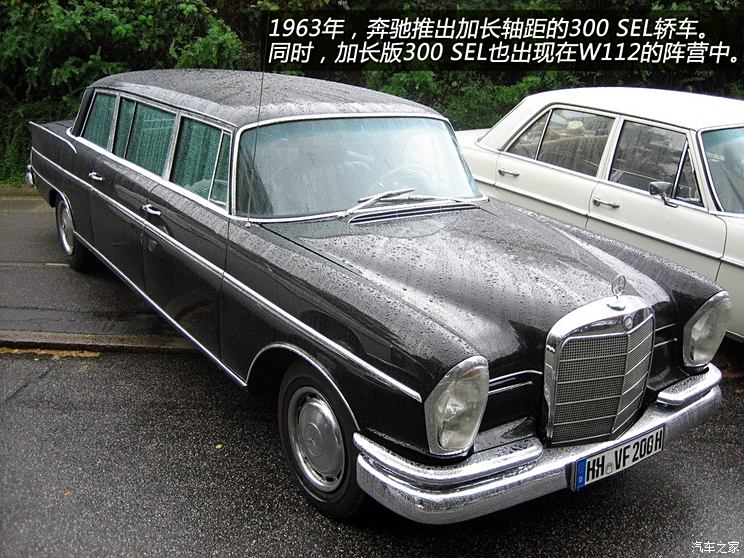
At the Geneva Motor Show in March 1963, Mercedes-Benz introduced an extended version of the 300 SEL sedan, which was 100 mm longer than the wheelbase of the previous standard version of the 300 SEL. The increased space is fully used to expand the leg space of the rear seat and the entrance width of the rear door. The extended version of 300 SEL can be equipped with optional partition and electric partition screen. From July to August, 1965, the 2.2-liter and 3.0-liter four-door cars with "tail fin" bodies were discontinued one after another, and Mercedes-Benz 230 S continued to lead the development of luxury cars in the world. On the basis of the original engine, the output power of the 230 S is increased by 10 HP, thus reaching the maximum power of 120 HP (88 kW). At the same time, the hydraulic air balance spring replaces the coil spring used before the rear axle to ensure that the height of the car body remains constant regardless of the load.
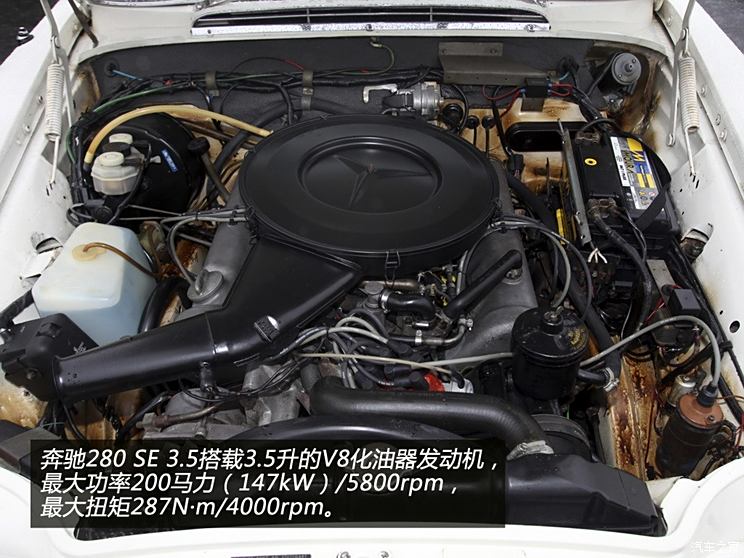
Since then, Mercedes-Benz has introduced coupe and convertible models with a 2.5-liter inline six-cylinder engine. In November 1967, Mercedes-Benz 280 SE with 2.8-liter inline six-cylinder engine replaced 250 SE. In August 1969, Mercedes-Benz 280 SE 3.5 officially joined the Mercedes-Benz S-class luxury car camp. The car is equipped with a V8 engine with a displacement of 3.5 liters, with a maximum power of 200 HP (147kW)/5800rpm and a maximum torque of 287 N m/4000 rpm. With a 5-speed manual or 4-speed automatic gearbox, the top speed can reach 210 km/h. With the discontinuation of the Mercedes-Benz 230 S in 1968, the W111/W112 four-door luxury sedan came to a successful conclusion, and its coupe and convertible models were officially discontinued in 1971.
Mercedes-Benz has become the hero of world-class luxury cars.
Mercedes-Benz W100(1963 -1981)
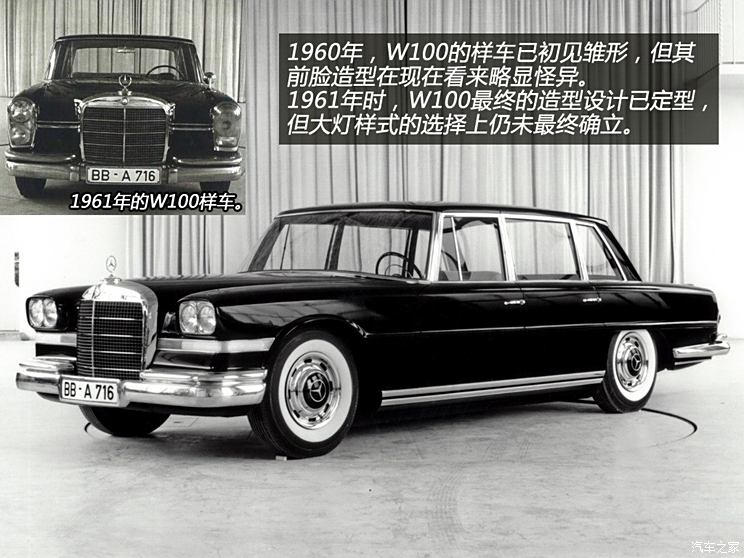
In 1955, Mercedes-Benz launched a new luxury car project, which has no budget restrictions and strives to create a luxury car model that creates a model of automobile aesthetics and engineering. This is the Mercedes-Benz 600, which is known as "the most beautiful car in the world". From the 1950s to the early 1960s, world-class luxury cars were mainly occupied by Cadillac and Rolls-Royce, and most of the concierge cars of heads of state were American cars. Before the birth of Mercedes-Benz 600, Mercedes-Benz did not absolutely establish its status as the king of world-class luxury cars.
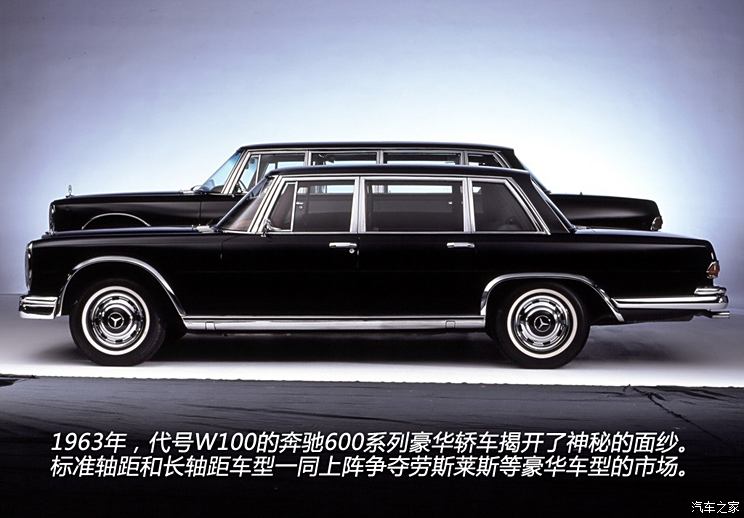
At the Frankfurt Motor Show in September 1963, the Mercedes-Benz 600 code-named W100 was officially unveiled. The car was designed by Paul Bracq and Bruno Sacco, and it was divided into four-door models with standard wheelbase and four-door and six-door models with extended wheelbase, among which Pullman with hardtop and Landaulet with convertible. There is not much direct relationship between Mercedes-Benz 600 and Mercedes-Benz S-Class, but it opens a new chapter for the development of top models based on Mercedes-Benz S-Class luxury cars in the future.
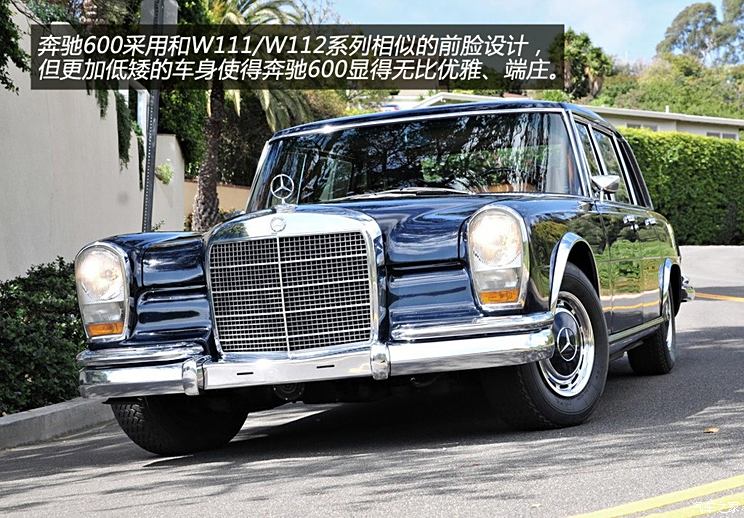
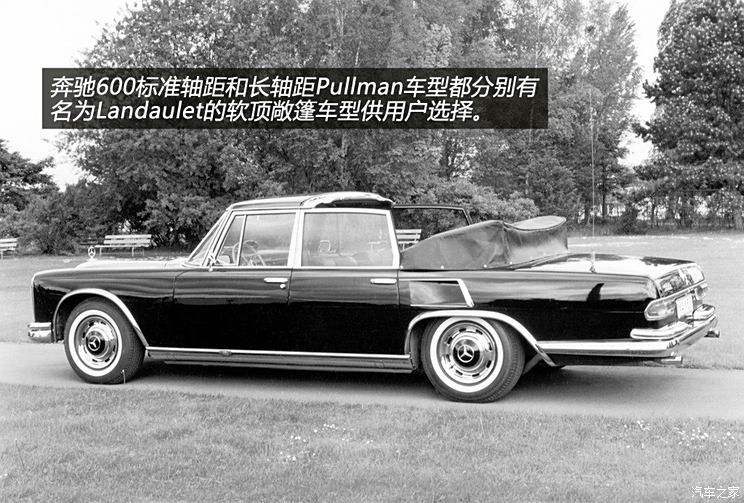
Mercedes-Benz 600 follows the model design of W111, and also uses vertical headlights. The same large air intake grille can easily make people mistake Mercedes-Benz 600 for W111 series. The low profile of Mercedes-Benz 600 is the biggest difference between it and W111. The large body size and low posture make Mercedes-Benz 600 look particularly distinguished. Mercedes-Benz 600 with standard wheelbase has a body size of 5450mm, a width of 1950mm, a height of 1500mm, a wheelbase of 3200mm and a body weight of 2600kg.
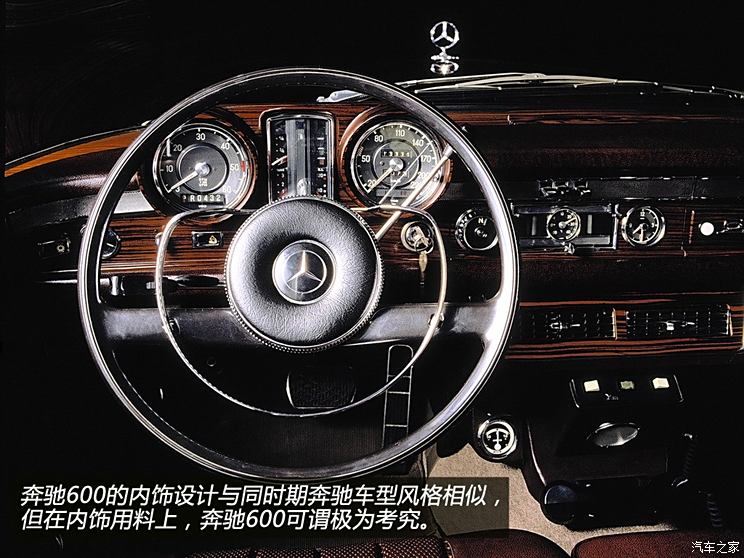
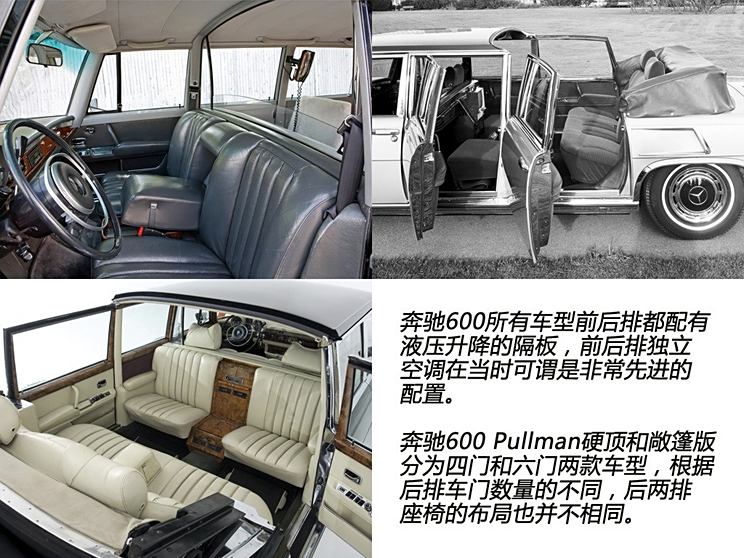
In interior design, Mercedes-Benz 600 still maintains the overall interior style of W111, but the pursuit of details is more refined. The front and rear independent air conditioners were very advanced at that time, and hydraulic technology was also widely used in Mercedes-Benz 600. The height adjustment of the car body, the front and rear partition plates, the windows, the seat adjustment and even the opening of the fuel tank cover were all controlled by hydraulic pressure.
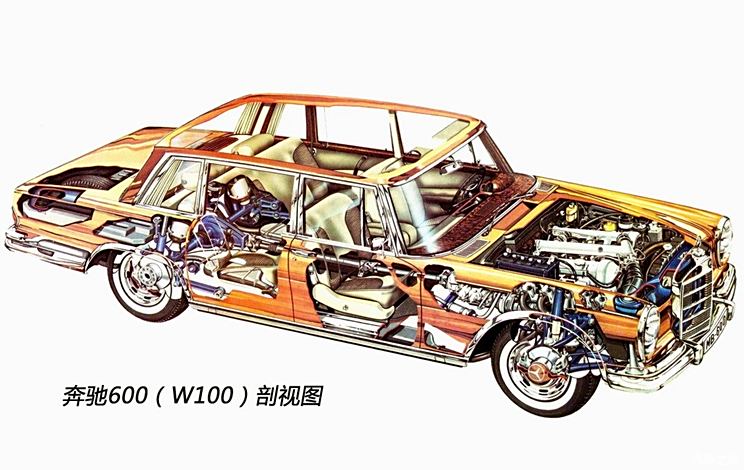
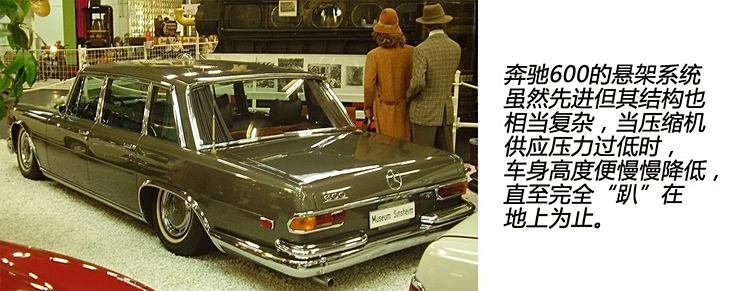
Mercedes-Benz 600 adopts front double wishbone/rear rocker independent suspension structure. Mercedes-Benz 600 is famous for its complex hydraulic air suspension system, which uses high-pressure pump to support the whole body, and in addition, such as window adjustment, seat adjustment, front and rear partition lifting and so on are all adjusted by this hydraulic system. Because this system is so complicated, Mercedes-Benz Company is equipped with professional maintenance teams to repair Mercedes-Benz 600 all the year round. Now, to judge the condition of a Mercedes-Benz 600, the first thing to look at is whether this hydraulic system is damaged or aging.
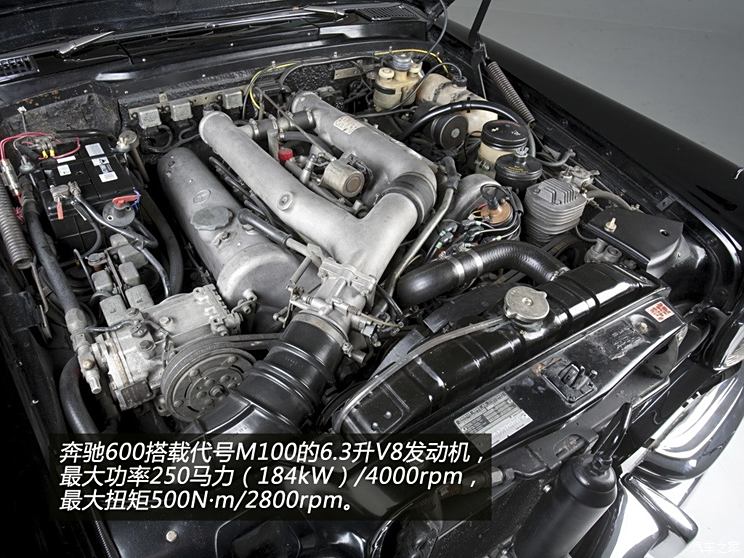
Mercedes-Benz 600 is only equipped with a 6.3-liter fuel injection V8 engine code M100, with a maximum power of 250 HP (184kW)/4000rpm and a maximum torque of 500 N m/2800 rpm. The engine is matched with a 4-speed automatic gearbox, and the acceleration time from 0 to 100 km/h is 9.7 seconds. Among them, the maximum speed of Mercedes-Benz 600 standard wheelbase model is 205km/h, and the maximum speed of long wheelbase model is 200 km/h.
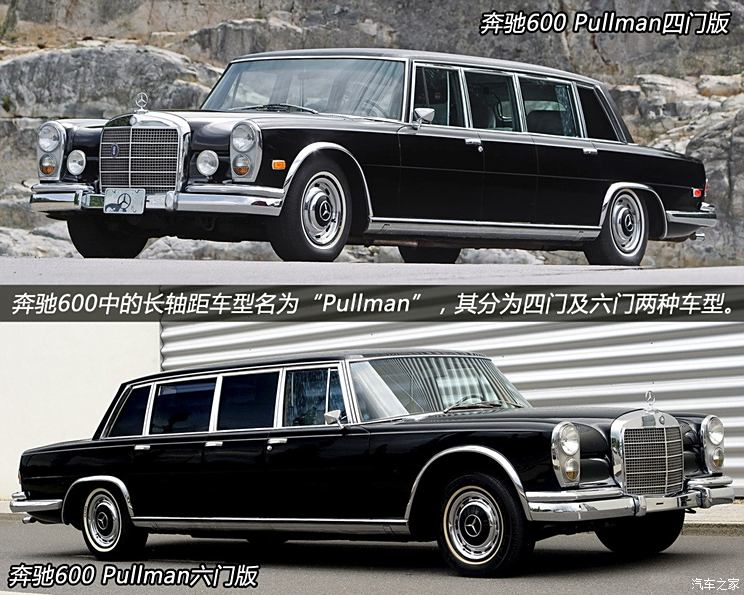
Mercedes-Benz 600 is the last luxury car in the history of Mercedes-Benz. Its owners are either rich or expensive, and a large part of it has been bought by many countries as a car for senior government officials. Mercedes-Benz 600 has produced a total of 2,677 units, of which 2,190 units are standard wheelbase models. The long-axis version of Mercedes-Benz 600 Pullman is favored by politicians and celebrities all over the world, and the output of 428 units also makes it precious. Mercedes-Benz 600 Pullman has a body size of 6240mm, a width of 1950mm, a height of 1510mm, a wheelbase of 3900mm and a vehicle weight of 2770kg.
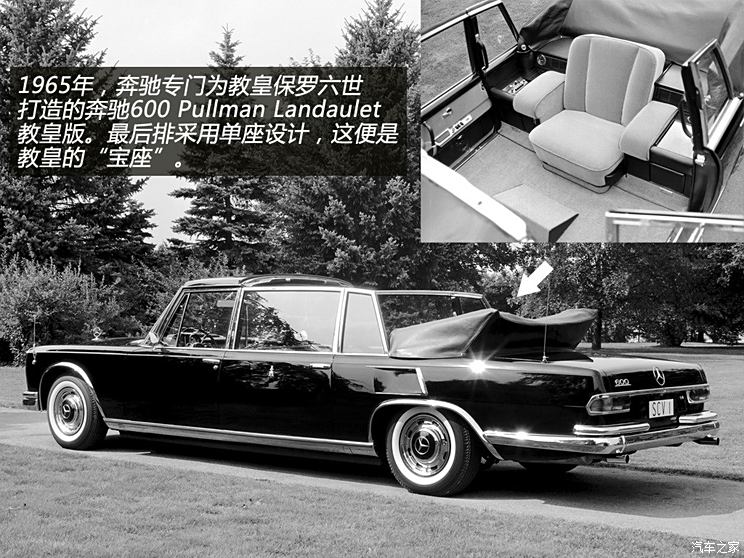
Mercedes-Benz 600 is used as a courtesy car in more than 100 countries around the world, such as Queen Elizabeth II, King Hussein, Fidel Castro and Kim Il Sung. In 1965, Mercedes-Benz built a Mercedes-Benz 600 Pullman Landaulet for Pope Paul VI, which was used by the Pope during his inspection. The back seat was a single-person sofa, which was the Pope’s exclusive seat, and the Vatican badge was embedded in the door.
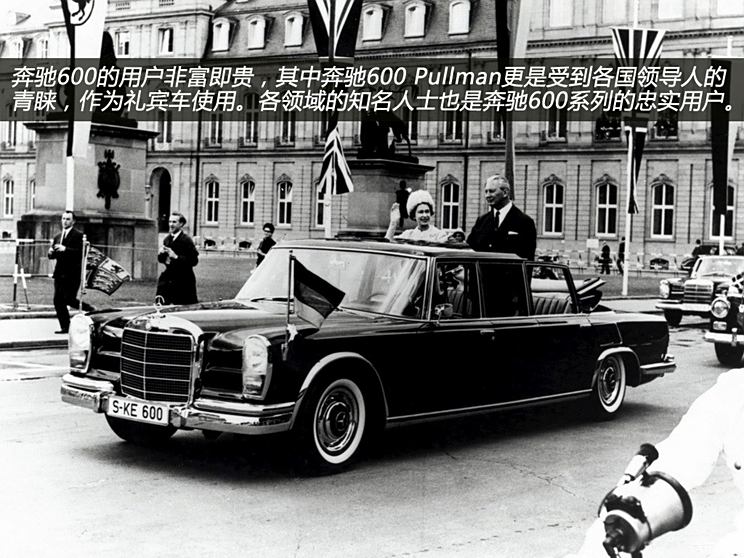
Brezhnev, the leader of the former Soviet Union, is famous for his passion for collecting luxury cars from all over the world. He once smashed the Mercedes-Benz 600 presented by German Chancellor Brandt after drinking, and later proposed that West Germany give another one. In addition to these well-known politicians, we are familiar with some celebrities; Such as perfume queen Chanel, movie star Elizabeth Taylor, Beatles lead singer John Lennon, Elvis Presley and Greek ship king onassis are all owners of Mercedes-Benz 600.
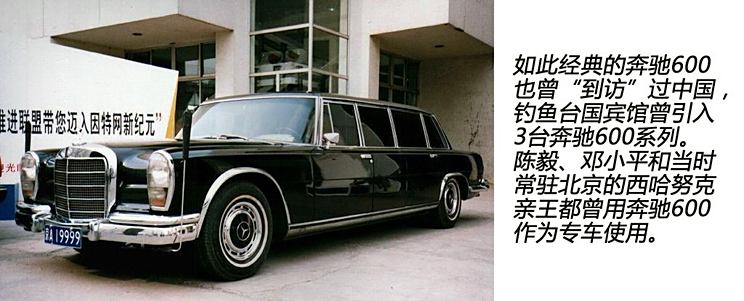
Mercedes-Benz 600 has also been introduced to China. There are no more than five Mercedes-Benz 600 vehicles in China, which are mainly used by Diaoyutai State Guesthouse. Chen Yi, Deng Xiaoping, Deng Yingchao and Prince Sihanouk, who lived in Beijing in those days, all equipped this car at different times. At present, a Mercedes-Benz 600 Pullman known in China has been privately collected and sent to Germany for original factory repair.
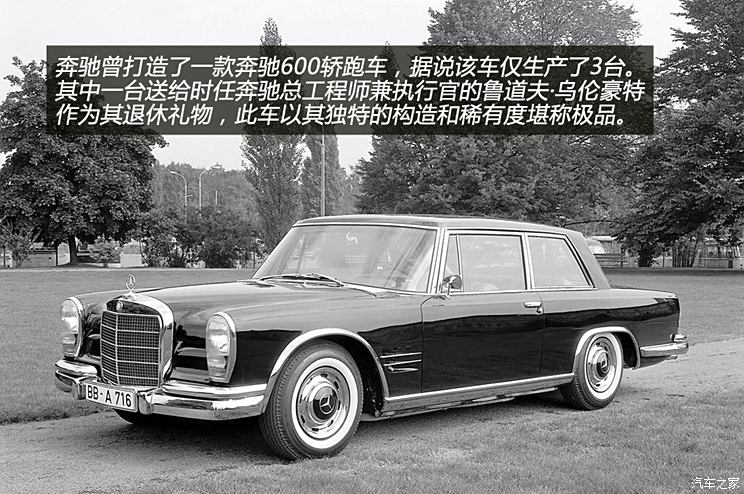
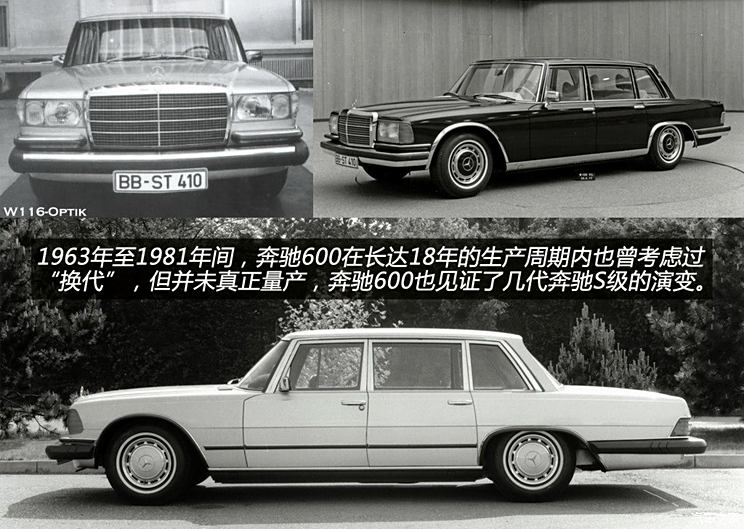
Interestingly, Mercedes-Benz has made three two-door versions of Mercedes-Benz 600 Coupes, which were first given to Rudolph Uhlenhaut, the chief engineer and executive officer, as a gift when he retired. Since then, two Mercedes-Benz senior engineers have built two Mercedes-Benz 600 Coupes according to their own wishes, which are the best cars and were later purchased by American collectors. From its birth in 1963 to its discontinuation in 1981, Mercedes-Benz 600 witnessed the development of several generations of Mercedes-Benz S-Class. During the 18-year production cycle, Mercedes-Benz 600 produced a total of 2,677 units. With its unique design concept, near-perfect manufacturing technology and influence in political and cultural fields, Mercedes-Benz 600 has laid a solid foundation for Mercedes-Benz S-Class to become the global luxury car overlord.
Fourth generation Mercedes-Benz S-Class
W108 and W109 series (1965 -1972)
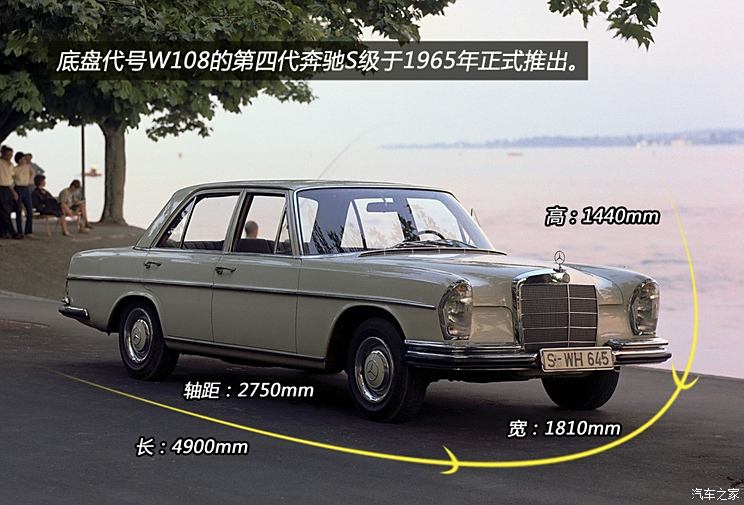
In August, 1965, Mercedes-Benz introduced four fourth-generation Mercedes-Benz S-Class cars, namely, Mercedes-Benz W108, Mercedes-Benz 250 Se and Mercedes-Benz 300 SEL designed by Paul Bracq. After "cutting off" the "tail fin" design of W111/112, the simple lines of the fourth-generation Mercedes-Benz S-Class return to the classic design of Mercedes-Benz again, which makes the introverted and elegant appearance of the whole vehicle still charming. Compared with the previous generation of Mercedes-Benz S-Class, the body height of W108/109 series is reduced by 60mm. Taking Mercedes-Benz 250 S as an example, its body dimensions are 4900mm long, 1810mm wide, 1440mm high and 2750mm wheelbase.
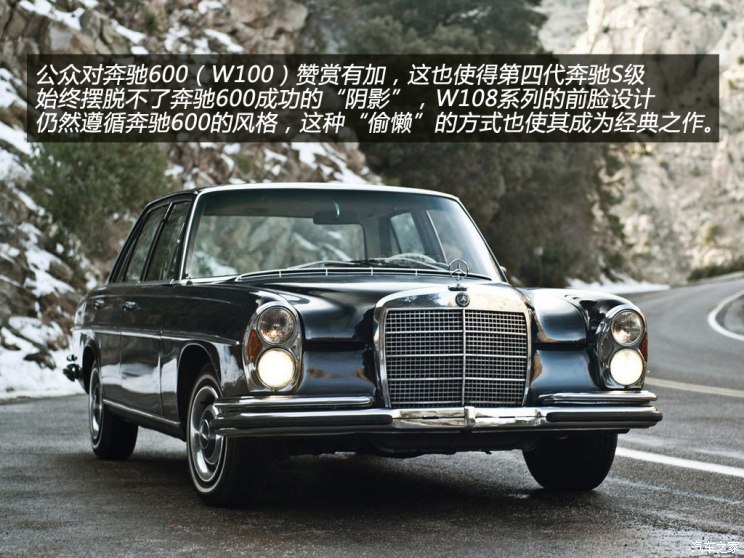
Observing the fourth-generation Mercedes-Benz S-Class, it is not difficult to find that Paul Bracq has integrated many classic design elements of Mercedes-Benz 600 into the fourth-generation Mercedes-Benz S-Class, and the vertical headlights are still used in W108/109 series. Paul Bracq’s "lazy" behavior has also contributed to this generation of Mercedes-Benz S-Class becoming a classic. After abandoning the "tail fin" design of W111, the rear design is quite similar to that of Mercedes-Benz 600. At first glance, the fourth-generation Mercedes-Benz S-Class looks like a small Mercedes-Benz 600.
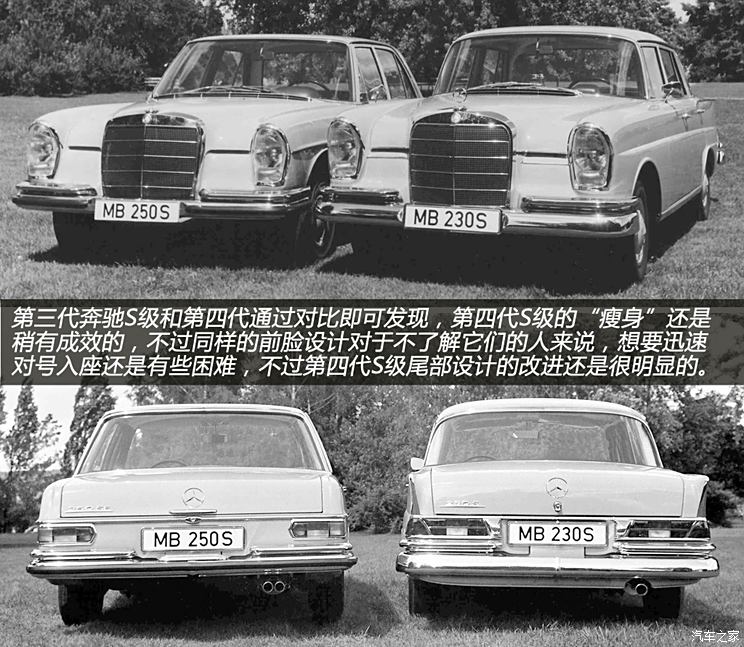
Before understanding this generation of Mercedes-Benz S-Class, let’s understand the meaning of its rear logo. Take Mercedes-Benz 250 SE as an example. The "E" in the "SE" is German Einspritzen, which means that it is a vehicle with a fuel injection engine. All vehicles with only "S" in the logo are carburetor engines. The long wheelbase model is named "SEL" and "L" is German lang, which means long axis. If the third and fourth generation Mercedes-Benz S-Class are put together at the same time, you will find that their designs are also surprisingly similar.
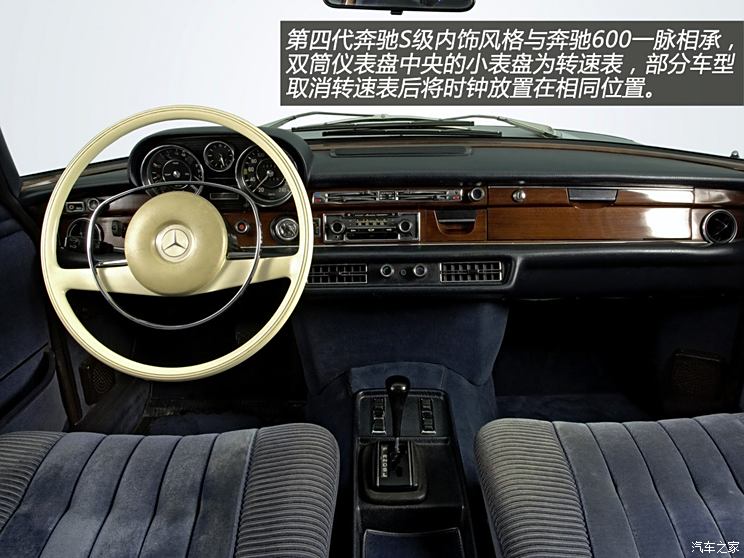
The fourth-generation Mercedes-Benz S-Class is not only surprisingly similar in appearance to Mercedes-Benz 600, but also adopts the design idea of Mercedes-Benz 600 in the interior. The water temperature meter and fuel meter are integrated on the left side of the double-barrel instrument panel, and the speedometer is placed in the middle on the right side. Different from previous models, the clock is designed on the driver’s left, and air conditioning has become the standard configuration of this generation of Mercedes-Benz S-Class.
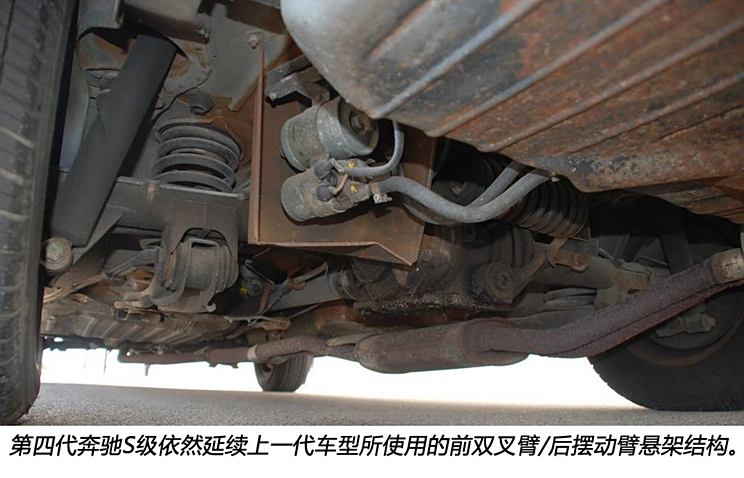
The fourth generation Mercedes-Benz S-Class car still adopts the front double wishbone/rear rocker independent suspension structure, and the hydraulic air balance spring installed in the rear axle replaces the common coil spring, so that the car body can maintain a constant height regardless of the load. AMS, a famous German automobile magazine, commented: "Easy and quiet driving experience, excellent handling and safety at high speed, luxurious and exquisite interior, and extreme attention to quality and design make Mercedes-Benz W108/109 one of the best luxury cars in the world".
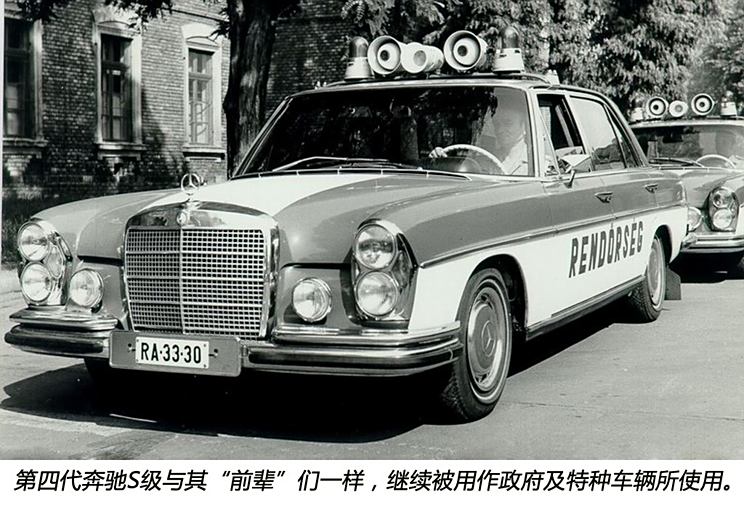
Mercedes-Benz 250 S and 250 SE are equipped with a 2.5-liter inline six-cylinder engine. The improved 2.5-liter engine increases the cylinder diameter and stroke on the basis of the previous 2.2-liter engine. The 250 S uses a 2.5-liter dual carburetor engine with a maximum power of 130 HP (96kW), while the 250 SE with a 2.5-liter fuel injection engine has a maximum power of 150 HP (110kW). The fourth-generation Mercedes-Benz S-Class has been widely praised for its good foundation laid by Mercedes-Benz 600. Like its predecessors, the fourth-generation Mercedes-Benz S-Class has been used as government official vehicles and police vehicles all over the world.
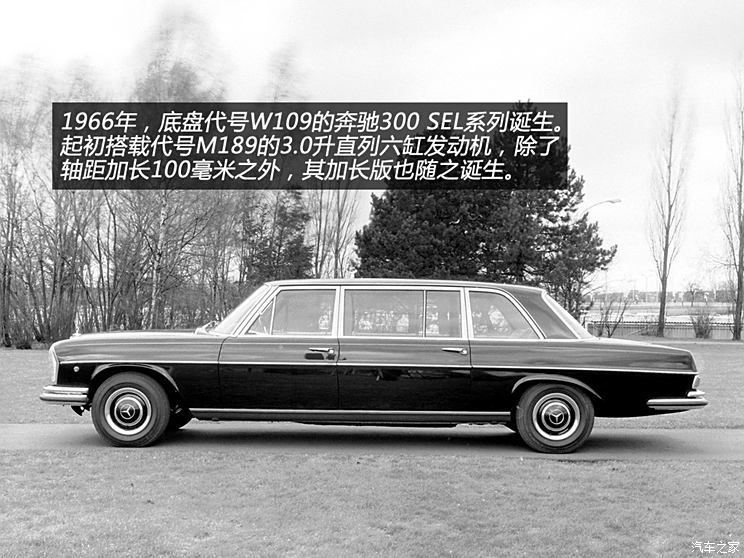
In March 1966, Mercedes-Benz 300 SEL became a new member of this series. Compared with other models in the same family, the wheelbase of the 300 SEL is extended by 100 mm, thus expanding the rear legroom and the entrance width of the rear door. Mercedes-Benz 300 SEL takes air suspension as standard configuration and adopts W109 as an independent chassis code. Mercedes-Benz 300 SEL is equipped with an inline six-cylinder engine with a displacement of 3.0 liters, with a maximum power of 170 HP (125 kW)/5,400 rpm and a maximum torque of 249 N m/4,000 rpm. It adopts a 4-speed, 5-speed manual gearbox and a 4-speed automatic gearbox, and its top speed can reach 200 km/h.
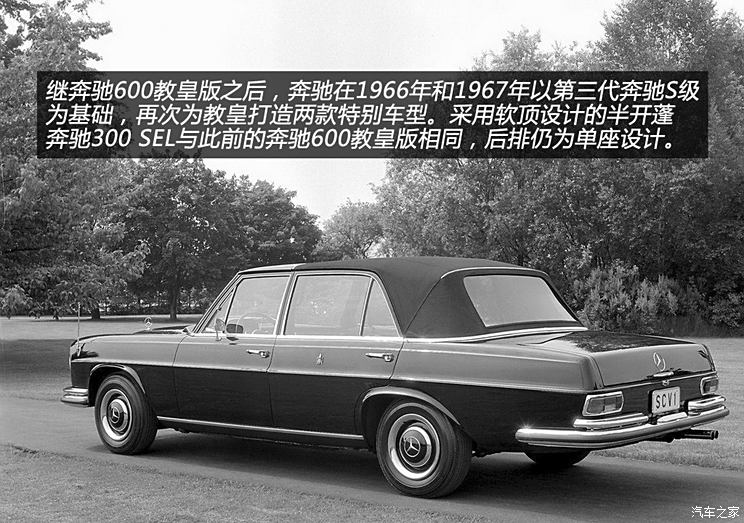
In 1966 and 1967, two special editions of 300 SEL were produced in Sindelfingen. These two special editions were not mass-produced but were specially developed for the Vatican. In June 1966, Mercedes-Benz manufactured a model with a movable soft top at the rear of the standard wheelbase. The difference between this model and the production model is that this car has only one rear seat, and its special folding soft top can be extended from the rear of the car body to the front end of the rear door. A year later, two identical six-seater cars appeared. The wheelbase of this six-seater car was increased by 650 mm, the rear door was improved, and it was equipped with two folding rear seats. This is another Mercedes-Benz car used by the Vatican Pope after Mercedes-Benz 600.
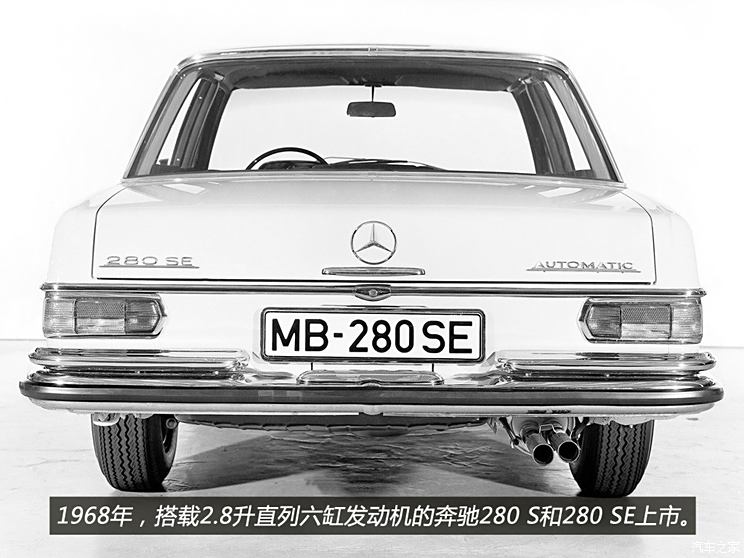
At the beginning of 1968, Mercedes-Benz 250 SE and 300 SE stopped production (250 S was produced as an export model until 1969), and Mercedes-Benz 280 S and 280 SE became its successor models. Mercedes-Benz 280 S and 280 SE models are equipped with a newly developed 2.8-liter inline six-cylinder engine. The 2.8-liter six-cylinder carburetor engine of Mercedes-Benz 280 S can output a maximum power of 160 HP (118kW), and the six-cylinder fuel injection engine of 280 SE has a maximum power of 182 HP (134kW)/5750rpm and a maximum torque of 262 N m/4500 rpm.
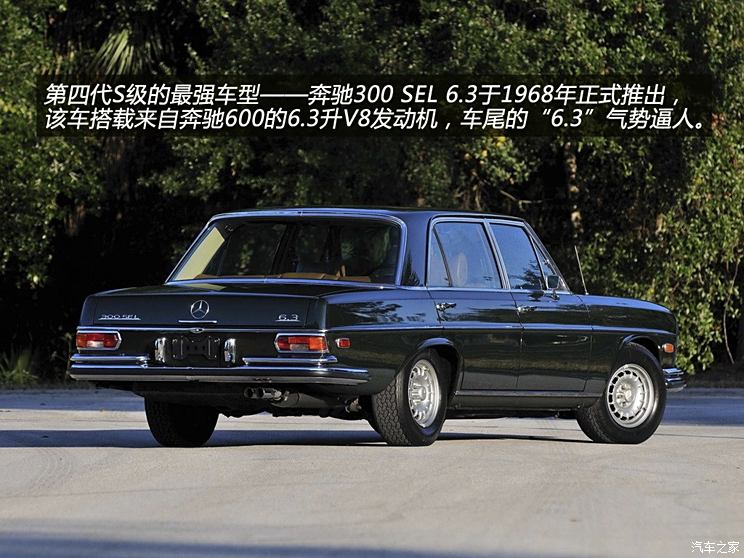
In March 1968, Mercedes-Benz launched the fourth generation S-class top model-Mercedes-Benz 300 SEL 6.3. The car used the same V8 engine and 4-speed automatic transmission as Mercedes-Benz 600, thus achieving the strong power of the top sports car at that time. The famous German professional automobile magazine "Automobile and Sports" commented: "We once extracted a car from the first batch of 300 SEL 6.3 that was strictly confidential, and the’ 6.3′ displacement logo was not installed. When the excellent 300 SEL 6.3 sped on the road, many drivers of Porsche 911 and 911 S were confused. These people, who usually think of themselves as’ the king of highways’, suddenly found that they have been left far behind by the noble and elegant Mercedes-Benz S-Class. This made them feel at a loss and even had a desire to sell their cars. "
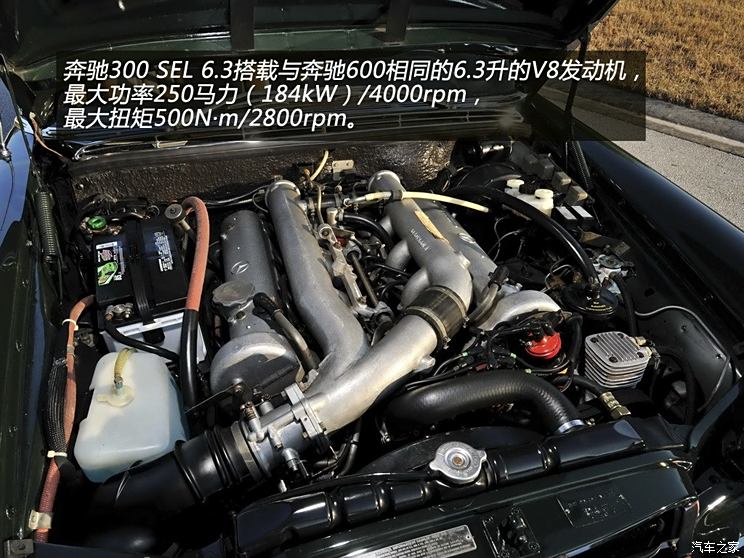
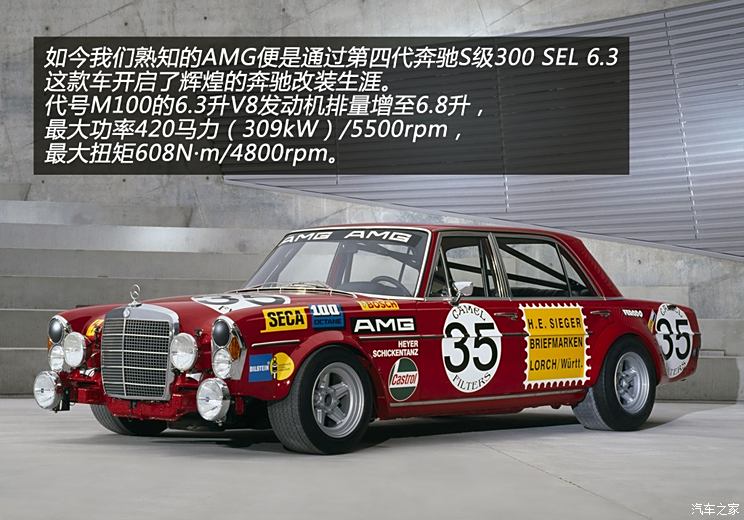
Because no news was announced before, the debut of 300 SEL 6.3 at the Geneva Motor Show triggered a powerful sensation. In appearance, the most striking feature of 300 SEL 6.3 is the wider tires, double halogen headlights and auxiliary high beam group. The power of the engine reached 250 horsepower (184kW), and the powerful torque of 500 Nm made the acceleration time of Mercedes-Benz 300 SEL 6.3 from 0 to 100 km/h only 6.5 seconds, and the maximum speed reached 220 km/h, making it the fastest mass-produced four-door sedan in the world at that time. AMG, which we are familiar with, started its brilliant Mercedes-Benz refitting career through the car 300 SEL 6.3. In 1971, AMG became famous with the help of AMG 300 SEL 6.3 racing car.
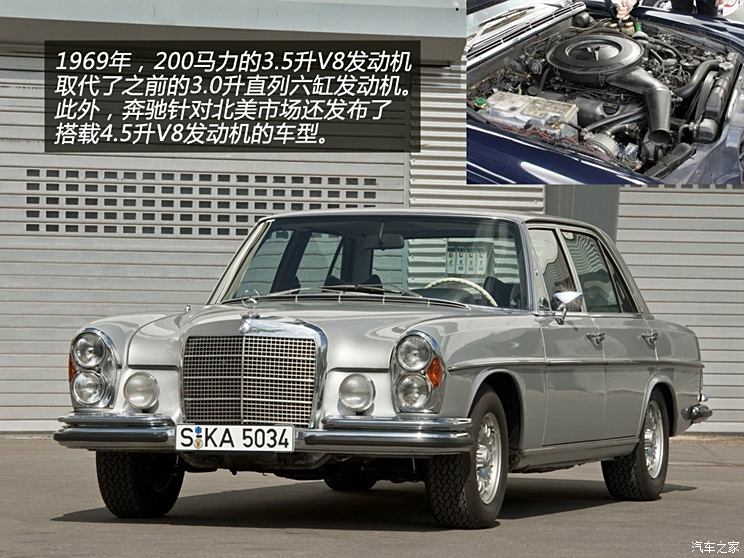
In the autumn of 1969, Mercedes-Benz 300 SEL 3.5 replaced the 300 SEL equipped with a 2.8-liter inline six-cylinder engine. Mercedes-Benz 300 SEL 3.5 is equipped with a 3.5-liter "small" V8 engine with 200 horsepower (147kW). In addition, Mercedes-Benz has specially designed a more powerful 4.5-liter engine for the North American market, which has been used in export models of 280 SE 4.5, 280 SEL 4.5 and 300 SEL 4.5 since May 1971.
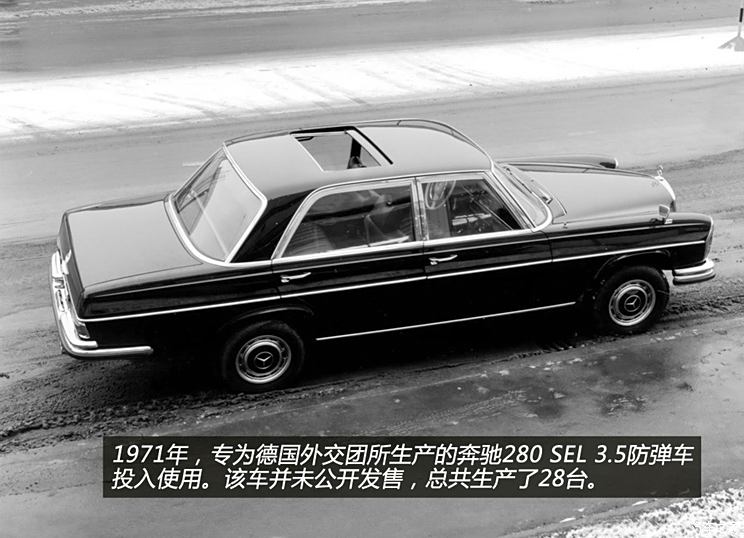
Since Mercedes-Benz 600 Pullman bulletproof car, Mercedes-Benz has never produced other types of bulletproof cars. In view of the strong demand of German government agencies for the development of such vehicles, especially after some diplomats were attacked in Latin America in 1970, the German Foreign Ministry urgently needed a special vehicle to escort the chiefs of diplomatic missions, and the bullet-proof Mercedes-Benz 280 SEL 3.5 was born under such a background. In 1971, the 280 SEL 3.5 bulletproof vehicle was put into production. Although it is a special model that has not been put on the market, it has received strong support from the government. In a year and a half, Mercedes-Benz has produced 28 280 SEL 3.5 bullet-proof vehicles for the former West German diplomatic corps.
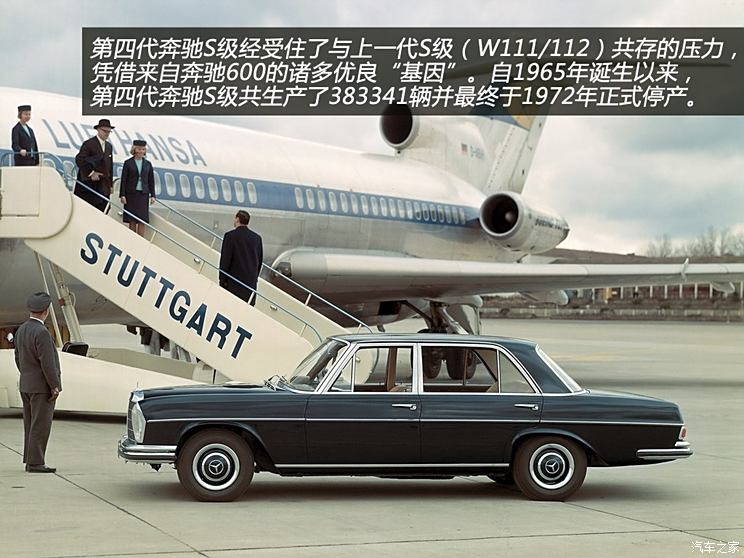
As the successor of the third generation Mercedes-Benz S-Class (W111/112), the birth of the fourth generation Mercedes-Benz S-Class (W108/109) is under great pressure. On the one hand, the third-generation S-class entered the North American market with the "tail fin" shape, and on the other hand, the Mercedes-Benz 600(W100), which was born two years earlier than the fourth-generation S-class, has become a benchmark model in the luxury car market, and the positioning of the fourth-generation S-class is inevitably somewhat embarrassing. Although Mercedes-Benz W111/112 series did not stop production because of the birth of W108/109, it did not affect the sales of the fourth-generation Mercedes-Benz S-Class. Since 1965, the fourth generation Mercedes-Benz S-Class has produced a total of 383,341 vehicles in seven years. In September 1972, the successful fourth-generation Mercedes-Benz S-Class was officially discontinued.
Summary:
Looking at the development history of the first four generations of Mercedes-Benz S-Class models, it is not difficult to see that the concept of Mercedes-Benz S-Class was not really established from the beginning of Mercedes-Benz W187 series in 1951 to the discontinuation of W108/109 series in 1972. However, it is undeniable that as a pioneer in the field of luxury cars in the world today, Mercedes-Benz has led the development of luxury models in the world since W187 series. Beautiful design, unique luxury interior, comfortable driving experience and forward-looking safety technology have established the unshakable dominance of Mercedes-Benz S-Class in the luxury car market. The concept of "Mercedes-Benz S-Class" in these models is relatively vague. In the next part, we will take you back to the fifth-generation models officially named Mercedes-Benz S-Class. (Photo/Text car home Li Xiaopeng)


>>点击汽车之家·文化团队,进入汽车趣意世界<<
[History of car home Car Series] In the last issue of Mercedes-Benz S-Class History, we reviewed the first four generations of Mercedes-Benz S-Class models from W187 series in 1951 to W108 series in 1972. In view of the fact that the concept of "S-class" of the first four generations of vehicles has not yet been established and has a long history, these models seem to be a little far away from us. With the birth of the fifth generation Mercedes-Benz S-Class and the development of its follow-up models, Mercedes-Benz S-Class is gradually recognized by us and regarded as the "boss" among the flagship models of many luxury brands. The Chinese people’s understanding of luxury cars began with "Daben" and has continued to this day. Let’s take you through the brilliant development of Mercedes-Benz as the "S-Class" naming method is established.
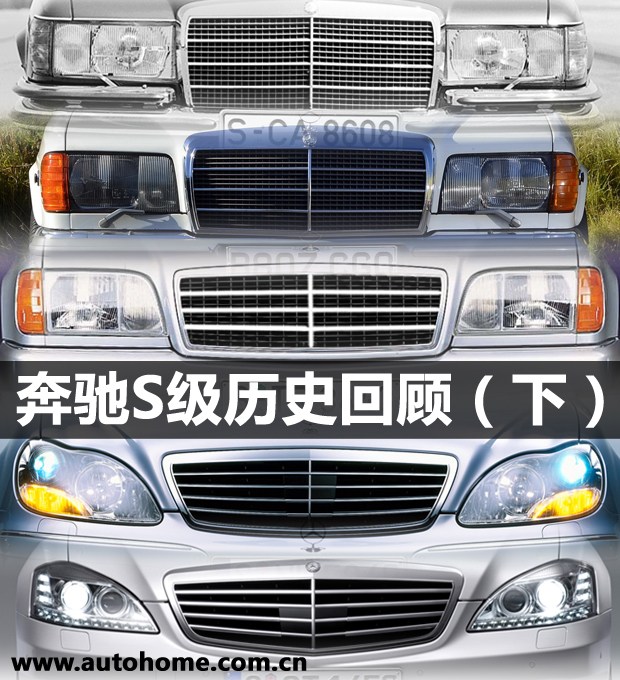
The fifth generation Mercedes-Benz S-Class
W116 series (1972 -1980)
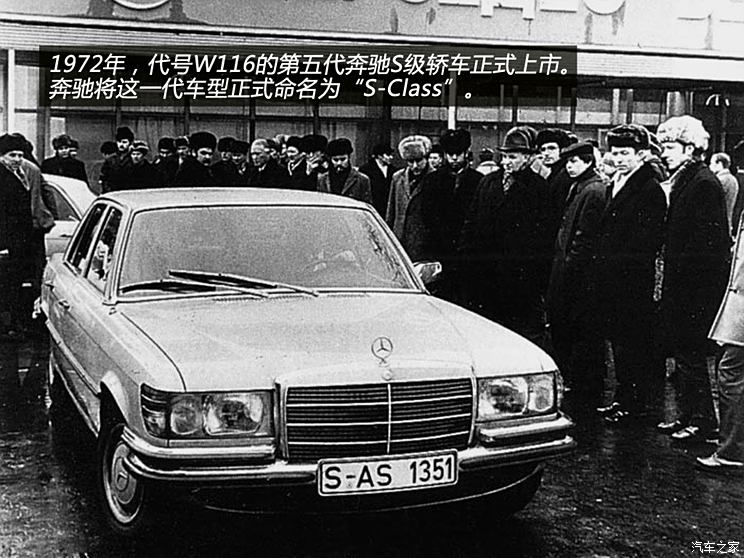
In 1972, Mercedes-Benz ushered in a milestone in the history of S-Class development, and the fifth-generation Mercedes-Benz S-Class, the most important model in Mercedes-Benz history, W116 officially listed. This generation of cars was officially named "Mercedes-Benz S-Class sedan" for the first time. Since then, Mercedes-Benz S-Class has opened a new chapter in luxury cars. After decades of tempering, Mercedes-Benz S-Class sedan has become a dream car in people’s hearts.
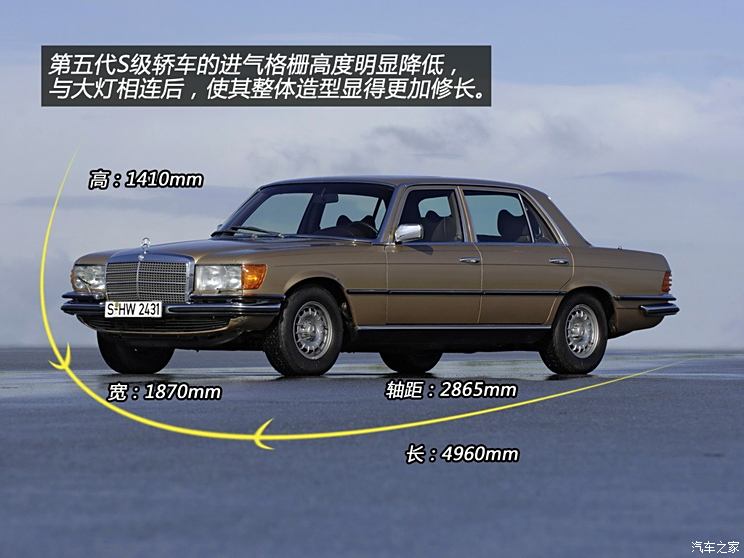
The fifth-generation Mercedes-Benz S-Class initially launched three models: 280 S, 280 SE and 350 SE. In terms of design, the fifth-generation Mercedes-Benz S-Class has made great progress. The width of the iconic "shield" air intake grille has been significantly lengthened, and the headlights have been changed from the vertical type of the previous generation to the horizontal rectangular headlights. After the headlights are connected with the air intake grille, the front visual effect is even lower. Take Mercedes-Benz 280 SE as an example, its body size is 4960mm long, 1870mm wide, 1410mm high, 2865mm wheelbase and 1665kg body weight.
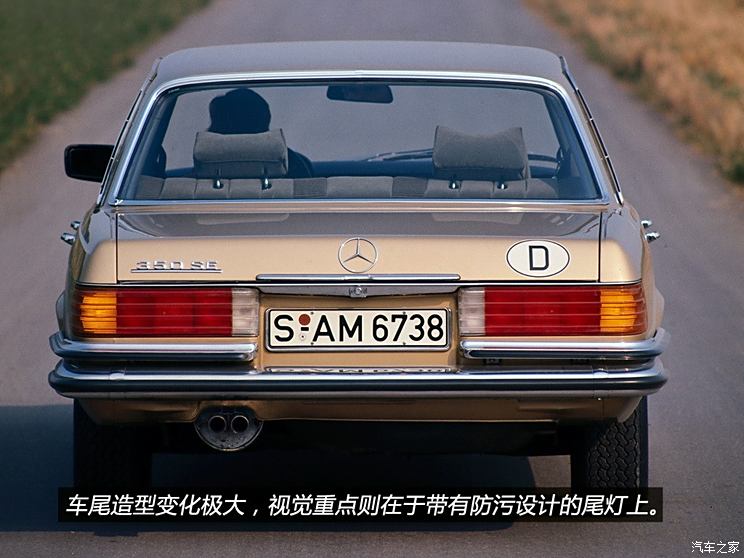
When it rains, the windshield on the A-pillar of the fifth generation S-class car can ensure that the vehicle has a good view, and it can be used as a channel for rainwater to flow, so that the side window glass can always be clean as new even in bad weather. After the earth-shaking changes in the shape of the front of the car, the tail design of the fifth-generation Mercedes-Benz S-Class must not be sloppy. Large-sized long taillights are particularly eye-catching, and the protruding design of the taillights is impressive, with outstanding visual effects and anti-pollution effects.
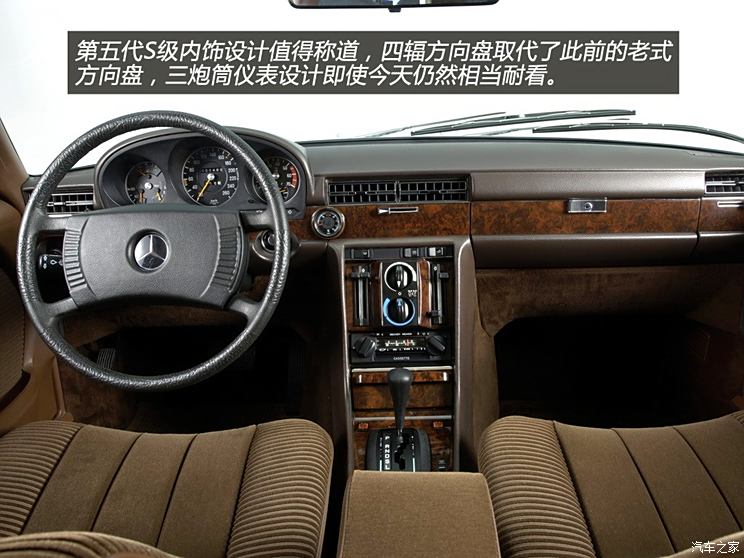
The interior design of the fifth-generation Mercedes-Benz S-Class is also commendable. Compared with the hard and primitive steering wheel structure of the previous generation S-Class, the instrument panel with thick padding and the four-spoke safety steering wheel with shock absorption device can provide maximum protection for drivers in case of accidents. The three-barrel dashboard is not outdated even today, and the clock is integrated under the right tachometer. This generation of S-class no longer uses a large area of chrome decoration to set off the luxurious atmosphere in the car, but the wood grain decoration is still covered on the soft center console to show the noble temperament of S-class.
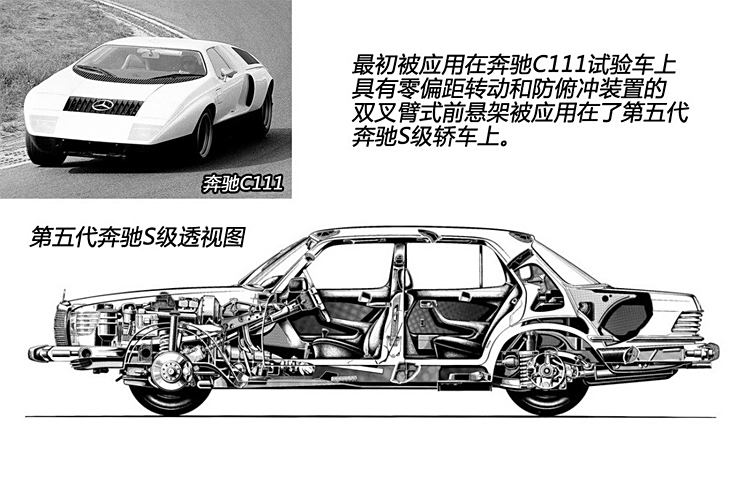
The fifth generation Mercedes-Benz S-Class sedan has also made great progress in chassis design and manufacturing technology. The double wishbone front suspension with zero offset rotation and anti-dive control device appeared as a standard configuration on S-class cars for the first time. This innovative technology was initially tested on the C111 test vehicle and finally passed the verification. Its application has further improved the handling of S-class cars.
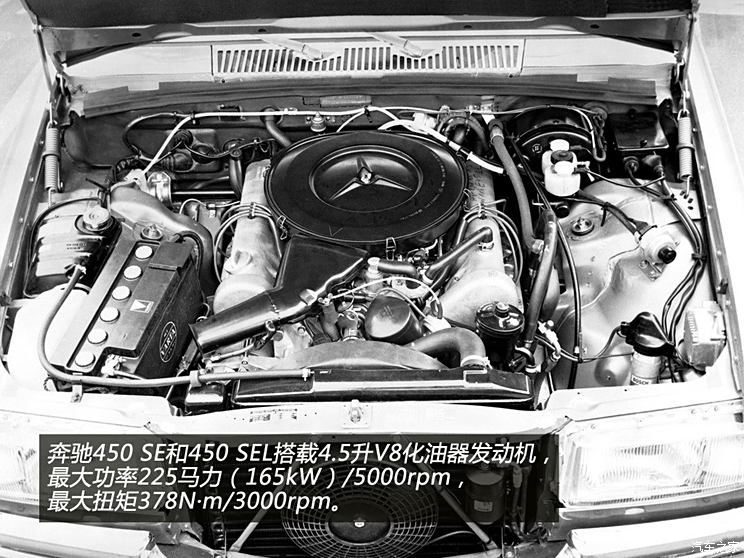
Mercedes-Benz 280 S and 280 SE models are equipped with a 2.8-liter inline six-cylinder double overhead camshaft engine code M110. Six months later, the more powerful Mercedes-Benz 450 SE drove off the production line. The car was equipped with a 4.5-liter V8 engine with a maximum power of 225 HP (165kW)/5000rpm and a maximum torque of 378 N m/3000 rpm. In contrast, the 193 horsepower power of the North American version of the 450 SE model is slightly inferior. At the same time, Mercedes-Benz released the 450 SEL model, which extended the wheelbase by 100mm on the basis of the 450 SE, so as to provide more legroom for the rear passengers. Since November 1973, Mercedes-Benz has successively launched 350 SEL and 280 SEL series models.
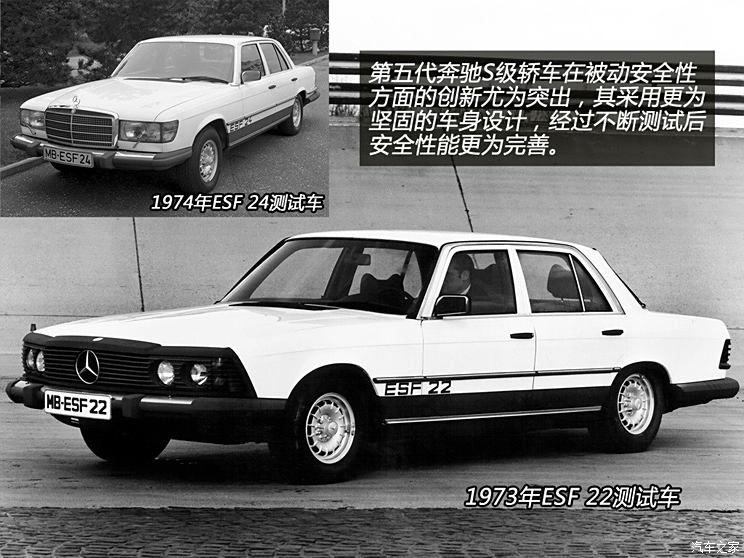
In terms of passive safety, the fifth-generation S-class was also at the forefront of global luxury cars at that time. Mercedes-Benz has completely applied many safety designs of the 350 SL convertible to Mercedes-Benz S-Class cars. The fuel tank is no longer located at the rear of the car, but is placed on the rear axle, which greatly reduces the risk factor when the vehicle collides. Compared with the previous generation S-Class, the biggest improvement of the fifth generation Mercedes-Benz S-Class is the adoption of a stronger roof beam design, a high-strength rigid roof and columns, and a stronger door. By adjusting the deformation strength of the front and rear parts of the vehicle, the absorption effect of the energy generated after the collision in the front and rear buffer collapse areas can be significantly improved.
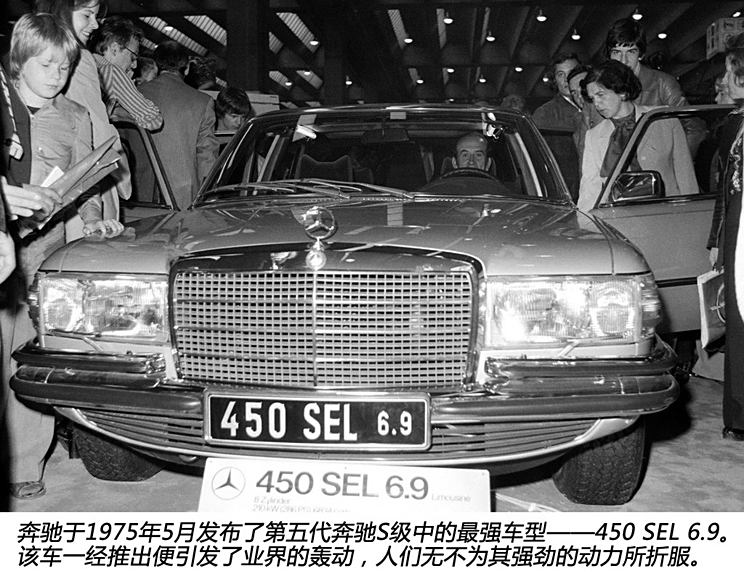
In May 1975, Mercedes-Benz released the fifth-generation S-class top model-450SEL 6.9, which also became the real successor of Mercedes-Benz 300 SEL 6.3. As the flagship model of the fifth-generation Mercedes-Benz S-Class, it is bound to be more distinctive than other models in the same family. At that time, very advanced equipment such as automatic air conditioning and headlight cleaning appeared as standard configuration on Mercedes-Benz 450 SEL 6.9. The hydro-pneumatic suspension system with self-balancing function was first applied to Mercedes-Benz S-Class cars to ensure the best ride comfort. In addition, 450 SEL 6.9 also has extraordinary handling performance.
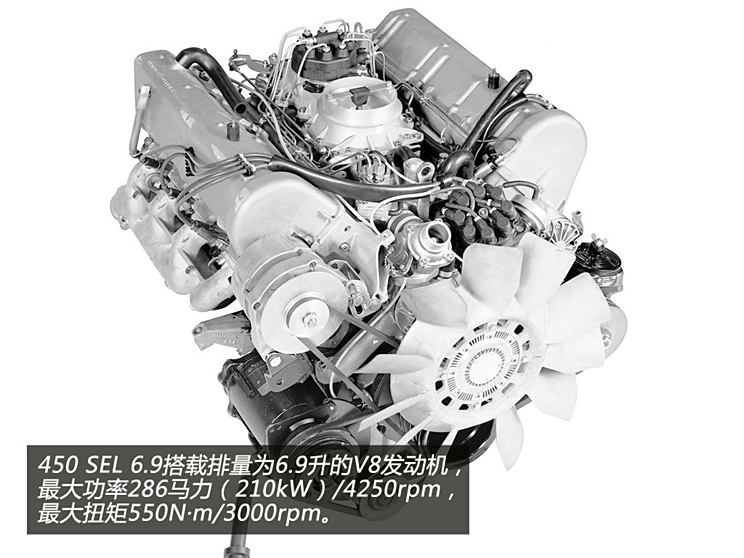
The powerful 6.9-liter V8 engine of Mercedes-Benz 450 SEL 6.9 is developed from the extremely successful 6.3-liter V8 engine of Mercedes-Benz, with the maximum power of 286 HP (210 kW)/4,250 rpm and the maximum torque of 550 N m/3,000 rpm. With the 3-speed automatic transmission, the maximum speed can reach 230km/h, and its 6.9-liter displacement is also the largest mass-produced passenger car in Germany so far. The British "Car" magazine commented on this: "A luxury car with such power and weight must have good road driving stability, and the 450 SEL 6.9 is not disappointing in any way. Its overall handling is completely handy, its suspension system can adapt to the bumps caused by road bumps, the gearbox shifts smoothly, and the power steering system also highlights the soft steering response of the vehicle. "
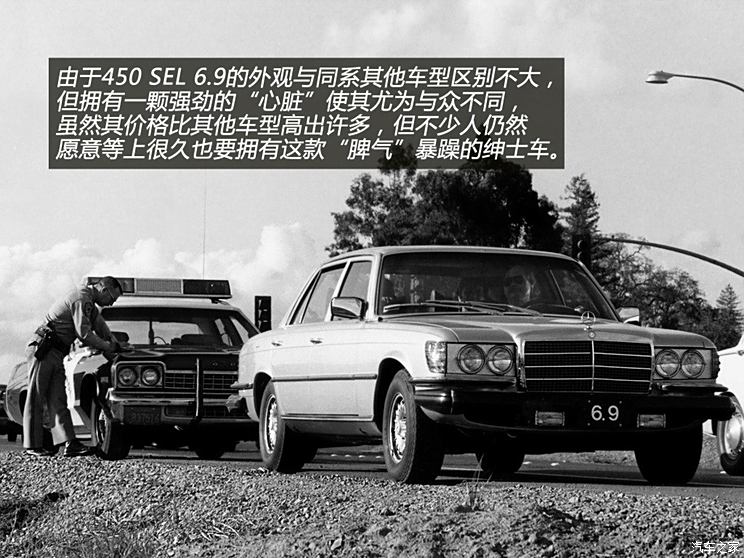
Except for the mighty "6.9" at the rear and wider tires, the appearance of Mercedes-Benz 450 SEL 6.9 is basically the same as that of other models in the same department, which is undoubtedly the best choice for those relatively low-key gentlemen. Although the price of Mercedes-Benz 450 SEL 6.9 is more than twice as high as that of 350 SE, it has been highly sought after since its debut, and people often have to wait 18 months to drive this most powerful luxury car made in Germany. During the production period of four and a half years, Mercedes-Benz produced a total of 7380 450 SEL 6.9 models.
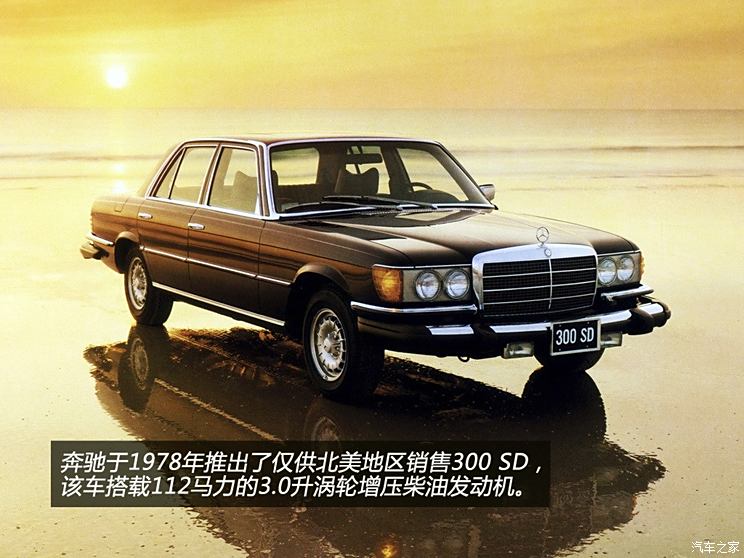
From November 1975 to February 1976, Mercedes-Benz improved the fuel injection system on 2.8, 3.5 and 4.5-liter engines to meet the stricter emission standards of most European countries at that time. It abandoned Bosch’s electronically controlled D-Jetronic fuel injection system and replaced it with a newly developed Bosch mechanically controlled K-Jetronic fuel injection system. In 1978, Mercedes-Benz introduced the 300 SD with a 3.0-liter inline five-cylinder turbocharged diesel engine, with a maximum power of 112 HP (82 kW)/4,200 rpm and a maximum torque of 228 N m/2,400 rpm. This car was only sold in North America, and it was also the first luxury car with a diesel engine.
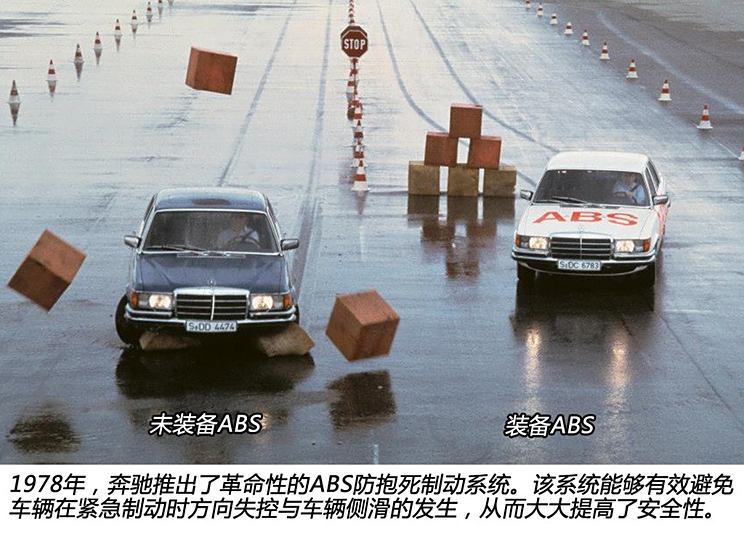
In the autumn of 1978, the fifth-generation Mercedes-Benz S-Class introduced a breakthrough innovative technology-anti-lock braking system (ABS), which effectively avoided the occurrence of out-of-control direction and wheel slip during emergency braking, and greatly improved the safety performance of vehicles. ABS system is the technical crystallization jointly developed by Mercedes-Benz and Bosch, which has made outstanding contributions to the active safety of automobiles. Although it seems that ABS system is a common routine configuration today, at that time, the introduction of Mercedes-Benz S-Class with ABS technology caused a great sensation.
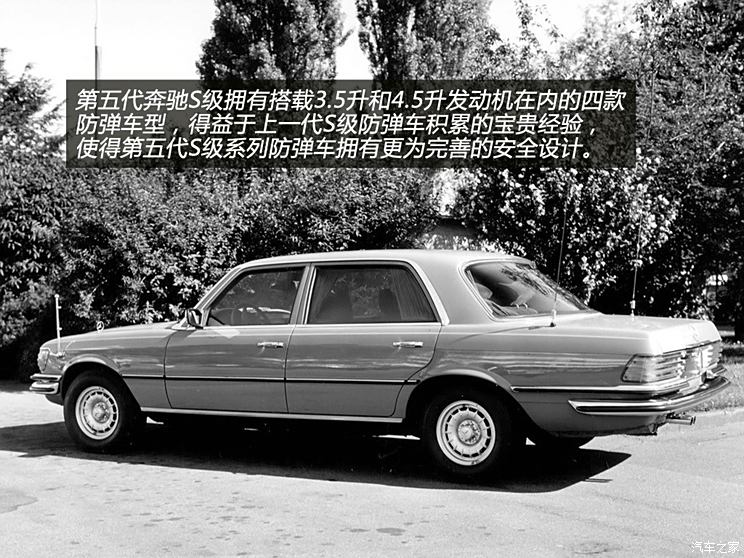
At the same time, the fifth-generation Mercedes-Benz S-class bullet-proof car has a different interpretation of "safety". Based on the experience accumulated in the research and development of the previous generation S-class 280 SEL 3.5 bulletproof vehicle, the protective safety design of W116 series has been greatly improved. Mercedes-Benz has provided 292 bullet-proof vehicles with eight-cylinder engines for many government agencies in Europe and other countries, including Mercedes-Benz 350 SE, 350 SEL, 450 SE and 450 SEL.
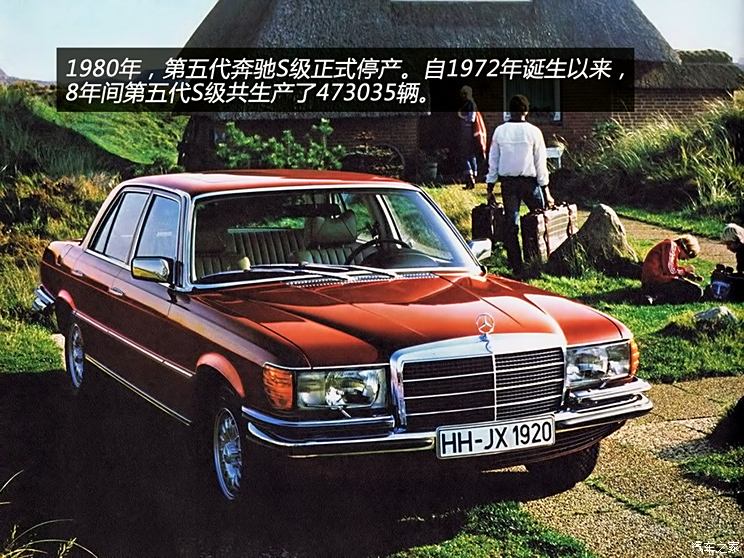
Like the previous situation where the third-generation S-Class and the fourth-generation S-Class existed at the same time, the fifth-generation S-Class did not stop production immediately because of the birth of its next-generation model. From April to September, 1980, the fifth-generation Mercedes-Benz S-Class gradually withdrew from the global luxury car market. With the last Mercedes-Benz 300 SD driving off the production line of sindelfingen factory in September, 1980, the fifth-generation Mercedes-Benz S-Class was officially discontinued. During the eight-year production cycle, the fifth generation S-class produced a total of 473,035 vehicles.
The sixth generation Mercedes-Benz S-Class
W126 series (1979 -1991)
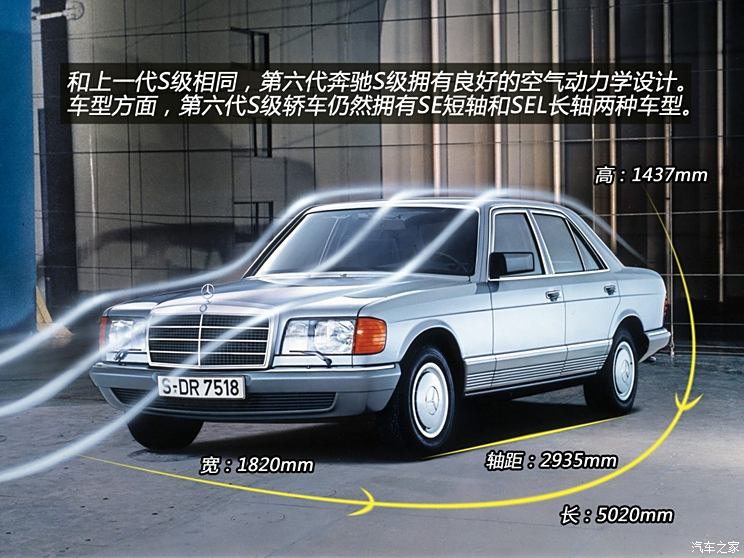
In September, 1979, Mercedes-Benz released the sixth generation S-Class sedan code-named W126 at the Frankfurt Motor Show. This series was originally composed of seven models, including 280 SE, 380 SE and 500 SEL, and the body size of this generation of S-class has also increased. Taking the SE series as an example, its body size is 5020mm long, 1820mm wide, 1437mm high and 2935mm wheelbase. The wheelbase of the long-wheelbase model is increased by 140mm, which significantly improves the rear legroom and the width of the rear door entrance. The launch of the sixth generation Mercedes-Benz S-Class defined the new standard of luxury cars at that time.
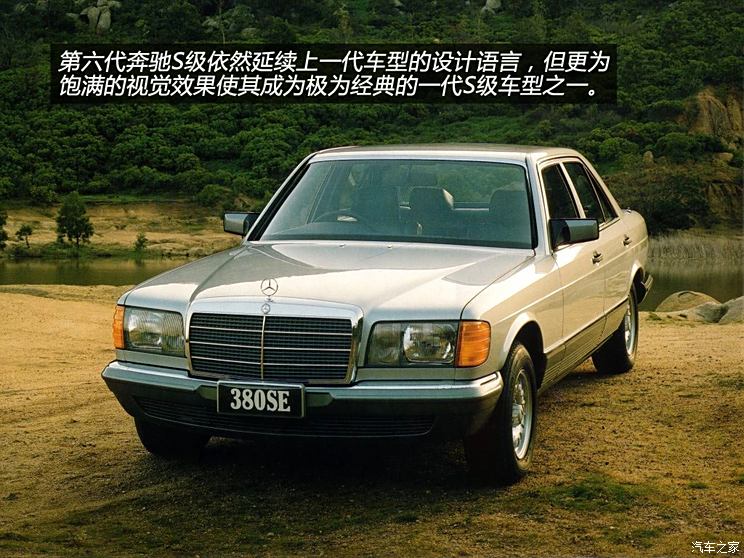
The design idea of the sixth generation Mercedes-Benz S-Class is consistent with that of the previous generation, and the "shield" air intake grille has become an indispensable design element of Mercedes-Benz S-Class. Compared with the previous generation, the appearance of the sixth generation Mercedes-Benz S-Class is particularly full, and the corners become more rounded. The anti-pollution taillights of the previous generation S-Class have been well inherited. After observing the appearance of the sixth-generation Mercedes-Benz S-Class, you will find that although the style is the same, the fifth-generation Mercedes-Benz S-Class is so "thin". In addition, Mercedes-Benz also abandoned the traditional bumper for the first time in this generation of S-Class cars, and adopted a large plastic-coated bumper design. The wide plastic protective plates on both sides of the car body were placed at the same height as the bumper between the wheel arches, making the front and rear and side walls of the car body visually integrated.
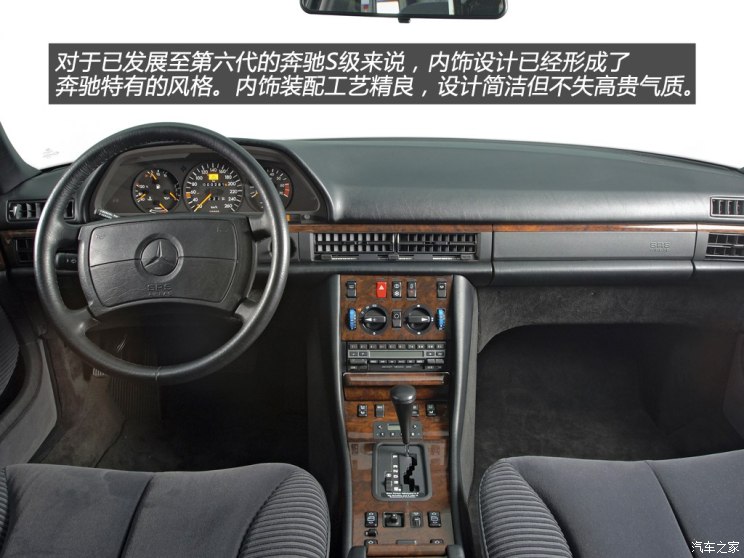
In terms of interior, after the development of several generations of models, Mercedes-Benz S-Class has formed a fixed interior design style. The shape and layout of the center console are similar to those of the previous generation S-class, and the dashboard is still designed with three rings. The appearance of the clock on the dashboard has become the tradition of Mercedes-Benz S-class. In order to highlight the noble temperament of Mercedes-Benz S-Class, a large number of wooden decorative boards in the center console are still the best expression method, and various keys are neatly embedded in the wooden decorative boards. Now it seems that this design is a bit too thin, but at that time, this was the biggest feature of the interior of Mercedes-Benz cars. The eight-direction electric adjustable seat with memory function and the front seat heating system add icing on the cake to the configuration of the sixth-generation Mercedes-Benz S-Class.
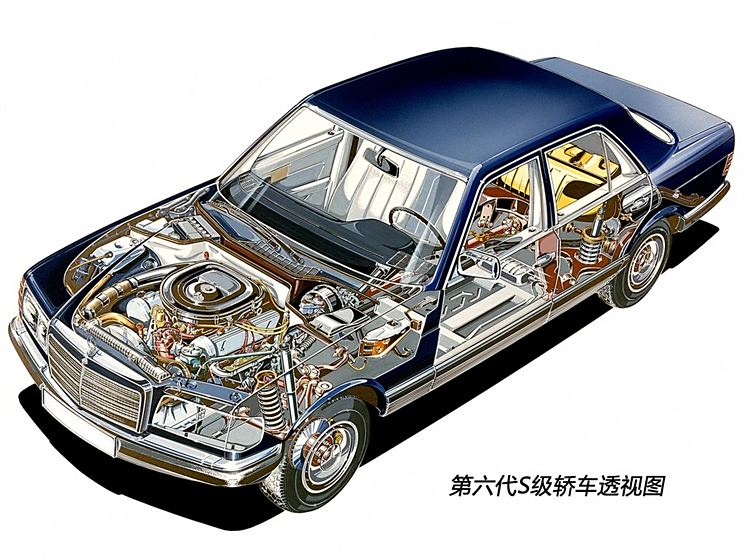
The sixth generation Mercedes-Benz S-Class adopts the front double wishbone/rear single diagonal arm suspension structure, which improves the driving comfort and its handling accordingly. The research and development focus of this generation of Mercedes-Benz S-Class is to reduce energy consumption. The application of lightweight body materials and aerodynamic lightweight body structure makes the fuel consumption of the sixth generation S-class car save 10% compared with the previous generation S-class car.
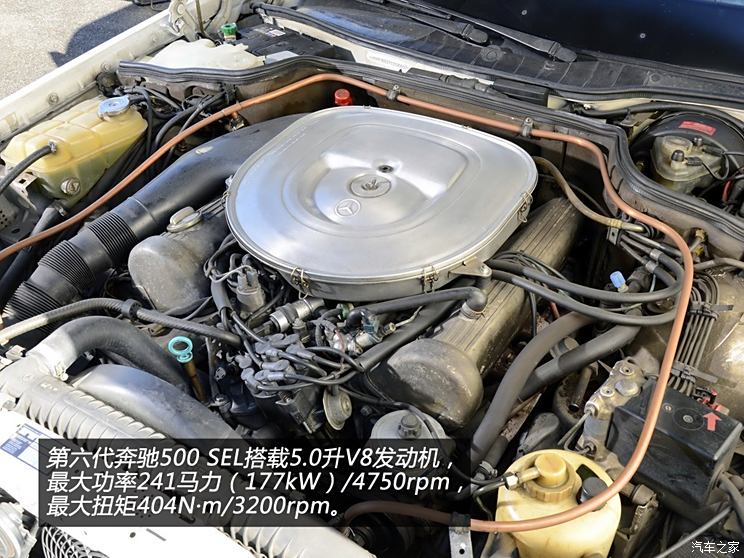
The sixth-generation Mercedes-Benz S-Class initially offered four-engine models for consumers to choose from, among which the 280 S and 280 SE used a 2.8-liter inline six-cylinder engine, and the 300 SD equipped with a 3.0-liter turbocharged diesel engine was still only available for the North American market. It is worth mentioning that V8 engines with displacement of 3.8 liters and 5.0 liters appear in this generation of S-class vehicles, in which the maximum power of the 5.0-liter V8 engine is 241 horsepower (177kW)/4750rpm, the maximum torque is 404 N m/3200 rpm, and the top speed is 225km/h with a 4-speed automatic gearbox.
?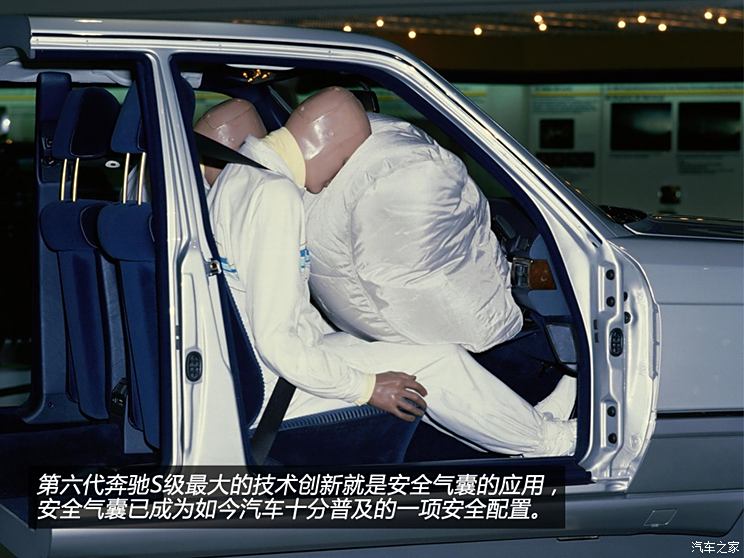
The body design of this generation of S-class cars was integrated with the most advanced safety research results at that time. Thanks to the brand-new design concept, the car can resist frontal impact at a speed of 55 kilometers per hour, and the sixth generation of S-class cars has thus become the first car in the world to meet the frontal impact resistance standard. Two years after the launch of the sixth generation S-Class, Mercedes-Benz S-Class sedan took the lead in applying the driver airbag, and added the front passenger airbag to the model produced in 1985. This move of Mercedes-Benz has also become another innovative technology in the field of automobile safety design.
More exciting videos are all on the car home video platform.
The invention of airbag originated from a near miss accident. In 1952, American engineer Hetrick slammed the steering wheel and braked suddenly to avoid an obstacle while driving. At the same time, he and his wife instinctively stretched out their arms to protect their daughter who was in the center seat in the front row. Although there was no danger, the self-taught engineer was inspired by it. He believes that there must be a protective device that can replace the arm to protect the front-row personnel who rush forward in case of emergency braking or collision. It took him two weeks to design an automobile cushioning safety device. Its principle is to install an air reservoir filled with compressed air in the engine compartment. When the automobile is collided head-on, the inertial impact force urges a sliding weight to move forward, thus pushing the air reservoir to quickly inflate the air bag hidden in the center of the steering wheel and beside the dashboard, so as to minimize the injuries of people in the automobile.
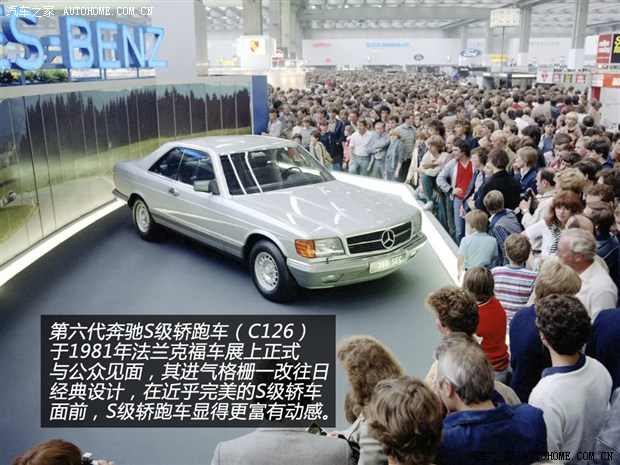
At the Frankfurt Motor Show in the autumn of 1981, the sixth-generation Mercedes-Benz S-Class family added an elegant eight-cylinder engine coupe (C126), and the double-door hardtop design made the sixth-generation S-Class’s huge body particularly distinctive. The "shield" grille did not appear on the S-class coupe, but was replaced by the huge "three-pointed star" logo of Mercedes-Benz. Its two fully improved V8 engines both used the latest "Mercedes-Benz Energy Concept" at that time, which effectively reduced fuel consumption and harmful gas emissions.
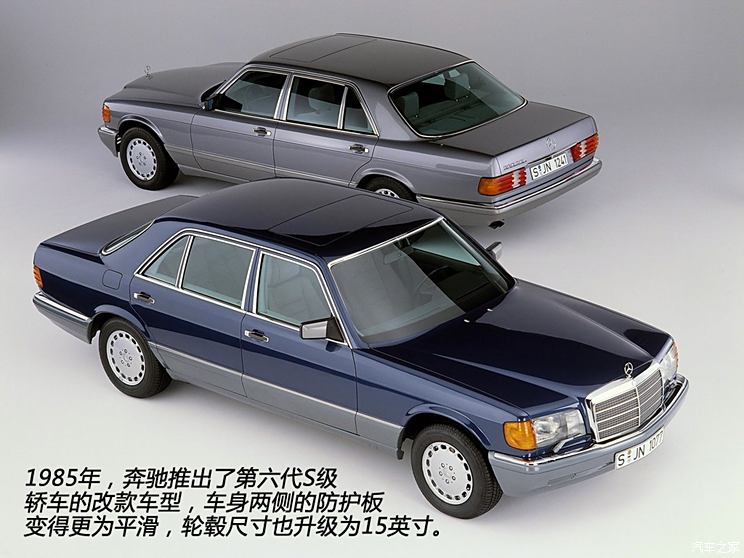
In 1985, Mercedes-Benz launched a brand-new upgraded sixth-generation S-Class sedan at the Frankfurt Motor Show. The appearance of the modified Mercedes-Benz S-Class has been moderately adjusted, and the design of protective plates on both sides of the car body is smoother, instead of adopting groove design. Like the bumper, the height of the side guard is also reduced. The wheel hub size has been upgraded from the previous 14 inches to 15 inches. After the modification, the design of the rear axle of the sixth-generation S-class sedan has also been slightly adjusted, thus reducing the engine noise and greatly improving the ride comfort.
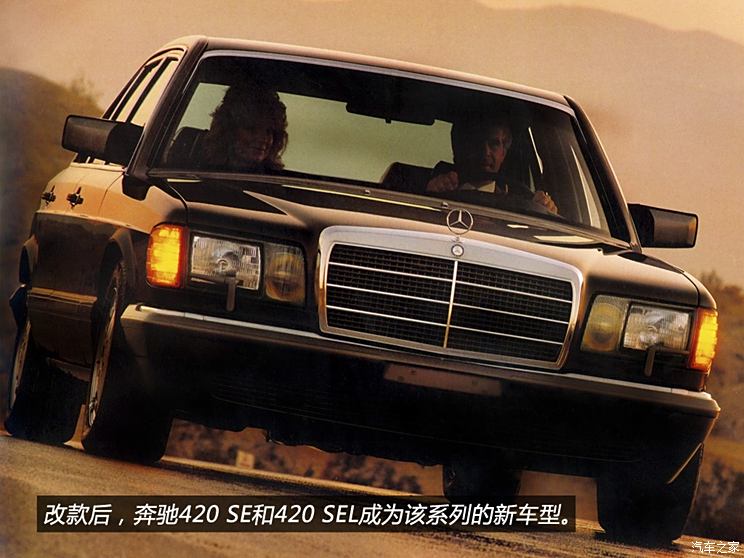
In addition, the modified S-Class is equipped with larger brake discs to improve the braking safety performance, and automobile anti-slip regulation system (ASR) also appears in the sixth-generation Mercedes-Benz S-Class. Two newly designed inline six-cylinder engines have replaced the 2.8-liter M110 engine that has been used for many years, including the 4.2-liter V8 engine. After the 5.0-liter engine is newly equipped with electronic ignition system and Bosch KE Jetronic electronically controlled mechanical injection system, the output power reaches 245 HP (180kW).
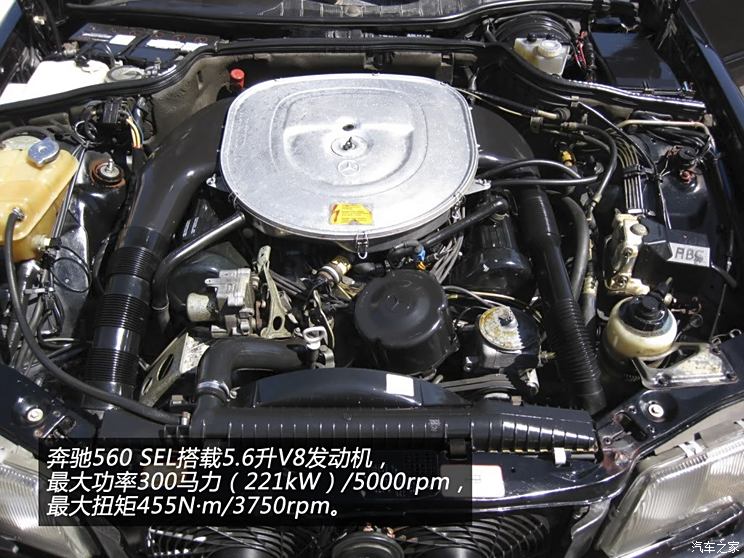
The most striking thing in the modified S-class series is the model equipped with a 5.6-liter eight-cylinder engine, which evolved by increasing the stroke of the previous 5.0-liter V8 engine, and the output power can reach 272 horsepower (200kW). In addition, there is a high-power engine to choose from, with a maximum power of 300 HP (221kW)/5000rpm and a maximum torque of 455 N m/3750 rpm. Although this engine does not integrate a closed-loop emission control system, even without a catalytic converter, this engine can still meet the emission standards stipulated by Europe. The top speed of 560 SEL and 560 SEC equipped with this engine can reach 250km/h, which has become the most powerful production model of the sixth generation Mercedes-Benz S-Class.
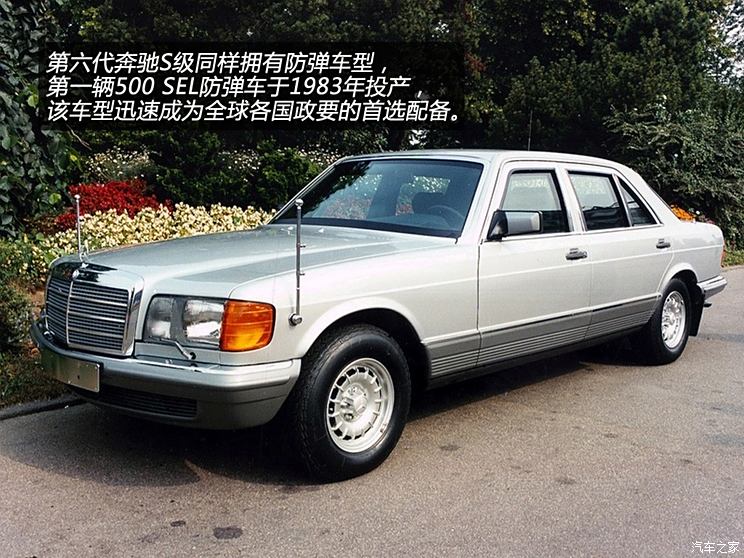
Like the previous generation Mercedes-Benz S-Class, the sixth generation Mercedes-Benz S-Class equipped with V8 engine also introduced bulletproof models. The protection design of this model has been further improved. After careful research and development, the sixth-generation Mercedes-Benz S-class bullet-proof vehicle has produced a total of 1465 vehicles. The first 500 SEL bullet-proof car was put into production in January 1983, and it has also become a beautiful landscape in the sixth generation S-class series.
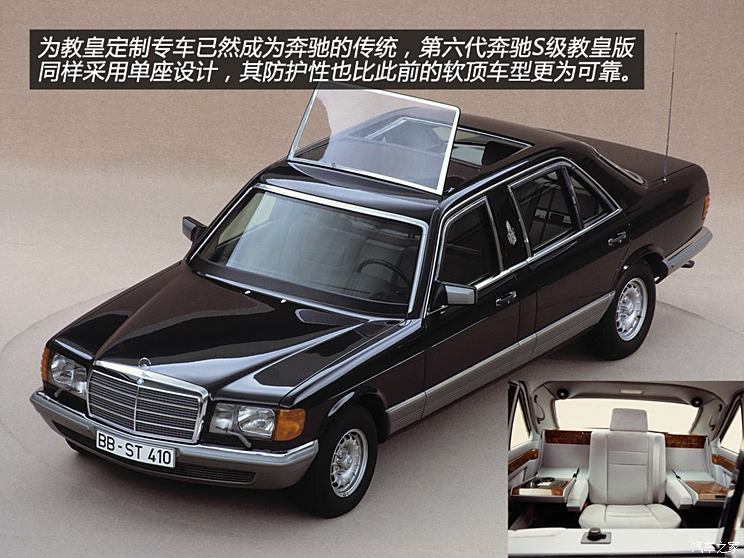
Mercedes-Benz S-Class seems to have an indissoluble bond with the Pope. The sixth-generation Mercedes-Benz S-Class was also commissioned by the Vatican Pope to customize the 500 SEL Pope version separately. Interestingly, the car did not adopt a soft top design like the previous Mercedes-Benz Pope models, but extended the wheelbase by 200 mm and raised the roof by 30 mm on the basis of 500 SEL. The rear row is still a single-seat design with skylights, and the top of the front roof is equipped with transparent bulletproof guards. In August 1985, the Pope version of Mercedes-Benz 500 SEL was officially delivered.
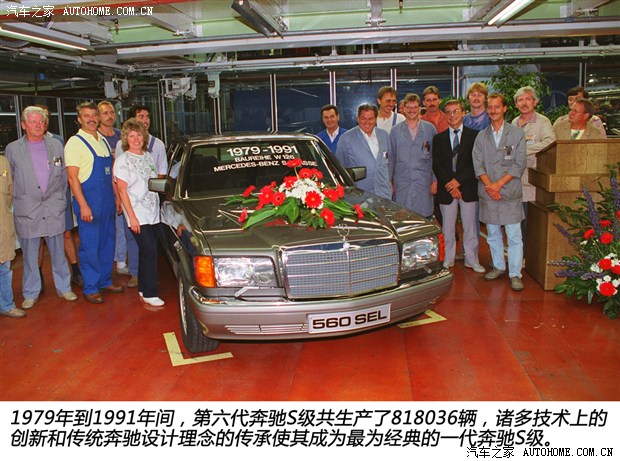
At the Geneva Motor Show in March 1991, the successor of the sixth-generation Mercedes-Benz S-Class appeared at the auto show. Although the new model was put into production one month after the auto show, the sixth-generation Mercedes-Benz S-Class for export continued to be produced for some time. Most of the models were discontinued from August to the end of October, 1991, and the last few sixth-generation S-class bullet-proof cars were not officially rolled off the assembly line until April, 1992. During the whole 12-year production period, Mercedes-Benz produced a total of 818,036 sixth-generation S-Class models, which made the sixth-generation S-Class one of the most successful luxury cars in Mercedes-Benz history.
The 6th generation Mercedes-Benz S-Class (W126) is in China.
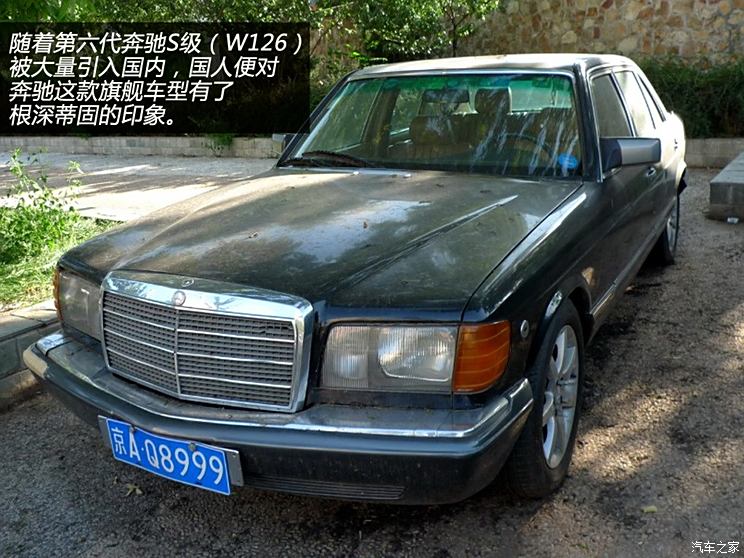
W126 is the first large-scale introduction of Mercedes-Benz S-Class cars in China. In the late 1980s, a large number of sixth-generation Mercedes-Benz S-Class cars were introduced into the domestic market through formal channels, most of which were Mercedes-Benz 420 SEL. For a time, this high-end car with huge size, powerful shape and a three-pronged star emblem on the front of the car was quickly known by Chinese people. Since then, due to the influx of foreign stolen cars and used cars into the domestic market, the W126 introduced through formal channels has gradually lost its market. There are various models of W126 flowing into the domestic market through informal channels, among which the W126 models are mainly European, American and Japanese (Japanese left-hand drive vehicles are allowed to be imported into Japan).
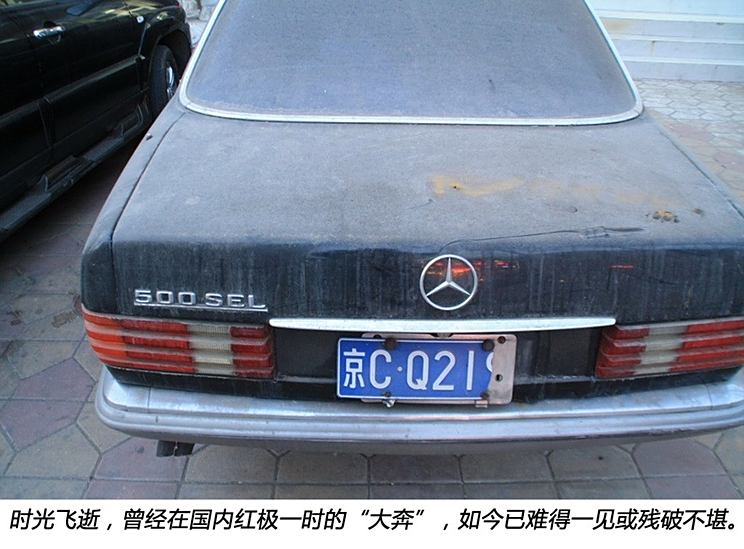
It was also at that time that the sixth-generation Mercedes-Benz S-Class reached its peak in China. The standard wheelbase and long-axis version of the sixth-generation Mercedes-Benz S-Class can be seen everywhere in the country, and some coastal cities can even see the sixth-generation S-Class coupe version. The European version and the American version of W126 can be easily distinguished from each other in appearance. The headlights of the American version are split, and the front and rear bumpers are obviously much longer than those of the European version. At that time, the sixth-generation Mercedes-Benz S-Class of basic models appeared around us, and it was then that Chinese people began to have unspeakable special feelings for this flagship Mercedes-Benz model. From the "big rush" in the wedding team, we can see the "Mercedes-Benz feelings" in their hearts.
Seventh generation Mercedes-Benz S-Class
W140 series (1991 -1998)
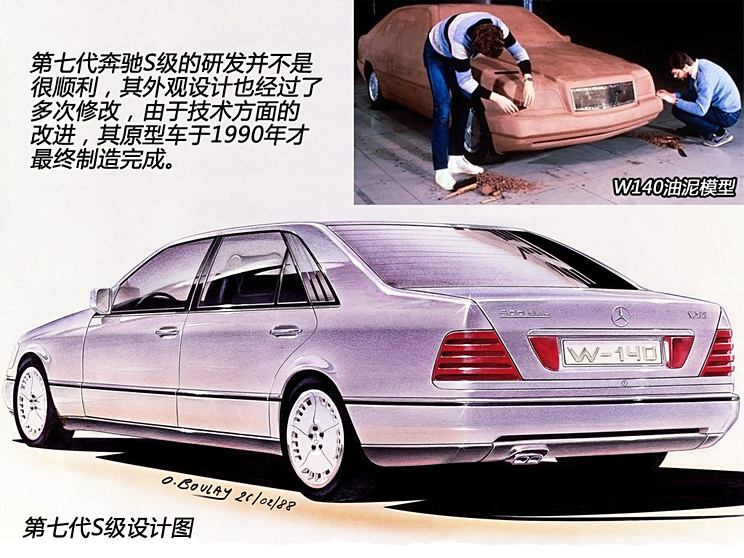
The research and development of the seventh-generation Mercedes-Benz S-Class (W140) is not smooth sailing, and its appearance design has been revised many times. It was originally scheduled to be put into production in October 1989, but in order to accommodate the V12 engine and the braking system with higher performance, it was not until June 1990 that the prototype of the seventh-generation Mercedes-Benz S-class was finally completed. In March 1991, as the successor of W126, the seventh-generation Mercedes-Benz S-Class code-named W140 was unveiled at the Geneva Motor Show. The body design incorporates the style elements of traditional Mercedes-Benz styling. Once the seventh-generation Mercedes-Benz S-Class was launched, it triggered a great change in the field of luxury cars around the world. Its appearance eclipsed other luxury brand models, and people were conquered by its unique charm.
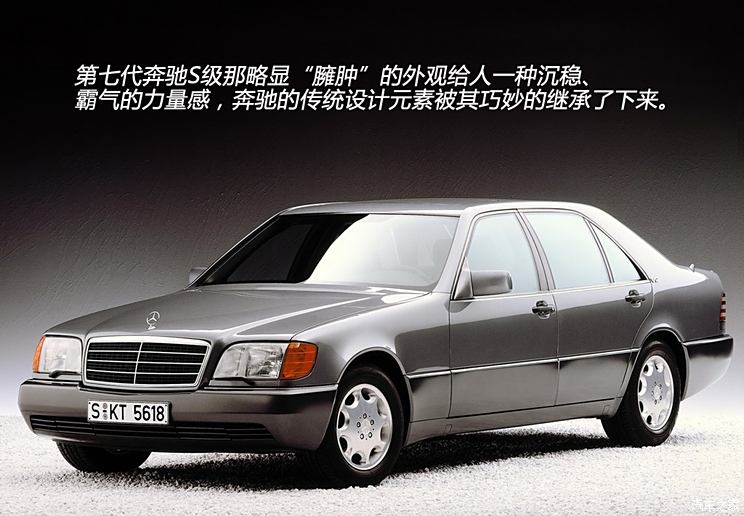
The seventh-generation Mercedes-Benz S-Class is commonly known as "Tiger Head Running". The representative air intake grille has been completely interpreted on the basis of keeping the traditional shape design unchanged. The chrome-plated frame of the air intake grille has been narrowed, and its shell and engine cover are organically integrated. In addition, this is the first time that the Mercedes-Benz "Trident Star" logo is no longer placed on the top of the air intake grille, but is located slightly behind the hood. The overall design goal of this generation of S-class cars is to achieve a high degree of aerodynamic effect, while ensuring the daily practicality to the maximum extent.
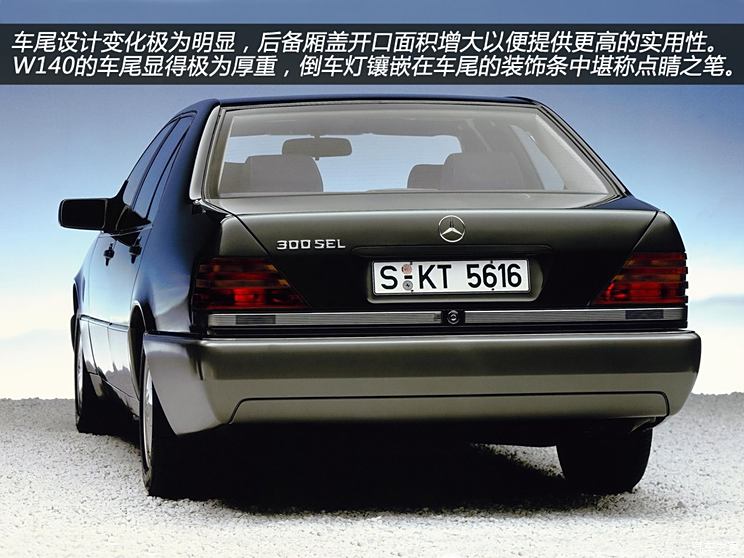
The shape change of the rear end is particularly obvious, and the anti-pollution design taillight has continued, but its shape has become much more flexible, and the reversing lamp is embedded in the decorative strip running through the rear end. Thanks to the brand-new styling design, the "body shape" of the seventh-generation Mercedes-Benz S-Class is particularly huge. Take the Mercedes-Benz 300 SE as an example, its body size is 5113mm long, 1886mm wide, 1486mm high, 3040mm wheelbase and 1880kg body weight. Like previous generations of Mercedes-Benz S-Class, the seventh-generation S-Class also introduced a SEL model with a long wheelbase, and its wheelbase was lengthened by 100 mm to increase the legroom of the rear passengers.
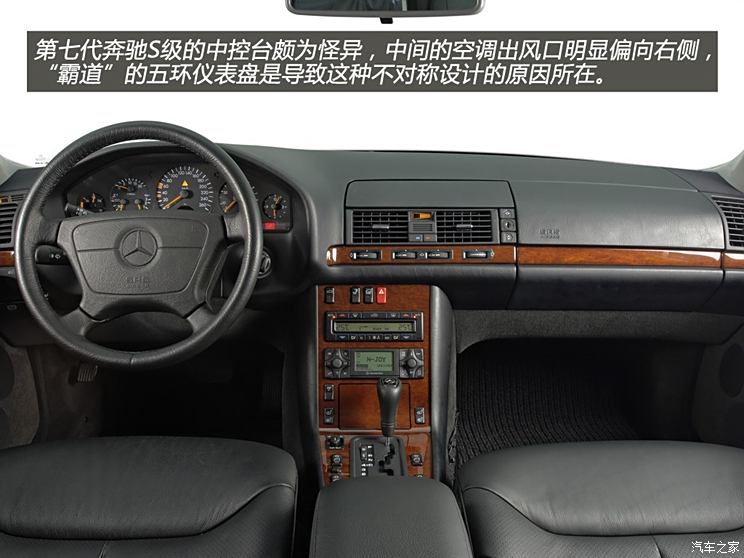
The change of the seventh-generation Mercedes-Benz S-Class is also reflected in the interior design. At first glance, the interior of the W140 will feel a little awkward, which comes from the asymmetric center console design. The dashboard is crowded with five groups of instruments, large and small, which also makes the air outlet of the air conditioner "squeezed" aside. This design can not cater to everyone’s preferences. As the flagship luxury model of Mercedes-Benz, the seventh-generation S-Class has rendered the luxury atmosphere in the car to the extreme, and the exquisite interior materials and fine workmanship make people fondle it. In addition, the seventh-generation S-Class also has many configurations such as keyless entry, 12-way electric adjustable seat with memory function, front seat heating, electric folding/heating exterior rearview mirror, automatic air conditioning, electric sunshade and retractable reversing assist lever.
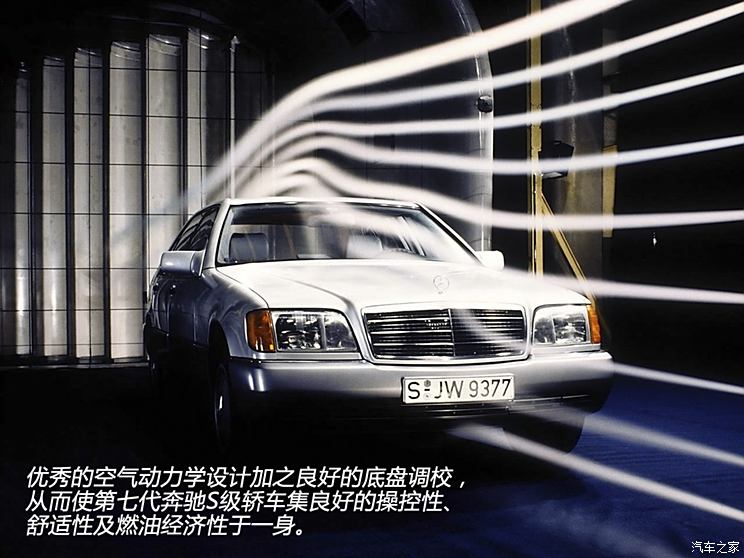
The seventh-generation Mercedes-Benz S-Class adopts the newly developed front double wishbone/rear multi-link independent suspension system, while the rear suspension is derived from the multi-link independent suspension of other models, and has been revised according to the special requirements of S-Class cars. The driving comfort has been obviously improved again. Any noise and vibration that may be transmitted to the carriage are minimized, so that people in the car can hardly feel the bumps from the road. With-speed steering system has become the standard configuration of 8-cylinder and 12-cylinder vehicles, which reduces the steering force required by drivers when driving at low speed.
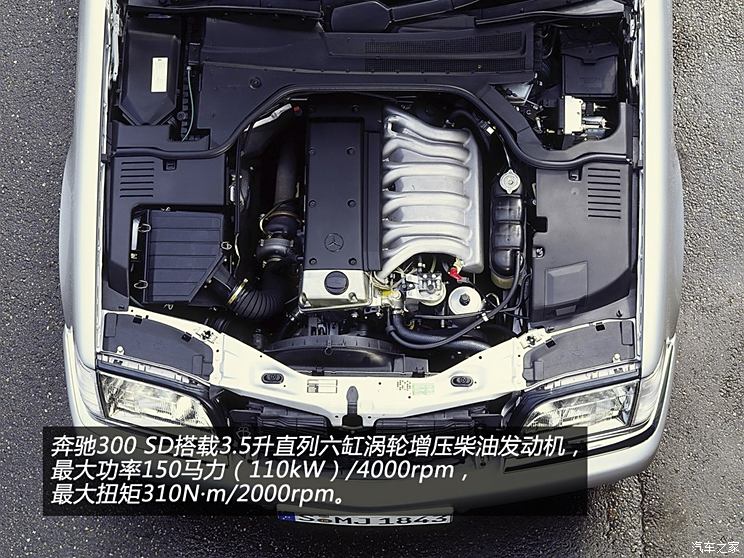
In terms of power, the seventh-generation S-Class provided a 3.2-liter (231 HP) inline six-cylinder engine and a 4.2-liter (286 HP) and 5.0-liter (326 HP) V8 engine, which used the same crankcase and Bosch LH Jetronic injection system. Different from previous models, the names of 3.2-liter and 4.2-liter models do not accurately reflect the displacement of the engine, and they are named 300 SE/SEL and 400 SE/SEL to be unified with other models. At the same time, the 300 SD equipped with a 3.5-liter inline six-cylinder turbocharged diesel engine also appeared in the W140 camp.
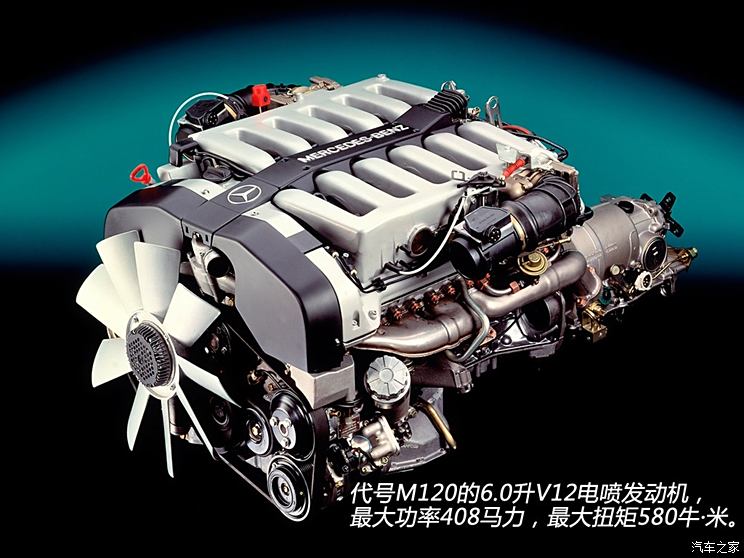
The newly designed 6.0-liter V12 engine (M120) is the first 12-cylinder engine mass-produced by Mercedes-Benz for its cars. It adopts 4-valve technology per cylinder, variable intake camshaft and electronic injection system with thermal air flow sensor, which has become one of the most powerful passenger car engines at that time. Mercedes-Benz 600 SE/SEL has a maximum power of 408 HP (300 kW)/5,200 rpm and a maximum torque of 580 N m/3,800 rpm. The engine is matched with a 4-speed automatic gearbox with a top speed of 250 km/h. Facing a vehicle weight of 2190kg, its acceleration time from 0 to 100 km/h is only 6.3 seconds.
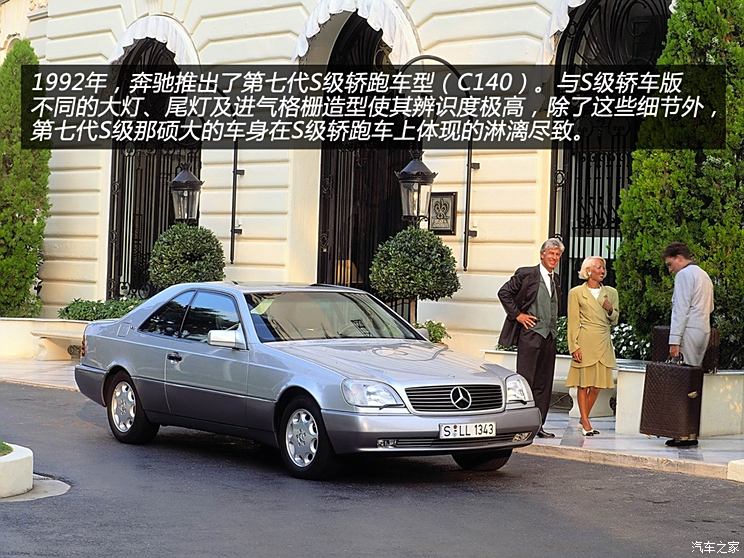
In 1992, the seventh-generation Mercedes-Benz S-Class coupe, code-named C140, was officially launched, with 5.0-liter V8 and 6.0-liter V12 engines respectively. For the huge body of the seventh-generation Mercedes-Benz S-Class, the S-Class coupe with double-door design is slightly bulky but full of charm. The huge Mercedes-Benz logo on the air intake grille comes down in one continuous line with the previous generation S-class coupe, and the rear shape of the S-class coupe is also different from that of the S-class sedan, with slightly larger taillights and smoother corners.
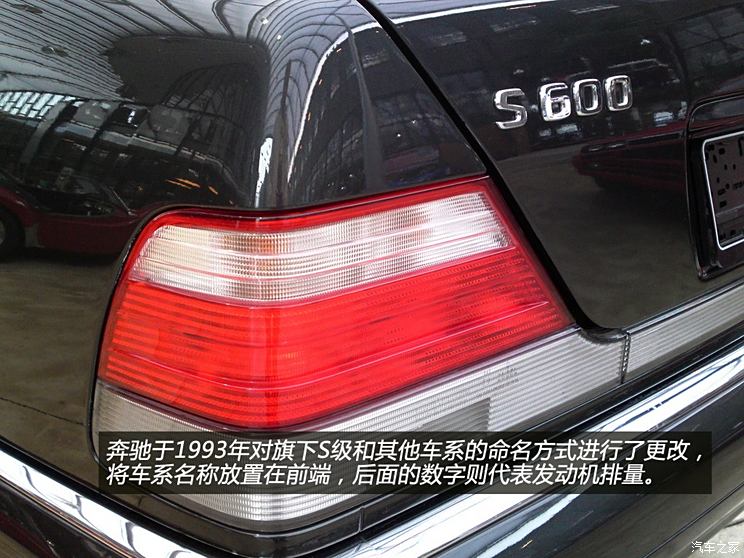
In June 1993, the seventh-generation Mercedes-Benz S-Class was named in a unified way with other cars. Put the word "S" before the three-digit number, while the suffixes "E", "D" and "L" are omitted. For example, 500 SE became S500, while 600 SEL was renamed S600 Long Axis Edition. Among them, the names of the 3.2-liter six-cylinder model and the 4.2-liter V8 model changed most obviously, and the rounding method used for unifying the names was no longer adopted, but they were directly named S320 and S420. Since then, the rear of the seventh-generation Mercedes-Benz S-Class only indicates the model level and engine displacement, but not the model version (standard version or long wheelbase version). The C140 coupe was officially renamed as "CL".
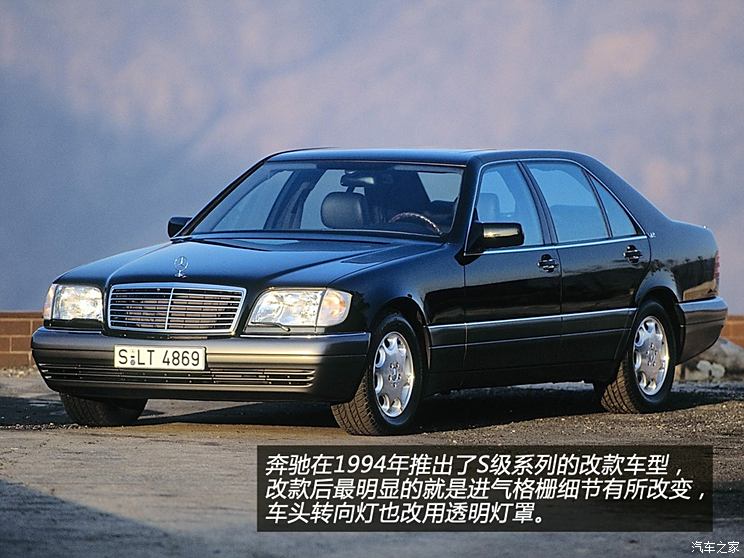
At the Geneva Motor Show in March 1994, the seventh-generation S-class was officially unveiled. A series of detail improvements make the visual effect of the car more harmonious. The banner of the air intake grille is slimmer, and the improved headlight has an optimized variable focus reflector, thus increasing the light source output by 60%. The front turn signal is changed to a colorless glass lampshade, which highlights the width effect. The improvement of the tail is also an important factor in the harmonious and beautiful overall image of the S-class sedan, and the lower part of the trunk adopts the same shape as that of the S-class coupe. In May, 1995, the reversing radar began to be the standard configuration of S600, and other models can be equipped with reversing radar. At the same time, all S-class cars no longer use the electric reversing guide rod at the rear.
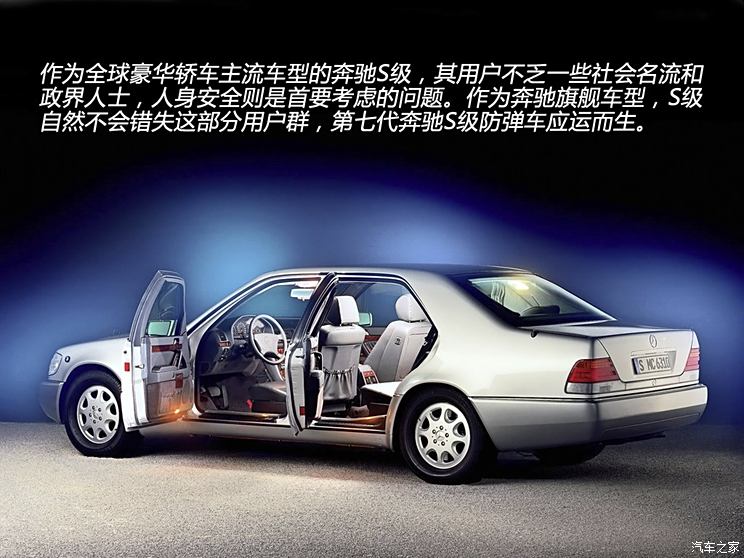
Mercedes-Benz S600 is equipped with a five-speed automatic gearbox with a torque-changing lock-up clutch. In order to further improve fuel consumption and reduce exhaust emissions, two V8 engines adopt improved crankshafts, optimized valve control systems and lightweight pistons. The fuel consumption can be reduced by 7%, while the power output is not lost at all, and the exhaust emission is also reduced by more than 40%. In September 1995, ESP electronic vehicle stability system became the standard configuration of S600. At the end of 1996, ESP electronic vehicle stability system became the standard of the seventh generation Mercedes-Benz S-Class. In addition, according to the tradition of Mercedes-Benz S-Class in the past, the seventh-generation Mercedes-Benz S-Class also has bullet-proof vehicles, and both S500 with 5.0-liter V8 engine and S600 with 6.0-liter V12 engine can provide bullet-proof vehicles for special customers.
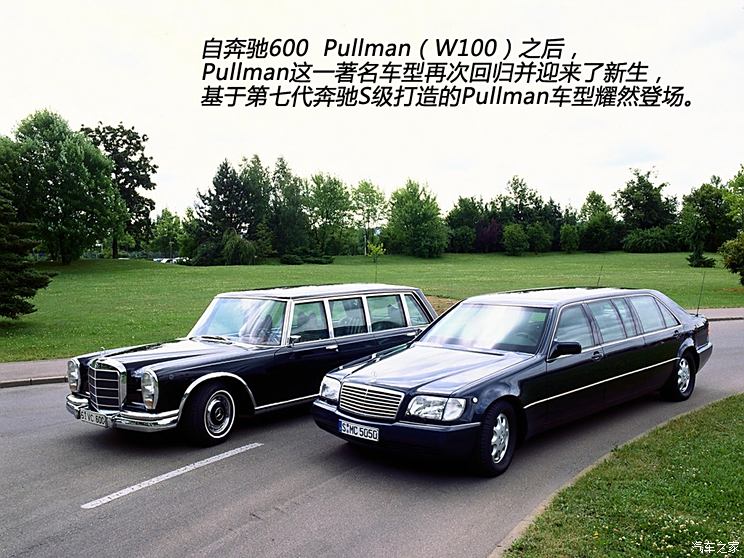
At the Frankfurt Motor Show in 1995, S600 Pullman made a stunning appearance. The dimensions of S600 Pullman are 6213mm long, 1886mm wide, 1482mm high, 4140mm wheelbase and 2700kg body weight. S600 Pullman is a full meter longer than S600′ s long wheelbase. The car adopts special protection technology and follows the long-term fine tradition of Mercedes-Benz. After lengthening, the rear passengers can benefit from it. The rear seats with opposite layout are quite comfortable and can be separated from the driver’s area by glass partitions when necessary. In August, 1996, the seventh generation S-class Pullman was put into production. Besides S600 Pullman with V12 engine, S500 Pullman with V8 engine was also available for selection.
?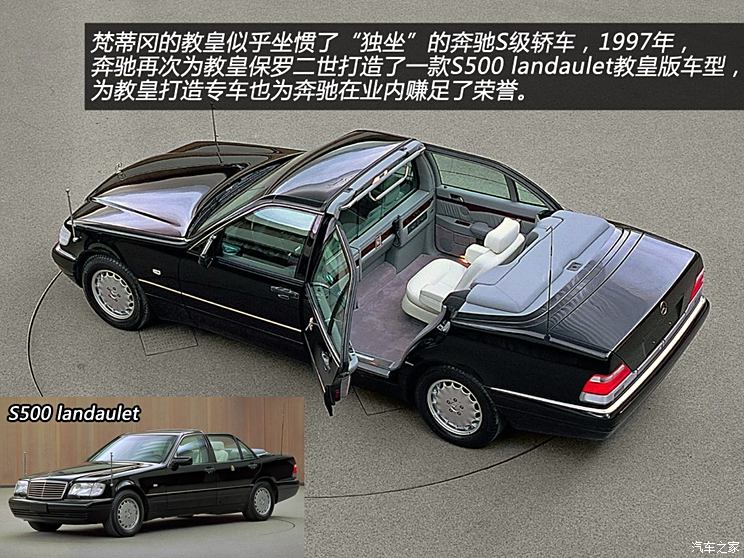
In March 1997, W140 series introduced the long wheelbase S500 landaulet. The car was specially designed for Pope John Paul II, and the single-seat layout in the back row has become the biggest feature of the Pope’s car. Using electro-hydraulic soft top design, people can clearly see the Pope sitting on the central "throne". In addition, the car is also equipped with two special folding seats for the entourage.
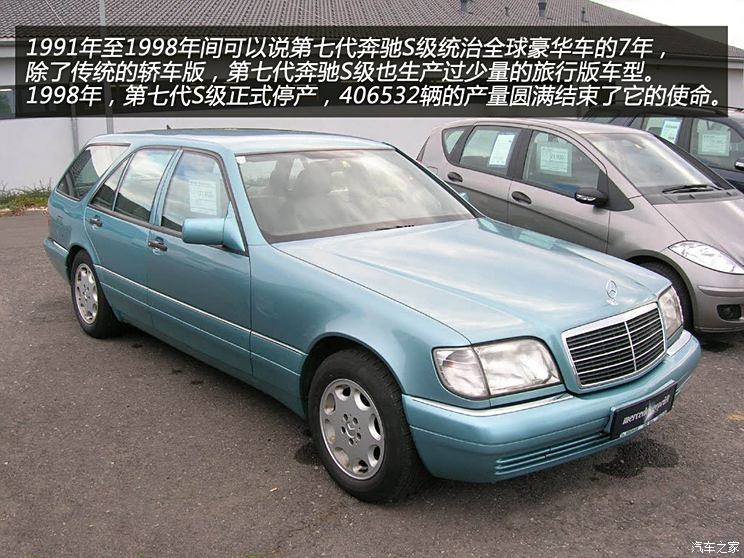
In 1998, except for the bulletproof version and Pullman extended version, the seventh generation Mercedes-Benz S-Class sedan was officially discontinued. During the seven-year production cycle, the seventh-generation Mercedes-Benz S-Class produced a total of 406,532 units. With its elegant and domineering design, rich configuration, strong power and reinterpretation of the concept of luxury car, it has become the most memorable classic model of Mercedes-Benz S-Class.
The 7th generation Mercedes-Benz S-Class (W140) is in China.
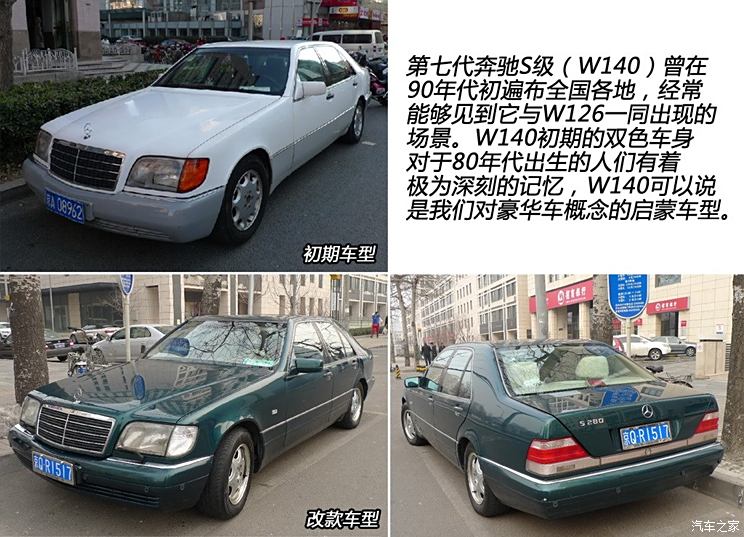
Due to the good foundation laid by W126 in China, the seventh-generation Mercedes-Benz S-Class (W140) naturally spread all over the country. At that time, it could be found in the streets and alleys all over the country. Because of its fat body and dignified design, W140 became its unique nickname in China, and the concept of "driving a BMW and riding a Mercedes-Benz" also spread among the people. This shows that Mercedes-Benz S-Class has a very high reputation in the eyes of the people.
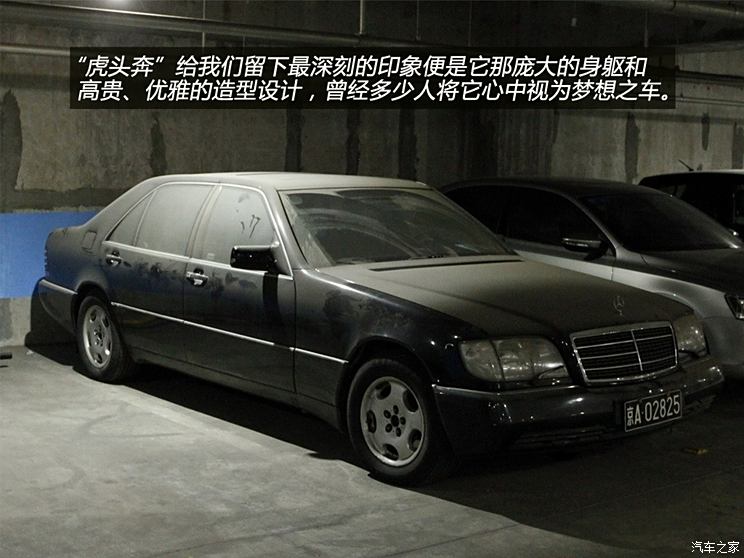
W140 also entered the China market through formal channels and informal channels. Compared with the previous generation W126, the situation of W140 flowing into China through informal channels has improved, and the proportion of car theft has decreased a lot. Because the import trade system at that time was not strict, foreign used cars could be imported for domestic sales, so that some coastal cities in China often saw many buyers waiting for the bus with cash as soon as the car arrived in Hong Kong. In those days, owning a "Tiger Head Running" was definitely called "the fighting money in the big style". The specifications introduced by W140 are different from the previous generation S-class.
Eighth generation Mercedes-Benz S-Class
W220 series (1998 -2005)
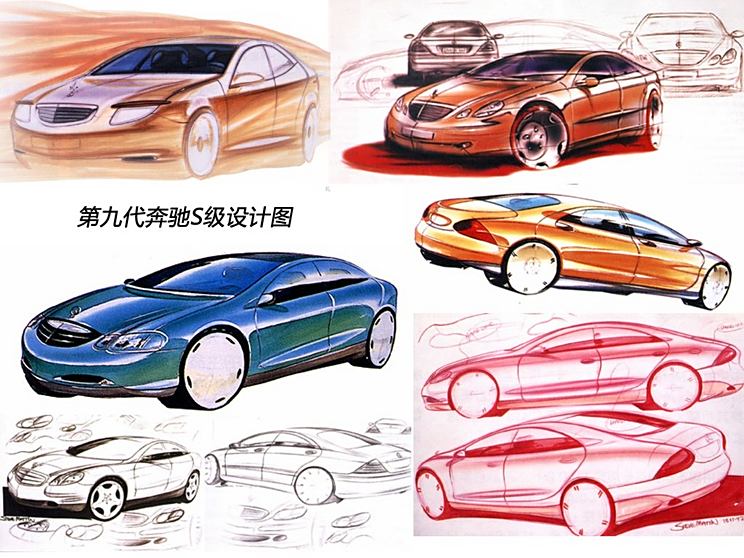
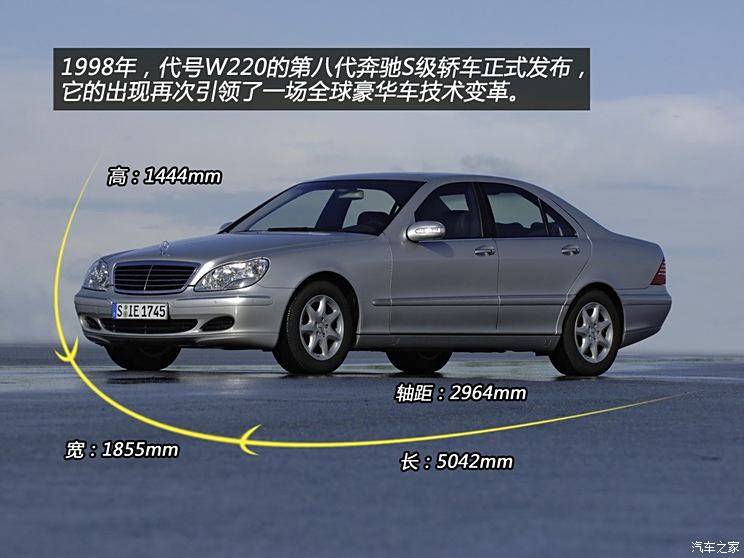
At the Paris Motor Show in September, 1998, Mercedes-Benz released the eighth generation Mercedes-Benz S-Class sedan code-named W220. After seven and a half years, it once again continued the glory of the W140 series. Compared with the previous generation, the eighth generation S-Class is more refined and elegant. Designers perfectly combine the same space and appearance experience with a more slender body. Excellent design makes the eighth generation S-Class sedan well-deserved to become the leader of the design trend of the whole automobile industry again.
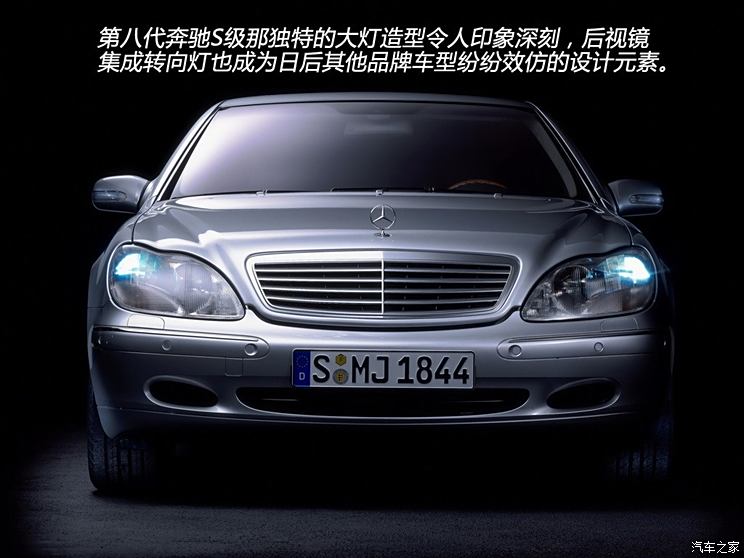
The appearance of the eighth generation S-class car has undergone earth-shaking changes. The iconic air intake grille is no longer square, but a smaller inverted trapezoidal design. The headlight shape has also changed from the previous rigorous square design, and the more agile "Butterfly" headlight shape has become the finishing touch of the eighth generation Mercedes-Benz S-class design. Mercedes-Benz skillfully integrated the turn signal in the rearview mirror, and this design has since become the object of other brands to follow.
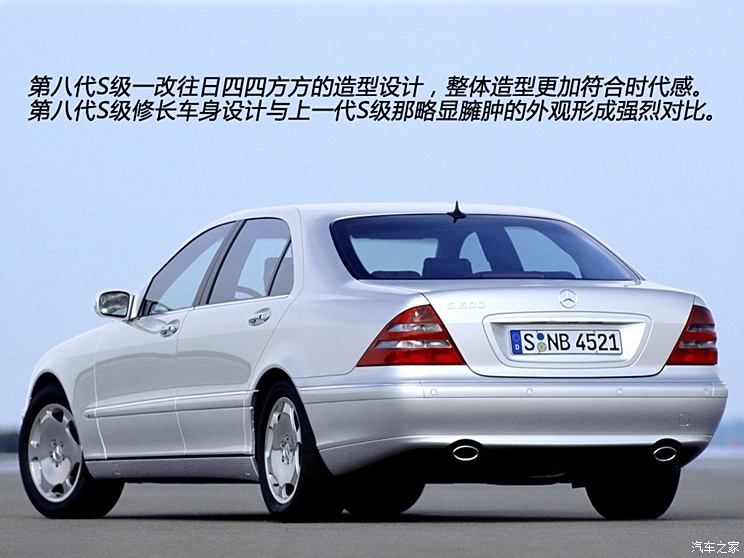
Compared with the previous generation S-Class (W140), the body of the eighth generation S-Class is no longer so burly, and its more slender and sleek shape makes it look more elegant. The rear design has also changed the heavy and stocky modeling characteristics of the previous generation models, with rounded lines filling the whole rear, and the shell of anti-pollution taillights is not so angular.
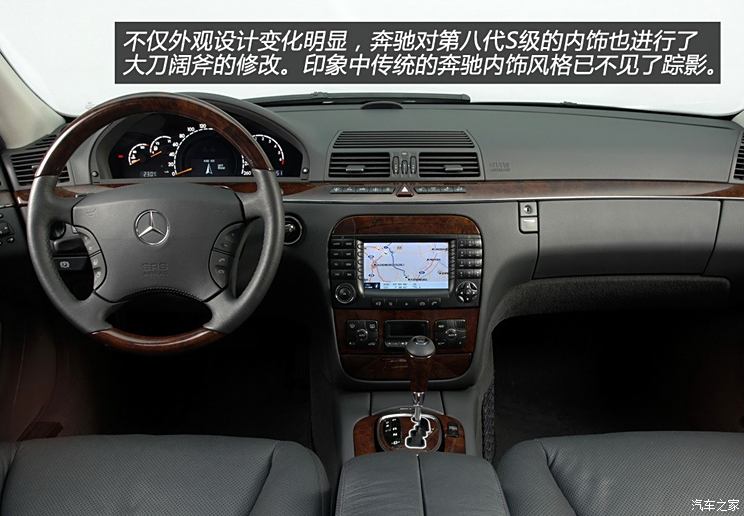
In terms of interiors, the eighth generation S-class also subverted the traditional design of Mercedes-Benz. The center console has a heavier shape and the dashboard style is quite contemporary. In terms of configuration, the eighth-generation S-class has many configurations, such as intelligent automatic cruise system, keyless start, induction wiper, zone automatic air conditioning, electric adjustable seat with massage function, navigation system and so on.
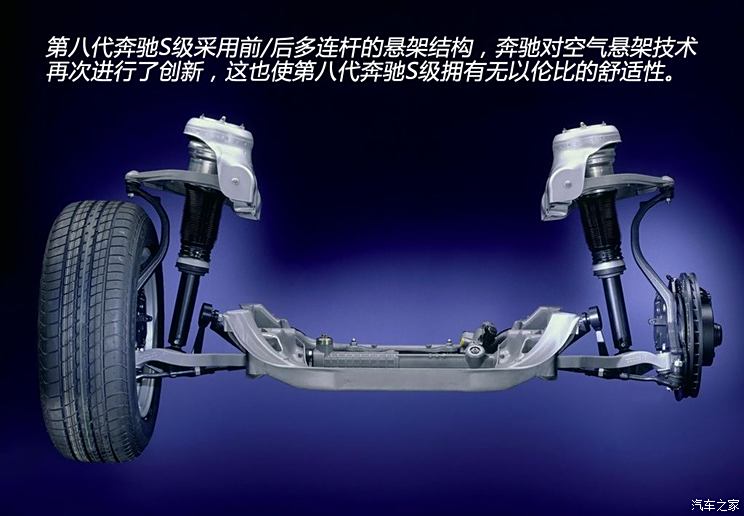
The eighth generation Mercedes-Benz S-Class adopts the front/rear multi-link independent suspension structure, and introduces a new pneumatic suspension system (AIRMATIC) and an adaptive damping system (ADS) to provide a more stable and comfortable driving experience when turning at high speed. The adjustable body height also makes the vehicle more calm in bad road conditions. When driving at high speed, top models can also automatically reduce the height of the car body according to the vehicle speed to maintain high stability.
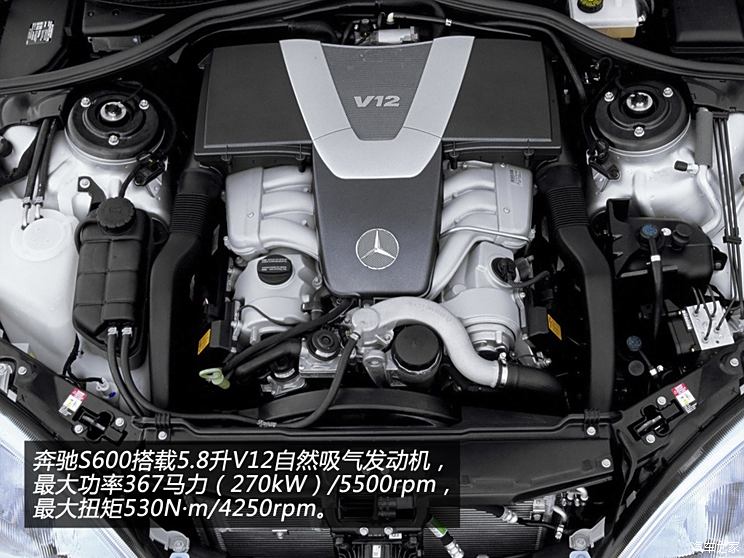
The eighth generation S-Class sedan offers two models and a variety of engines to choose from. Customers can choose either the standard wheelbase (2965 mm) or the long wheelbase (3085 mm). In terms of power configuration, engines with many innovative technologies such as dual spark plug ignition and three-valve technology include 2.8-liter (197 HP) and 3.2-liter (224 HP) V6 engines and 4.3-liter (279 HP) and 5.0-liter (306 HP) V8 engines. The 5.8-liter V12 engine has a maximum power of 367 HP (270kW)/5500rpm and a maximum torque of 530 N m/4250 rpm. With a 5-speed automatic manual transmission, the maximum speed is 250km/h under electronic speed limit.
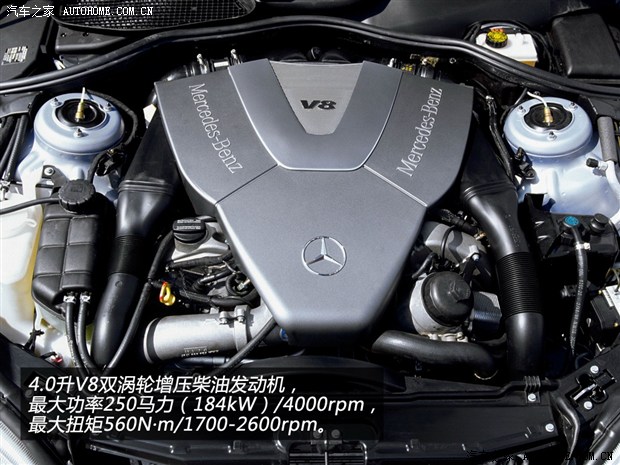
The eighth generation S-Class applies the newly developed automatic cylinder closing technology (S500, S600), which can close the temporarily unused cylinders when necessary, thus greatly reducing fuel consumption. At the same time, the cylinder closing technology will not have any influence on the smooth operation and torque output of the engine. Take the Mercedes-Benz S500 as an example. When the vehicle encounters traffic jams or runs stably on the expressway, the eight-cylinder engine can temporarily shut down four cylinders, thus reducing the average fuel consumption of the vehicle by about 7%. At the same time, the S400 CDI equipped with a 4.0-liter V8 twin-turbo diesel engine also appeared in the eighth generation S-class series.
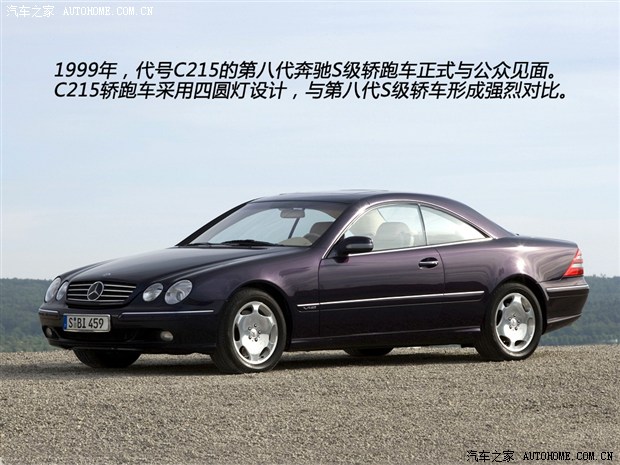
With the injection of many electronic devices such as active body control system, electronic air suspension system and driving management system, the eighth generation Mercedes-Benz S-Class sedan will push comfortable driving and flexible handling to another peak. At the 1999 Geneva Motor Show, the eighth generation S-class coupe model-CL luxury sports car code C215 made its debut in the world. For the first time, the new car is equipped with Mercedes-Benz’s innovative active body control system (ABC), which perfectly combines excellent sports handling with first-class ride comfort. After 2002, the active body control system began to become the standard configuration of S600 models, and it has been used ever since.
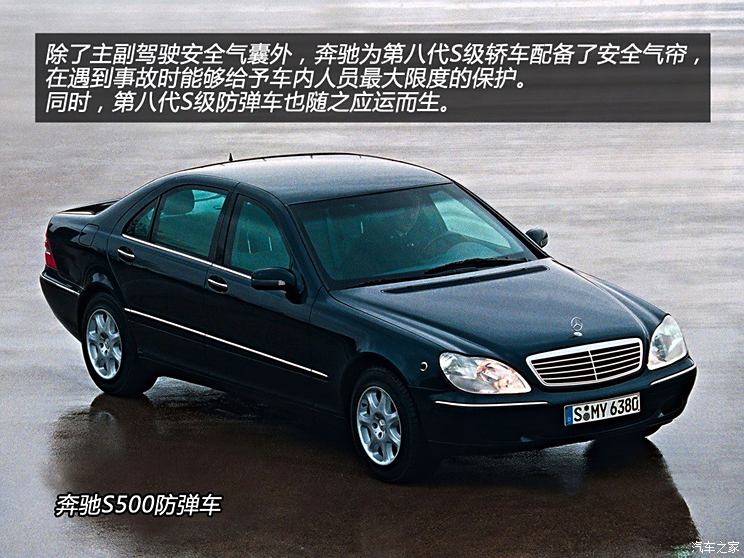
Despite having a lighter body, designers have devoted great efforts to safety. All models of the eighth generation Mercedes-Benz S-Class are equipped with the window airbag curtain extending from the A-pillar to the C-pillar as standard, and the airbag on the door side is also equipped as standard to reduce the risk of injury to people inside the vehicle in the event of a side collision. Other safety innovations of the eighth generation S-class equipment include seat belt tension tightening device, secondary generate airbag, and automatic identification system for children’s seats. At the same time, the eighth generation Mercedes-Benz S-class bullet-proof model was also born.
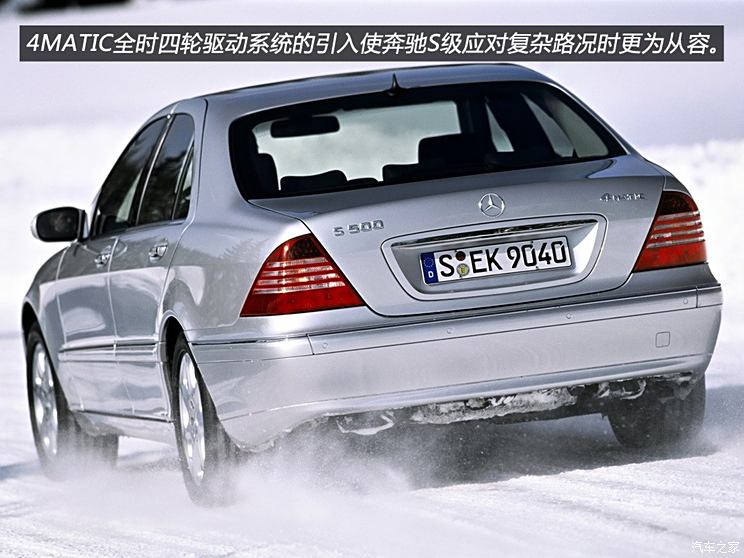
In the autumn of 2002, Mercedes-Benz upgraded the power system of the eighth generation S-class cars, and began to equip the 6-cylinder and 8-cylinder S-class cars with 4MATIC full-time four-wheel drive systems. With the help of electronic driving safety systems such as ESP electronic stability control system, ASR accelerated acceleration slip regulation and 4ETS four-wheel drive electronic traction system, 4MATIC enables S-class cars to easily meet the challenges of various complex road conditions. The application of PRE-SAFE, a preventive safety system, makes S-class active safety more perfect.
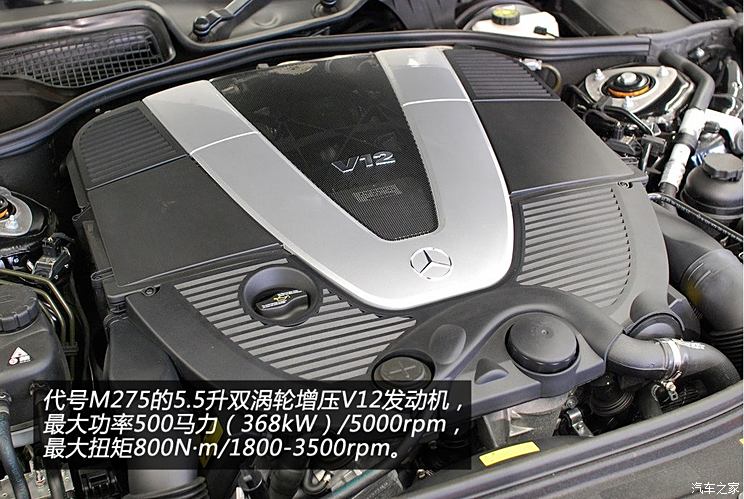
More importantly, the twin turbocharged V12 engine was first applied to the Mercedes S600 model. This exciting high-performance engine has a displacement of 5.5 liters, a maximum power of 500 HP (368kW)/5000rpm, a maximum torque of 800 N m/1800-3500 rpm, a top speed of 250km/h under electronic speed limit, and an acceleration time of 0-100km/h of only 4.8 seconds. Its surging power is enough to make all competitors sigh.
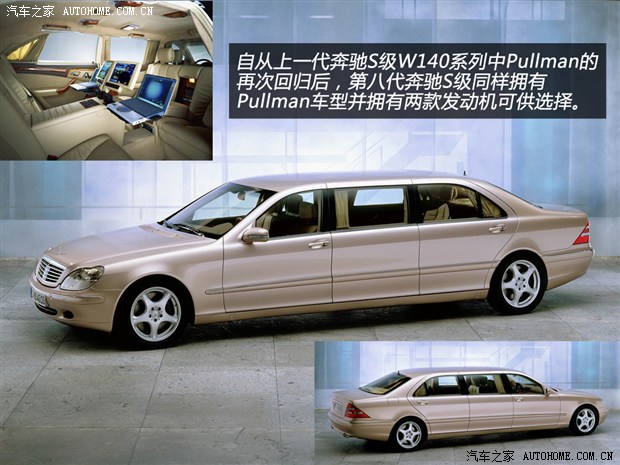
The extended Pullman seems to have become an indispensable traditional model of Mercedes-Benz S-Class, and the eighth generation S-Class has two models, S500 Pullman and S600 Pullman. Taking into account the powerful body structure, extremely spacious interior space and powerful power system has become the proud advantage of the eighth generation S-class Pullman. Compared with the previous eighth-generation S-class long-wheelbase models, the extended Pullman’s wheelbase is extended by as much as one meter. The body size of the eighth-generation S-class Pullman is 6163mm long, 1855mm wide, 1452mm high, 4085mm wheelbase and 2500kg vehicle weight. The eighth generation S-class Pullman is equipped with a 306-horsepower 5.0-liter V8 cylinder engine and a 500-horsepower 5.5-liter twin-turbocharged V12 engine.
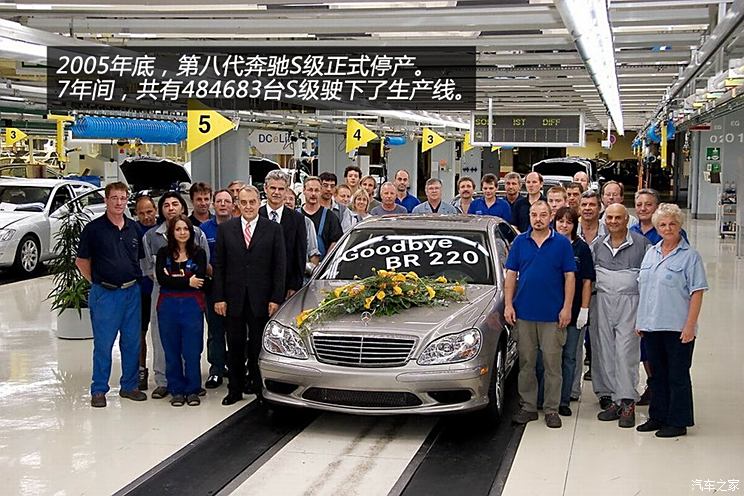
In 2005, with the last silver S430 rolled off the assembly line, the eighth generation Mercedes-Benz S-Class was officially discontinued. By December 2005, the eighth generation S-class cars had produced a total of 484,683 cars. After the evolution of several generations of models, Mercedes-Benz S-Class has become the "guide" for the design of luxury cars in the world. The eighth generation Mercedes-Benz S-Class has become the first choice for luxury cars in all fields in the world because of its noble design, unparalleled driving experience and good reputation laid by Mercedes-Benz S-Class.
The eighth generation Mercedes-Benz S-Class (W220) is in China.
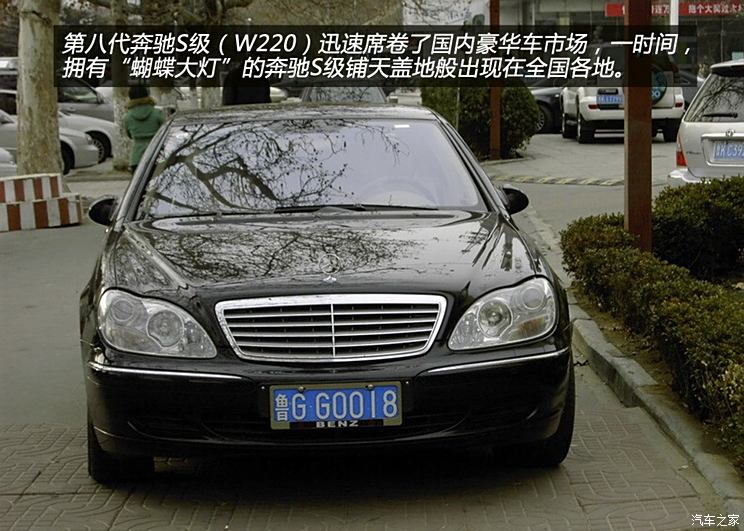
The performance of the eighth generation Mercedes-Benz S-Class (W220) in the domestic market is also remarkable. Different from the previous two generations of S-Class cars, almost all the W220 cars were introduced through formal channels, and all the models introduced into China were long wheelbase versions. In 2005, the share of S-class cars in the luxury car market in the world exceeded 36%, and the China market occupied half of the luxury car market. The two most common classic models are Mercedes-Benz S280 and S350. In addition, Mercedes-Benz S500, top model S600 and even S600 bulletproof cars have entered the domestic market one after another. Today, we can still see that there are still many eighth-generation Mercedes-Benz S-Class galloping on the road.
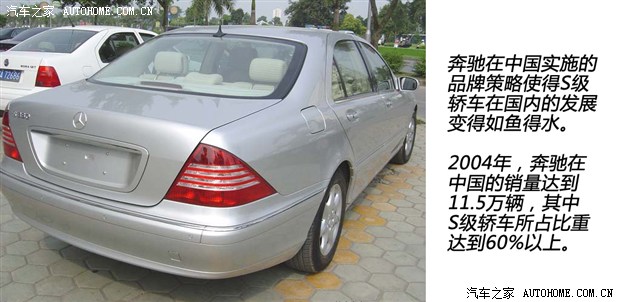
In view of the brand strategy of Mercedes-Benz, it provides a strong guarantee for Mercedes-Benz S-Class sedan to gallop the luxury car market in China. In 2004, the sales volume of Mercedes-Benz in China was 11,500 vehicles, an increase of 5% over 2003, of which S-class cars accounted for about 60%. In the first quarter of 2005, the sales volume of Mercedes-Benz S-Class sedan in China market has surpassed that of German, American and other important markets. In China, the service network layout of Mercedes-Benz has broadened the road for the market expansion of S-class cars. By the end of 2004, Mercedes-Benz had built 53 franchise sales and service centers in China.
Ninth generation Mercedes-Benz S-Class
W221 series (2005 -2013)
?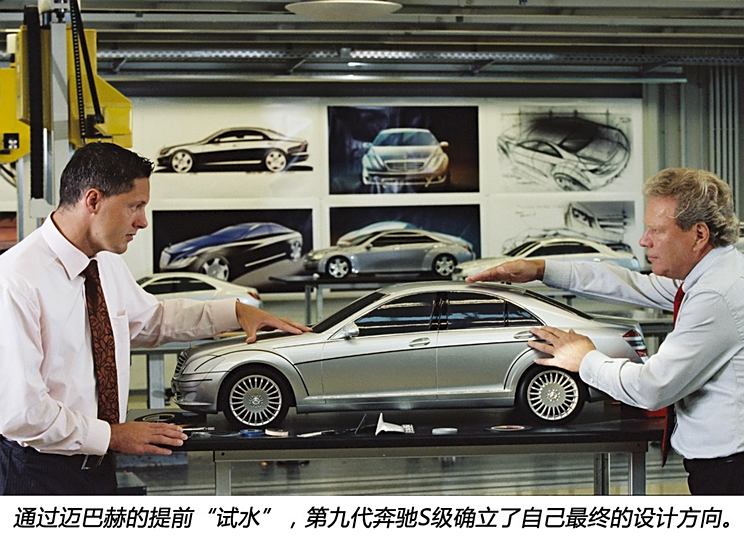
The ninth-generation Mercedes-Benz S-Class was officially unveiled to the public at the Frankfurt Motor Show in 2005. Its overall design, especially the rear styling, is very similar to that of Maibakh. It is also a good foundation laid by Mercedes-Benz S-Class in previous dynasties and such excellent innate genes. Once the ninth-generation Mercedes-Benz S-Class was launched, it quickly became the focus of people’s attention.
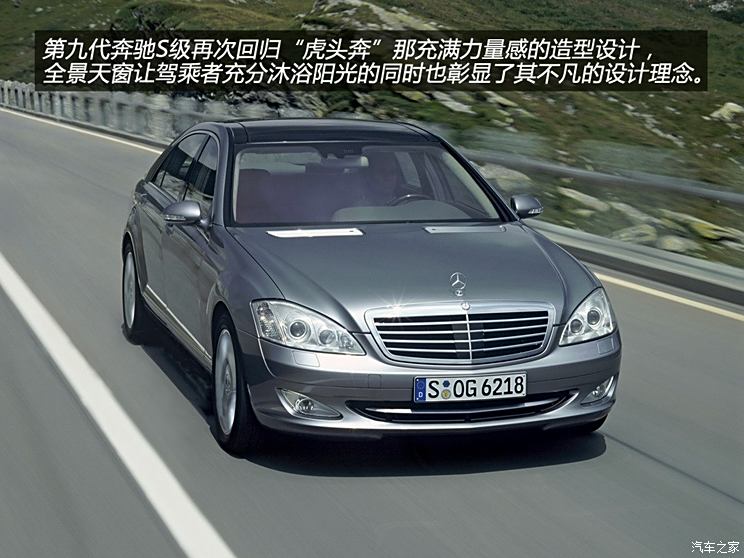
The appearance style of the ninth generation Mercedes-Benz S-Class is completely different from that of the previous generation. It changes the slim curve of W220 and returns to the vigorous and powerful design of W140 again. The "eyes" of the double-lens headlights are sharp, and the overall design highlights the noble temperament without losing the smart rhythm. The ninth generation S-Class still offers both short-axle and long-axle models, but only long-wheelbase models are available in the United States, Mexican, Russian and China.
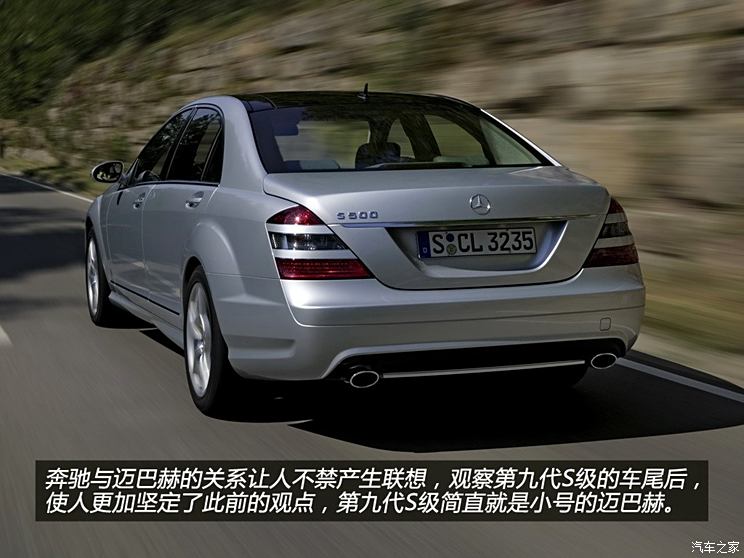
The front and rear protruding wheel arches add a sense of strength to the ninth-generation S-class sedan. The taillight style seems to be out of the consistent design style of Mercedes-Benz, but it looks like the taillight of the previous generation S-class. This illusion comes from the decorative lines of the same color as the body on the taillights, so dividing the taillights into three layers gives people a sense of freshness and can inherit the design language of Mercedes-Benz well.
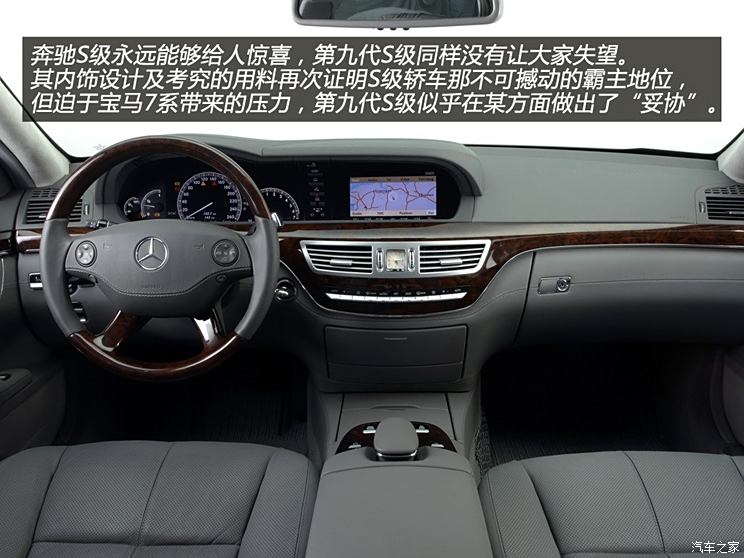
The change of the interior style of the ninth-generation Mercedes-Benz S-Class is a little too strong. This change comes from a dark horse, the BMW 7 Series (E65), which emerged in the luxury car market in 2001. The Mercedes-Benz S-Class, which has always dominated the luxury car field, is somewhat unprepared for the "challenge" of the BMW 7 Series, so that the interior of the ninth-generation S-Class has been criticized by fans. The shape of the four-spoke steering wheel is quite innovative. Re-using the design of the arms makes the interior layout more concise while retro, and the application of the LCD dashboard is in sharp contrast with this retro feeling.
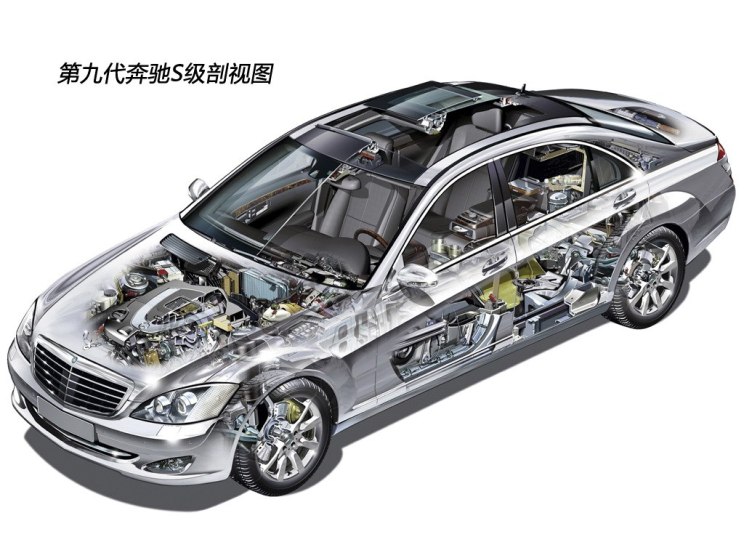
The ninth generation Mercedes-Benz S-Class adopts the front/rear multi-link AIRMATIC active air suspension system, and Mercedes-Benz further optimizes the active body control system (ABC), which also makes its driving comfort and handling reach an unprecedented level. Mercedes-Benz also equipped the ninth generation S-Class car with a brake assist PLUS system, which monitors the distance from the front workshop through radar. When the distance is too small, the system will give a warning, and if there is a possibility of collision, the system can also make corresponding brake assistance. The combination of automatic cruise control system and PRE-SAFE preventive passenger safety system makes the safety of the ninth generation Mercedes-Benz S-Class reach a new height.
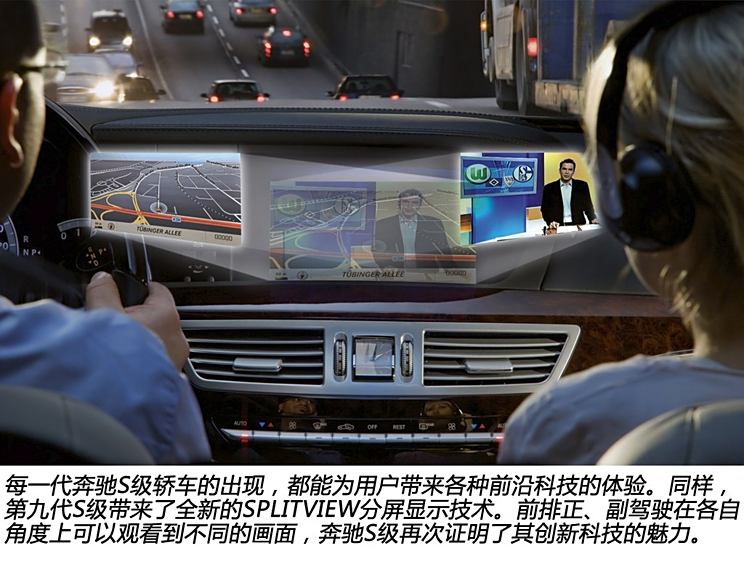
Mercedes-Benz S-Class has always lacked the leading technology, and the split-screen display technology of the ninth generation S-Class is one of them. The same monitor can display completely different images from two angles. During driving, the driver can pay attention to navigation information, while the co-pilot passengers can watch DVD movies on the same screen, and the rear passengers can watch their favorite movies through the display screen on the headrest of the front seat. While paying attention to the entertainment in the car, Mercedes-Benz does not forget to take care of the comfort of the drivers and passengers in the car. The seat has all the functions of ventilation, heating and massage. In addition, the introduction of night vision system adds a fresh sense of technology to the ninth-generation Mercedes-Benz S-Class.
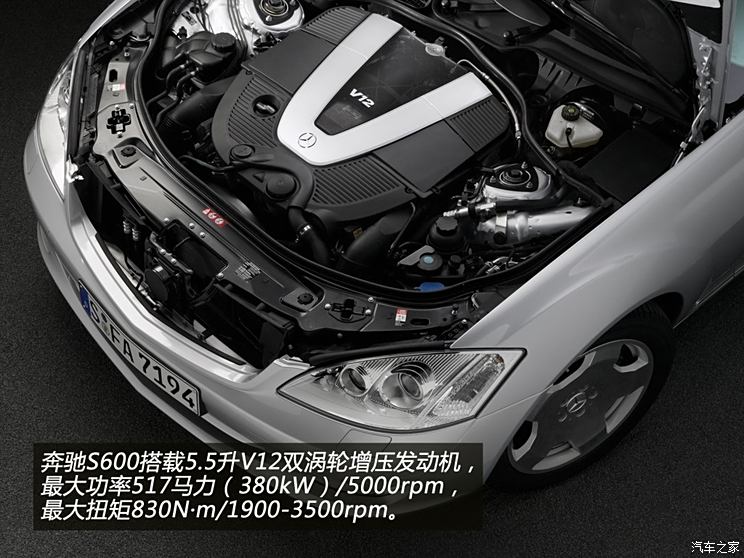
In terms of power, the ninth-generation Mercedes-Benz S-Class provided a 272-horsepower 3.5-liter V6 engine and a 388-horsepower 5.5-liter V8 engine at the beginning of listing. At the beginning of 2006, Mercedes-Benz S320 CDI, S450, S600 and models equipped with 4MATIC four-wheel drive system appeared in the ninth generation S-class family camp. The S320 CDI is equipped with a 3.2-liter V6 twin-turbo diesel engine with a maximum power of 235 HP (173 kW)/3,600 rpm and a maximum torque of 540 N m/1,600-2,400 rpm. The engine is matched with a 7-speed automatic manual transmission, with an acceleration time of 7.5 seconds at 0-100km/h and a comprehensive fuel consumption of only 8.5 liters per 100 km. The S600 with a 5.5-liter twin-turbocharged V12 engine has increased its power from 500 horsepower of the previous generation S600 to 517 horsepower, and its torque has also increased from 800N·m to 830 N m.
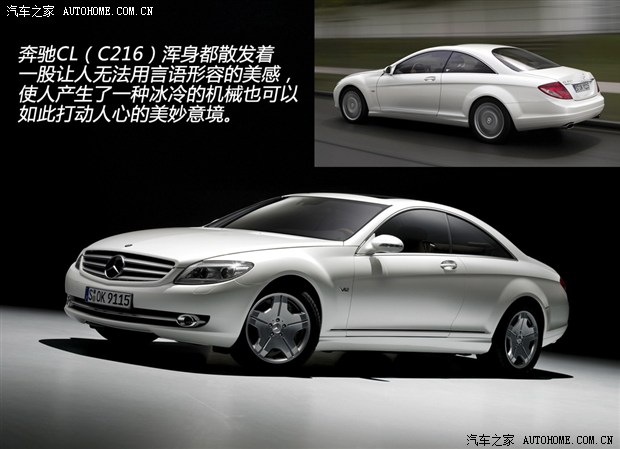
The year after the launch of the ninth-generation Mercedes-Benz S-Class sedan, the coupe CL 600 (C216) based on the ninth-generation Mercedes-Benz S-Class chassis was officially unveiled at the Paris Motor Show. Compared with the ninth generation S-class sedan, CL coupe is more plastic in appearance. Its overall shape is as smooth and smooth as flowing water, and CL coupe, which integrates many excellent designs of Mercedes-Benz S-Class sedan, is more perfect in detail design. The curved rear window and more dynamic tail shape give CL coupe unparalleled mechanical beauty.
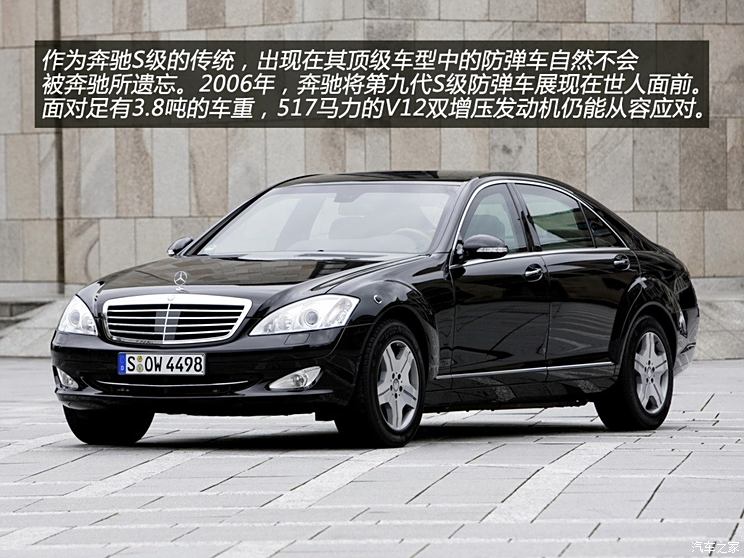
At the same time, an indispensable bullet-proof model in Mercedes-Benz S-Class series also officially appeared in 2006. In order to achieve excellent safety protection performance, Mercedes-Benz has wrapped the carriage of S600 bulletproof car with armor made of high-tech materials, and Mercedes-Benz provides S600 bulletproof cars with B4 and B6/B7 protection levels for customers to choose from. Mercedes-Benz S600 bullet-proof vehicle (B6/B7 class) wearing "armor" weighs 3800kg, but with the powerful V12 twin-turbo engine, its top speed can still reach 210 km/h.
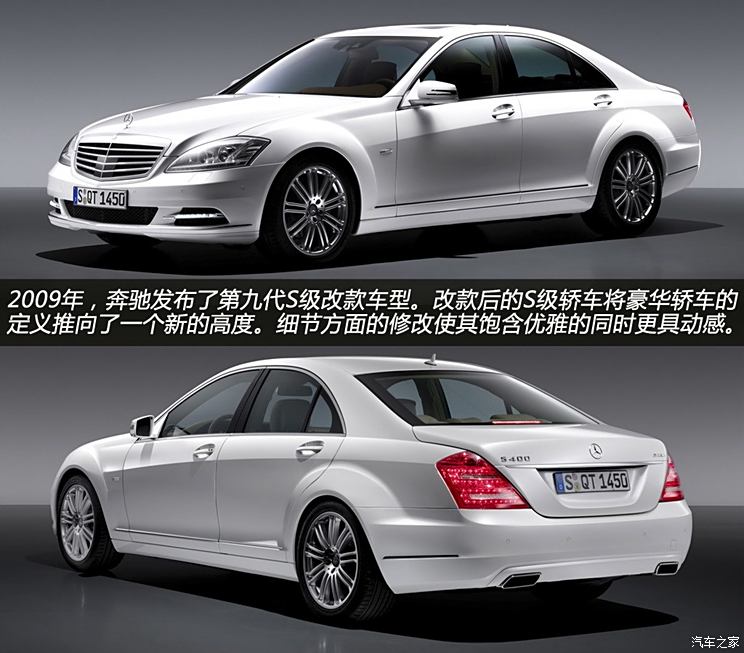
In 2009, Mercedes-Benz released a modified model of the ninth generation S-Class sedan. The lower end of the shield-shaped air intake grille is sharper, which also makes the overall visual effect of the front more downward. Headlight shape has not changed much. In order to meet the standards of driving safety in European countries, LED daytime running lights are applied to S-class. LED taillights with more sensitive brightness and response have replaced the previous traditional light bulbs. After the taillight decorative strip with the same color on the body is cancelled, the double C taillights of Mercedes-Benz S-class are more fashionable and smart.
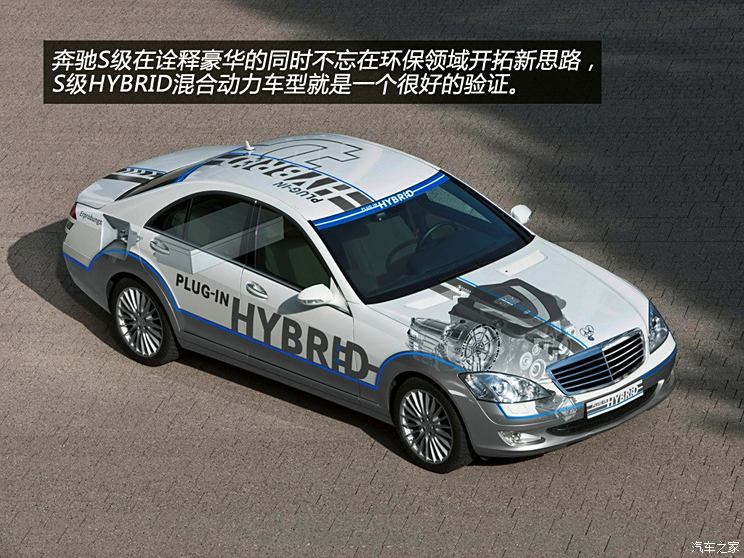
Mercedes-Benz S-Class not only pays attention to elegant design and luxurious quality, but also does not forget environmental protection. Together with other Mercedes-Benz S-Class modifications, there is also a hybrid vehicle named S400 HYBRID. S400 HYBRID uses lithium-ion battery, the 279-horsepower 3.5-liter V6 engine equipped with S350 and a 20-horsepower (15kW) motor as power source, with maximum power. Because of the use of lithium-ion batteries, lithium-ion batteries are lighter and more effective than those of hybrid vehicles using nickel-hydrogen batteries. With the brake energy recovery system, the fuel economy of this car has been significantly improved.
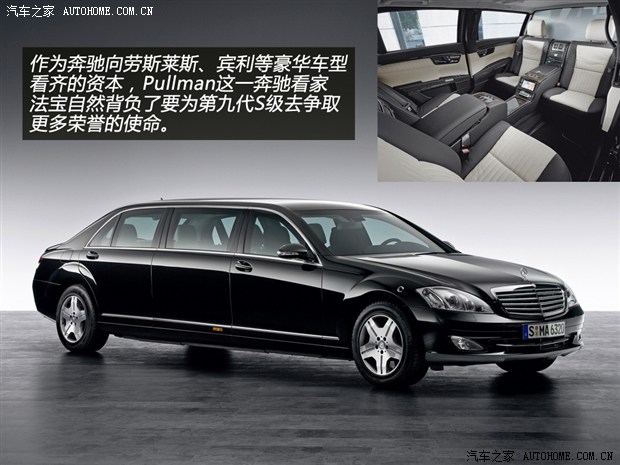
Pullman has become an important model for Mercedes-Benz to compete with top luxury cars such as Rolls-Royce and Bentley, and this valiant soldier in the ninth-generation Mercedes-Benz S-Class series will naturally not be absent. In 2008, Mercedes-Benz launched S600 Pullman, which is a top model specially designed for politicians, dignitaries, business leaders and popes from all over the world. The dimensions of S600 Pullman are 6356mm long, 1871mm wide, 1500mm high and 4315mm wheelbase. Faced with a huge body of 4500kg, the 5.5-liter twin-turbocharged V12 engine can still comfortably push this solid "moving castle".
?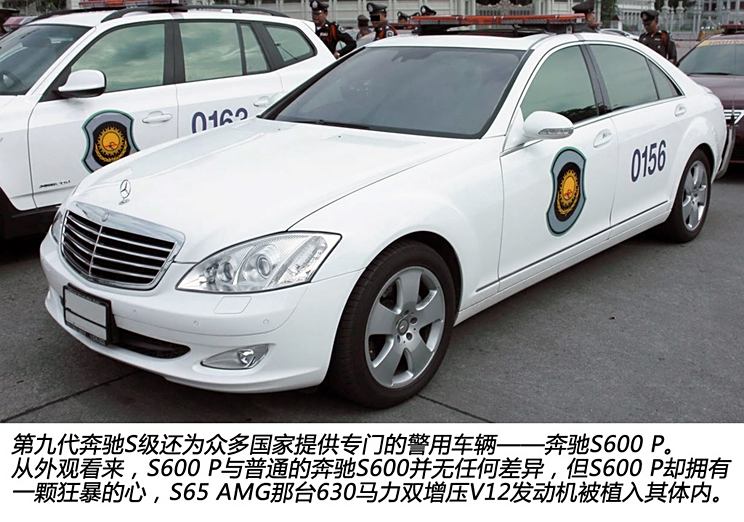
It is worth mentioning that the ninth-generation Mercedes-Benz S-Class also provides special S600 P models for police in some countries. Mercedes-Benz S600 P is quite similar to the standard S600, but it is equipped with the 6.0-liter twin-turbo V12 engine of S65 AMG, with a maximum power of 630 HP (463 kW)/4,600-5,000 rpm and a maximum torque of 1,000 N m/2,300-4,300 rpm. Mercedes-Benz S600 P optional equipment includes police equipment such as warning lights, sirens, gun racks and prisoner cages. Many countries around the world have equipped S600 P police vehicles. For example, S600 P equipped with B6/B7 armor is used by Mexican police to escort important people. It is said that the public security department of Guangzhou in China has also bought a small number of Mercedes-Benz S600 P police cars.
?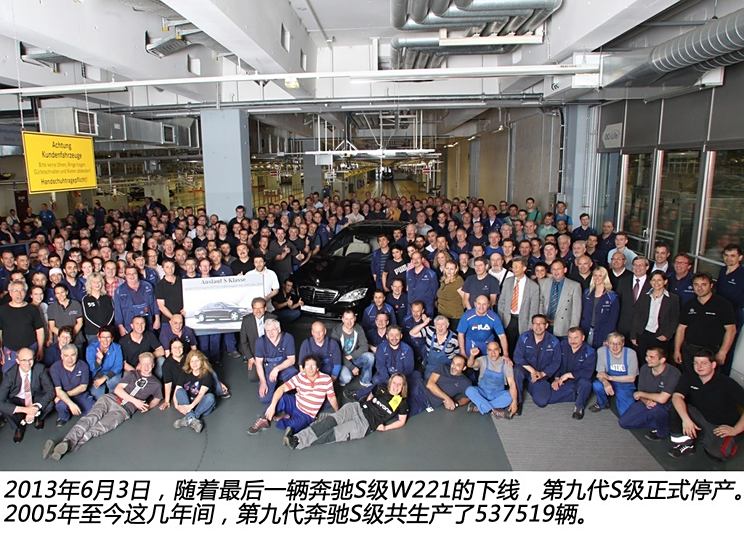
In June 2013, the last ninth-generation Mercedes-Benz S-Class sedan drove off the assembly line of the Schindler Fingen factory. Since its birth in 2005, the ninth generation S-Class has produced a total of 537,519 vehicles, which is also the most successful generation of Mercedes-Benz S-Class since W126. The last W221 S-Class sedan was permanently collected by Mercedes-Benz Museum.
The 9th generation Mercedes-Benz S-Class (W221) is in China.
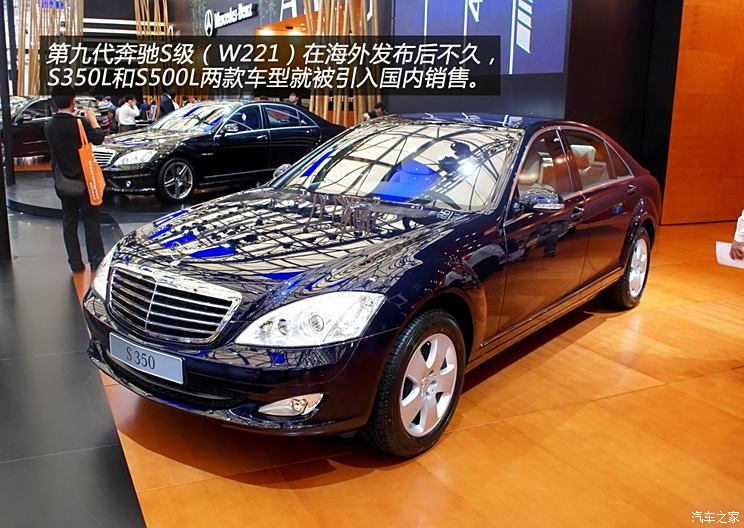
The ninth generation Mercedes-Benz S-Class (W221) is the most familiar to us. After its release in 2005, W221 was introduced into the domestic market immediately. Mercedes-Benz S-Class imported to China in advance is S350L with a price of 1.288 million yuan and S500L with a price of 1.618 million yuan. On May 20th, 2006, German BRABUS also officially landed in China and brought two S350 cars.
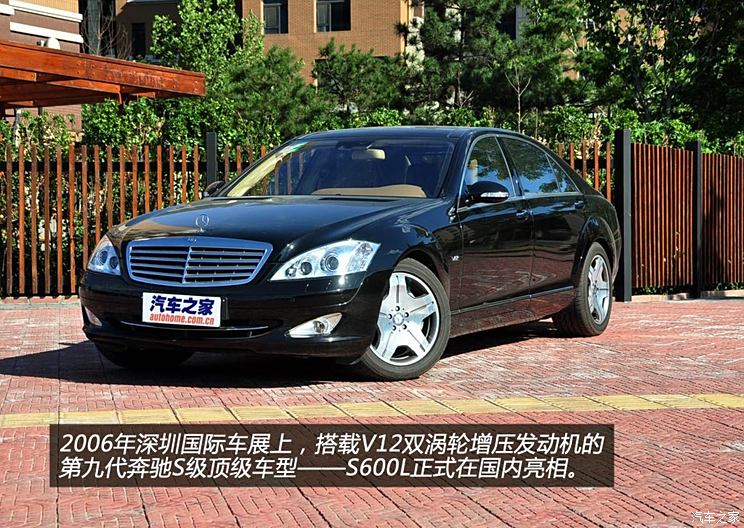
In August, 2006, in the 10th Shenzhen International Automobile Exhibition, S600, the ninth generation Mercedes-Benz S-class top model, was officially unveiled in China. At the auto china in 2006, S300L, an S-class entry-level model of Mercedes-Benz, was officially listed in China. At that time, the price of 993,000 yuan also made this flagship model of Mercedes-Benz acceptable to more users eager to have S-class. Since then, Mercedes-Benz S600L and S65 AMG have also been listed in China.
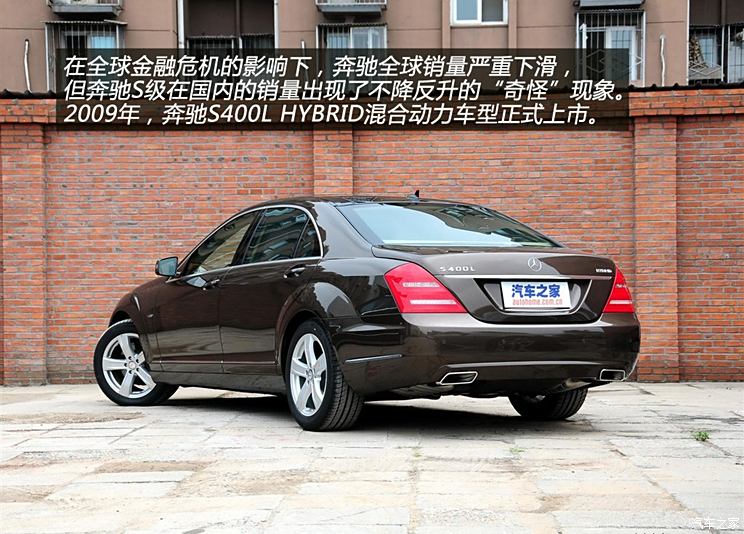
In June 2008, the Mercedes-Benz S350 four-wheel drive model S350L 4MATIC with a price of 1.398 million yuan was officially listed in China. Under the impact of the financial crisis, Mercedes-Benz’s global sales declined seriously. However, in the China market, Mercedes-Benz S-class luxury cars have not been affected at all. On the contrary, sales have continued to increase, and China has become the largest market of Mercedes-Benz S-class in the world. In April 2009, the 2010 Mercedes-Benz S-Class and S400 hybrid vehicles were officially unveiled at the Shanghai International Auto Show.
Tenth generation Mercedes-Benz S-Class
W222 series (2013-present)
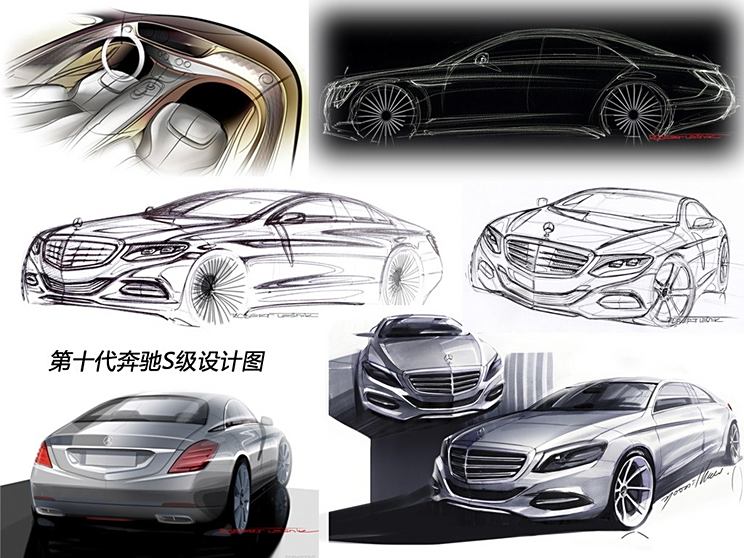
As the successor of Mercedes-Benz W221, the design of the 10th generation Mercedes-Benz S-Class W222 has been started since 2009. The 10th generation Mercedes-Benz S-Class designed by Il-hun Yoon and Robert Lesnik has once again made the world appreciate the extraordinary king charm of Mercedes-Benz, the flagship model.
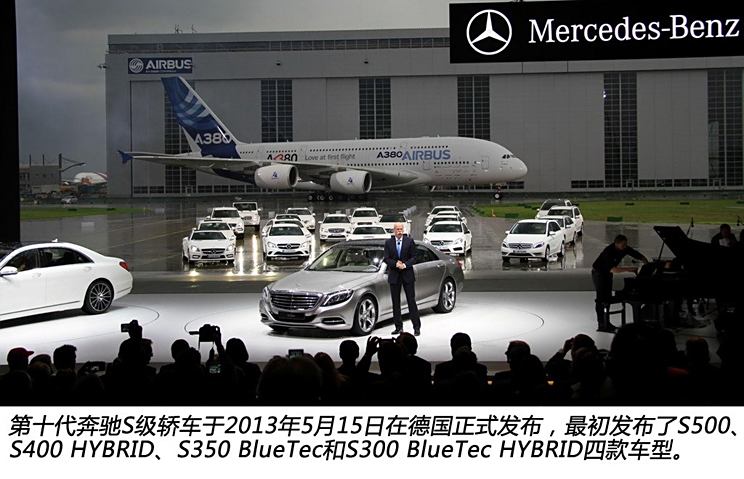
On May 15th, 2013, the launch ceremony of the 10th generation Mercedes-Benz S-Class was held in Hamburg, Germany. According to different models, the price of the 10th generation Mercedes-Benz S-Class in the German market ranged from 79,789.5 euros (about 630,000 yuan) to 107,635.5 euros (about 850,000 yuan).
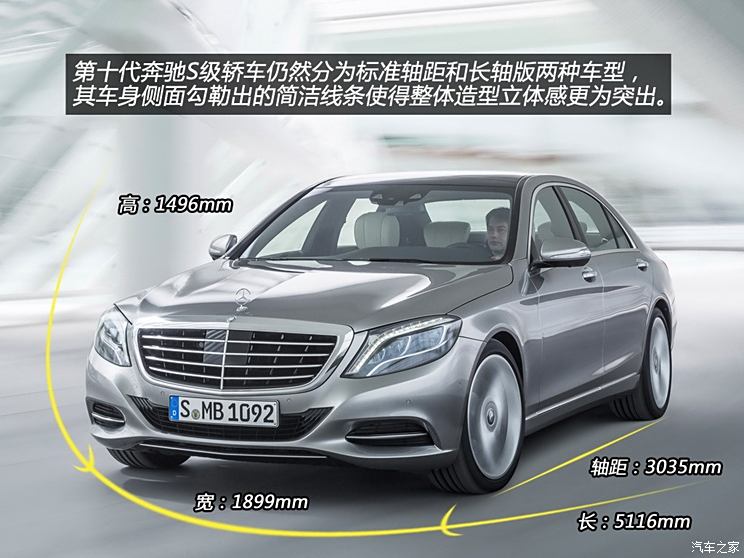
The 10th generation Mercedes-Benz S-Class still has two models: the standard wheelbase and the long-axle version. The standard wheelbase is 5116mm, the width is 1899mm, the height is 1496mm, and the wheelbase is 3035mm. The long-axle version has a length of 5246mm and a wheelbase of 3165mm. From the side, the new S-class is still very stable, and the side of the car body outlines a sense of dignity with simple lines. At present, the new S-Class has launched several models such as S500 (S550 in North America), S400 HYBRID and S350 BlueTec.
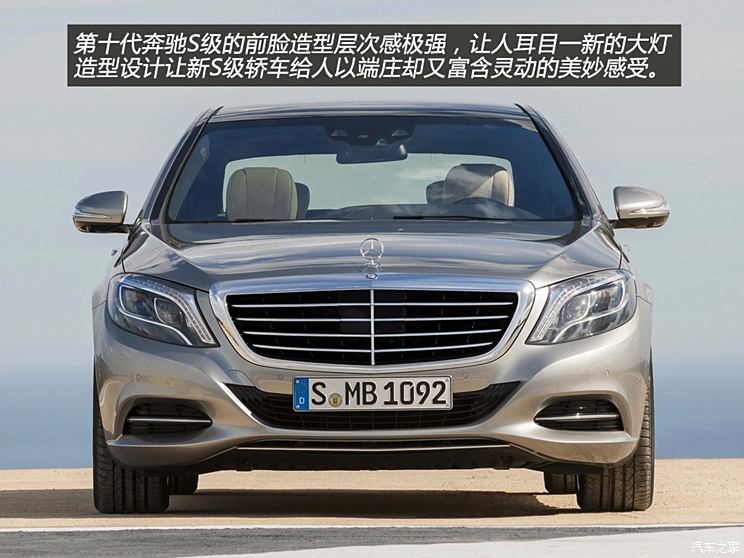
Compared with the previous generation, the tenth generation Mercedes-Benz S-Class is more sporty and particularly luxurious, which adopts the brand-new family front face design of Mercedes-Benz. From the front of the car, the expression of the new S-class "face" is extremely rich. Although it has evolved for decades, even the fashionable new Mercedes-Benz S-class, the classic air intake grille shape is still one of the indispensable and important design elements. The bottom air intake grille has a "smile" inverted trapezoidal shape. In addition, Mercedes finally realized the importance of making a fuss about headlights. Headlights are quite innovative in shape, and LED daytime running lights are generally embedded in them because of eyebrows, which makes the new S-class LED headlight group more vivid.
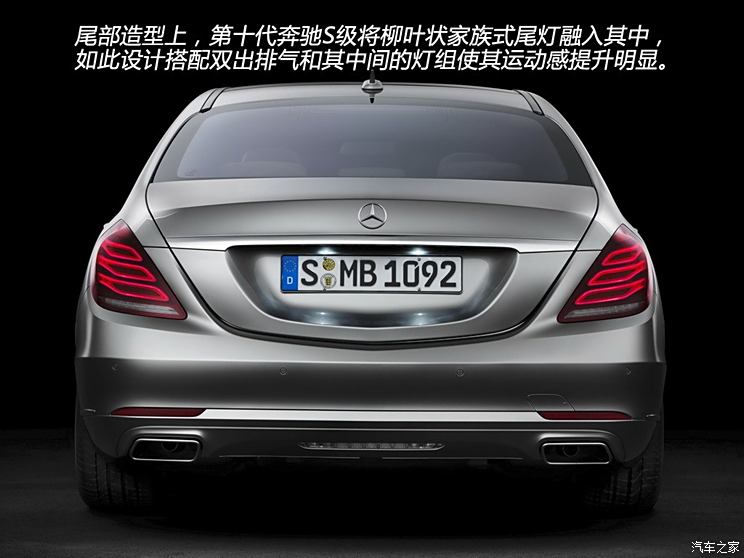
Judging from the rear design of the tenth generation Mercedes-Benz S-Class, the new S-Class rear design is more agile and layered than the previous generation. After careful observation, it is not difficult to find that the design inspiration of the new S-Class rear may be inspired by the previous generation S-Class coupe W216. The highlight of the new S-class tail is the willow taillight, which uses three groups of LED light sources, which is also the latest family style of Mercedes-Benz. In addition, it is worth mentioning that there are 12 body colors to choose from in the new generation S-class.
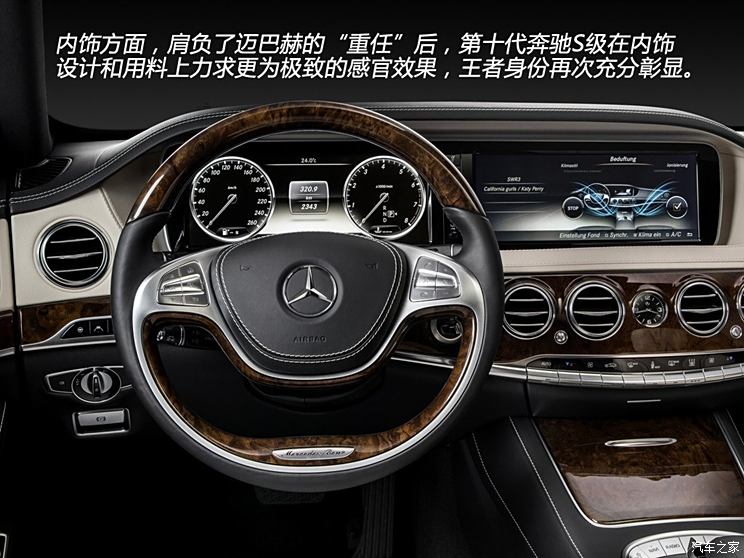
With the discontinuation of Maibakh series, Mercedes-Benz seems to push the 10th generation S-Class to another "flagship" height, which can be deeply understood from the interior design of the new S-Class. Mercedes-Benz once again introduced a large number of leather and wood grain materials into the new S-class interior design. The dual-spoke steering wheel is simple in shape and exquisite in materials, and the exquisite manual stitching in the center of the steering wheel makes people fondle it. The brand-new integral LCD instrument panel is clear and easy to read, and rich in content. Although the interior pattern is similar to that of the previous generation S-class, the application of the retro round air conditioning outlet makes the overall design of the tenth generation S-class interior more noble and elegant.
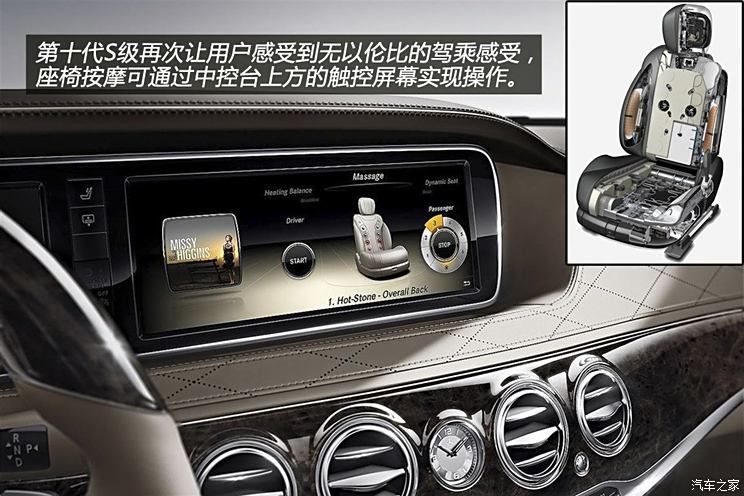
Mercedes-Benz’s "flagship" S-class similar to Maibakh is not only reflected in the interior design, but also in the configuration of the new S-class. For the first time, the new S-Class can be equipped with the top-class sound system of Burmester. The unique AIR-BALANCE air conditioning system in the car has the functions of active fragrance, negative ion release and air filtration. The system consists of a unique perfume tank and air bypass system in the glove box. This configuration is developed from the fragrance system assembled on the model of Zeppelin in Maibakh. In addition, the new S-class is equipped with an ENERGIZING seat massage system, which can be adjusted through the COMMAND system screen on the center console.
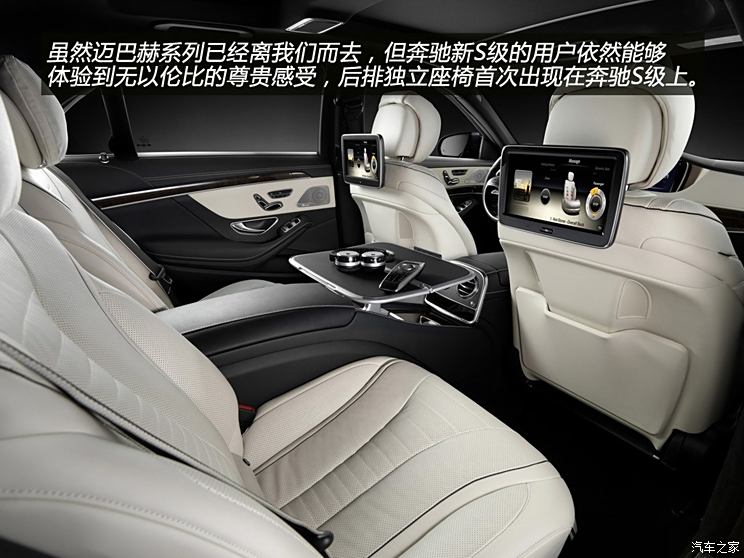
Mercedes-Benz S-Class will take special care of the rear passengers, and the rear passengers of the tenth generation Mercedes-Benz S-Class will enjoy a more distinguished ride. On the new S-class long wheelbase model, the back-row VIPs who missed Maibakh were compensated accordingly. The introduction of rear independent seats, foldable small tables, rear independent entertainment system and retractable leg supports makes the rear passengers experience the luxury feeling comparable to that of first class. The "soul" of Maibakh still lingers around the tenth generation Mercedes-Benz S-Class.
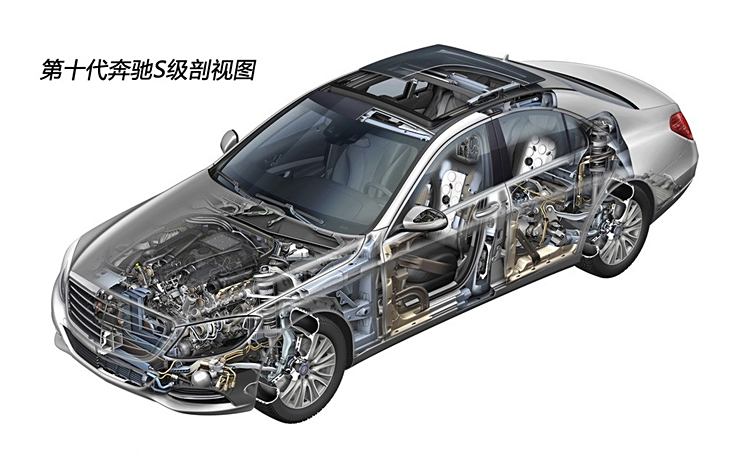
The tenth generation Mercedes-Benz S-Class incorporates the MAGIC BODY CONTROL magic body attitude control system. The new S-Class can detect the uneven road ahead through the stereo camera on the front windshield. The system maintains the horizontal posture of the body by adjusting the damping of the shock absorber, thus making the vehicle like driving on a horizontal road. At present, this system can only be installed on S500 (S550 in North American market), while the new S-class of other models comes standard with active damping system ADS PLUS and enhanced air suspension system.
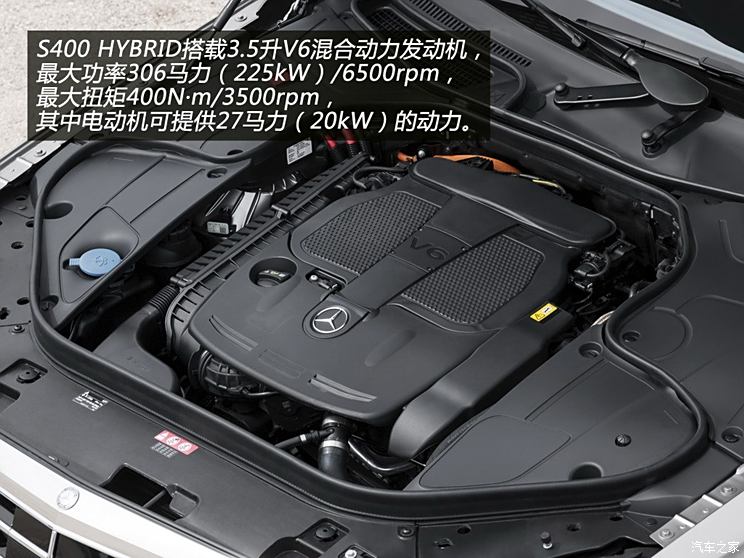
The 10th generation Mercedes-Benz S-Class provides four power configurations in advance. The Mercedes-Benz S400 HYBRID is equipped with a hybrid power system with a 3.5-liter V6 gasoline engine, in which the maximum power of the 3.5-liter V6 engine is 306 horsepower (225kW), while the motor can generate 27 horsepower (20kW) and its maximum torque is 370 Nm. S350 BlueTec with a 3.0-liter V6 diesel engine has a maximum power of 258 HP (190kW) and a maximum torque of 620 Nm. The Mercedes-Benz S300 BlueTec HYBRID with the energy consumption rating of A+ is equipped with a 2.2-liter inline four-cylinder diesel hybrid engine with a maximum power of 204 HP, and its motor can provide 20 HP (15kW). The comprehensive fuel consumption of Mercedes-Benz S300 BlueTec HYBRID is only 4.4L/100km.
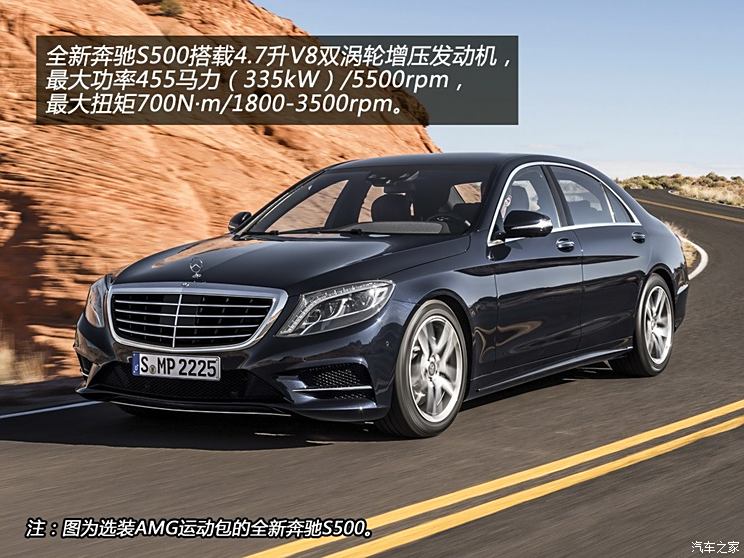
In addition to hybrid vehicles, the new Mercedes-Benz S500, which is equipped with a V8 twin-turbo engine with a displacement of 4.7 liters, has a maximum power of 455 HP (335kW)/5500rpm and a maximum torque of 700 N m/1800-3500 rpm. Matching with the engine is a 7-speed Tronic automatic gearbox, which has an acceleration time of 4.8 seconds from 0 to 100 km/h, a top speed of 250km/h under electronic speed limit, and can reach 307km/h after the speed limit is lifted. In addition, Mercedes-Benz also announced that it will launch the S500 plug-in hybrid vehicle in 2014, and the comprehensive fuel consumption of this new car will be reduced to less than 4 liters per 100 kilometers.
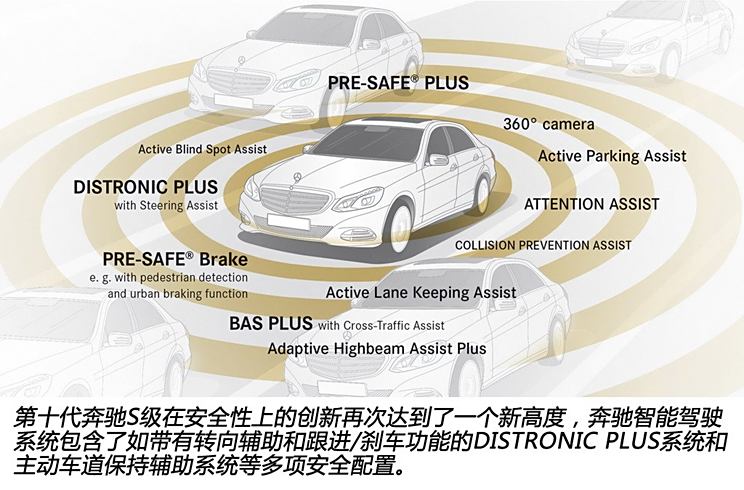
Mercedes-Benz has once again raised the safety configuration of the tenth generation S-Class to a new height. Mercedes-Benz intelligent driving system includes many advanced electronic auxiliary systems, including the DISTRONIC PLUS system with steering assistance and follow-up/braking functions, the active lane keeping auxiliary system, the BAS PLUS auxiliary braking system with traffic intersection assistance functions, the enhanced active high beam auxiliary system, the enhanced PRE-SAFE system and the crosswind auxiliary system.
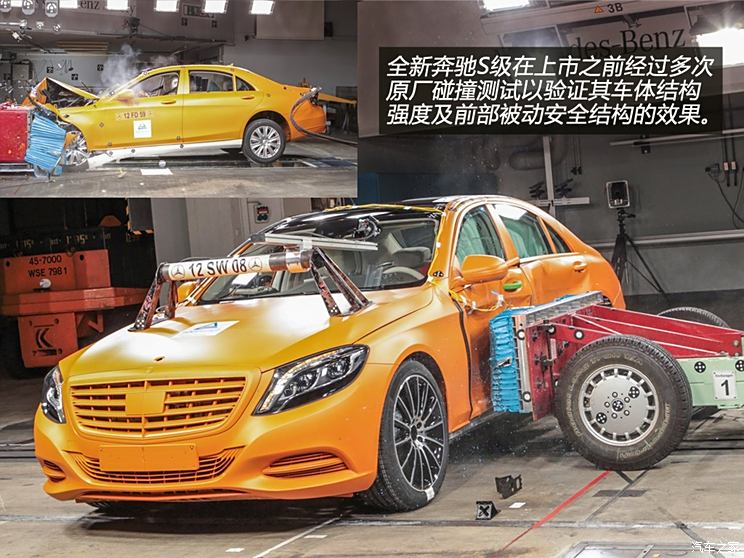
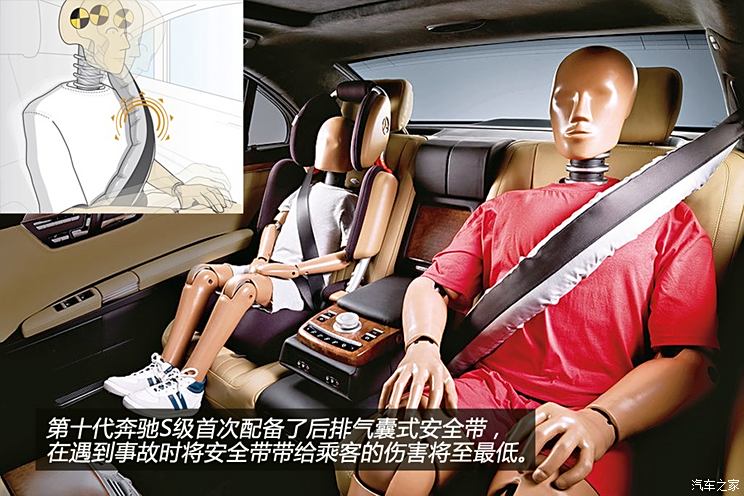
In addition, the tenth generation Mercedes-Benz S-Class is equipped with a rear airbag seat belt system for the first time. When a vehicle collides, the rear seat belt will quickly inflate and expand, thus reducing the damage caused by the seat belt to passengers. The active seat belt system is also introduced for the first time. This system will automatically put away the seat belt system when the door is opened, and the system will automatically adjust the tightness of the seat belt when the passenger puts on the seat belt.
More exciting videos are all on the car home video platform.
With the launch of Mercedes-Benz’s new S-Class sedan, according to the tradition of Mercedes-Benz in the past, the tenth generation of Mercedes-Benz S-Class coupe will naturally not be absent. The car is expected to be officially released at the Frankfurt Motor Show in September this year (click to enter Mercedes-Benz’s new S-Class coupe for exposure). In addition, the new Mercedes-Benz S63 AMG real car also revealed its true body. Mercedes-Benz has released a set of videos of a new generation of S-class mass production. In the video, the new generation of S-class AMG models appeared without camouflage for the first time. The S63 AMG model exposed in this video is expected to be officially released this year (click to enter the new S63 AMG real car exposure of Mercedes-Benz).
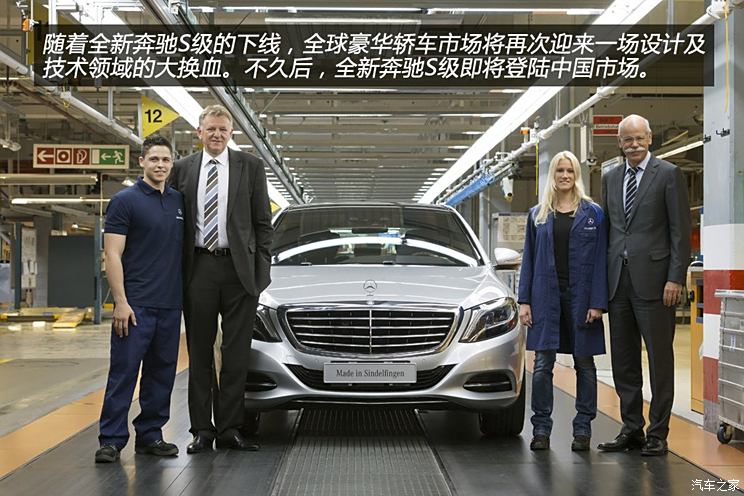
The new Mercedes-Benz S-Class will be officially imported and listed after the launch of Chengdu Auto Show in September this year. The new S-Class launched in advance is only S400 HYBRID with a 3.5-liter hybrid system and S500 with a 4.7L V8 twin-turbo engine. It is expected that these two power systems will be introduced into China. In addition, the new Mercedes-Benz S-Class introduced into China will also be dominated by long-wheelbase models, and we will wait and see their performance.
Summary:
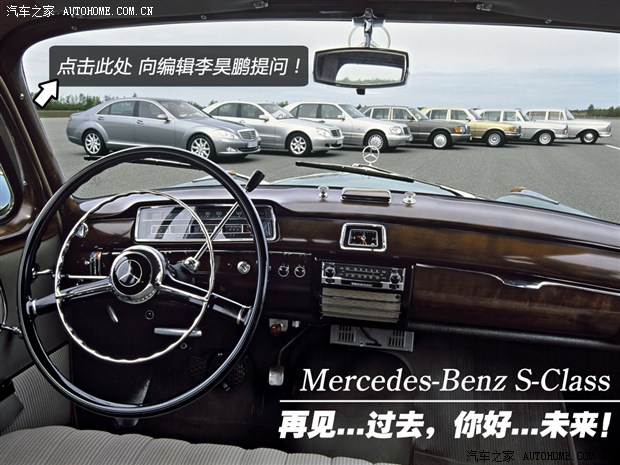
Since 1951, Mercedes-Benz has experienced numerous innovations in design and technology in the following 60 years. The success of Mercedes-Benz S-Class is inseparable from its contribution to the field of automobile design and automobile safety, from the beginning to the emergence of luxury cars in the United States and Britain. At the same time, almost every generation of S-class represents an indelible memory of an era and people’s yearning for identity, rights and status in that era. In a blink of an eye, Mercedes-Benz S-Class has undergone the evolution of nine generations of cars. With the departure of the ninth generation of S-Class, the arrival of the tenth generation of Mercedes-Benz S-Class (W222) will once again become the weather vane of the global luxury cars. A brand-new "S" era is coming. (Photo/Text car home Li Xiaopeng)
?

>>点击汽车之家·文化团队,进入汽车趣意世界<<
关于作者